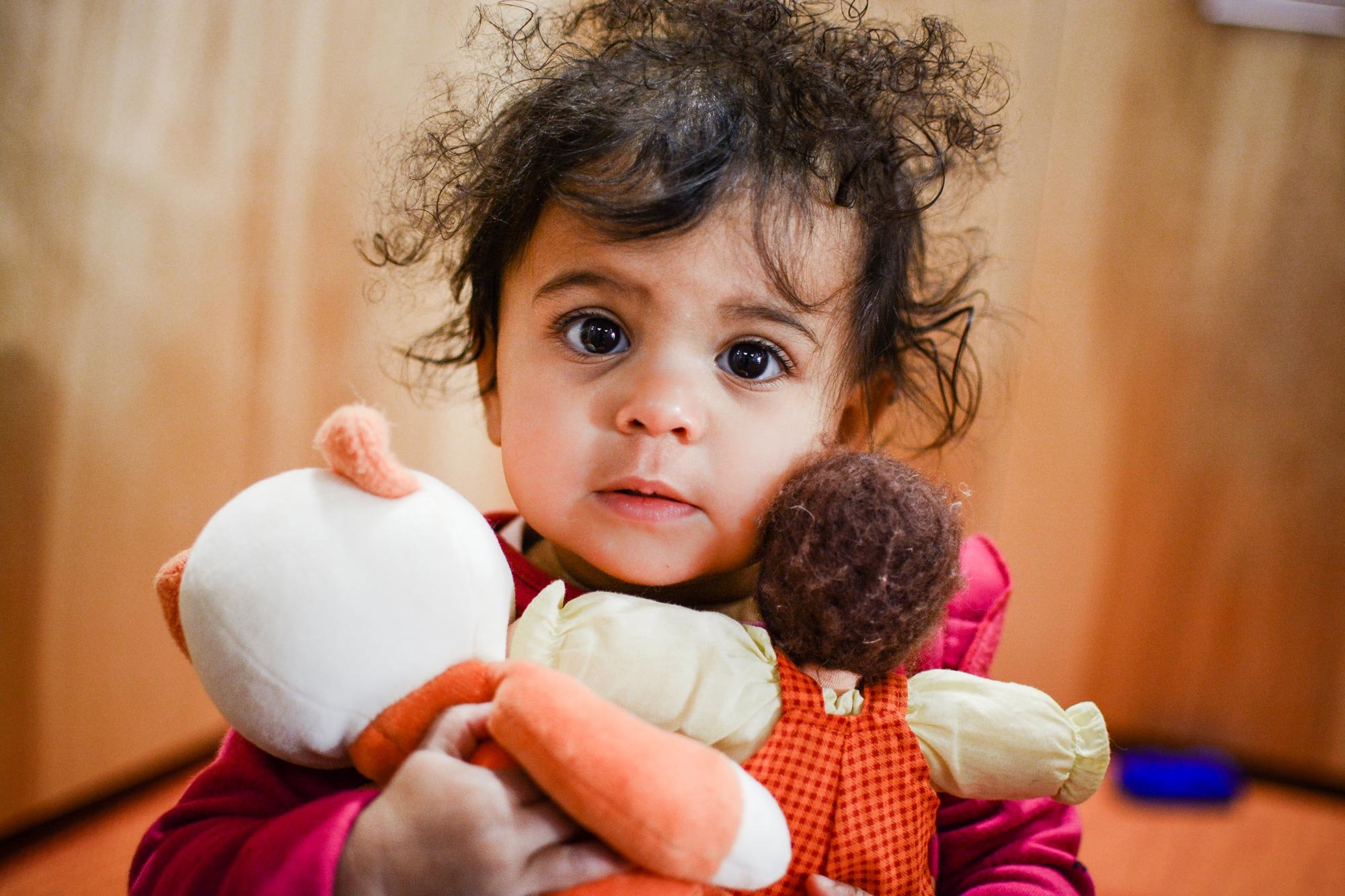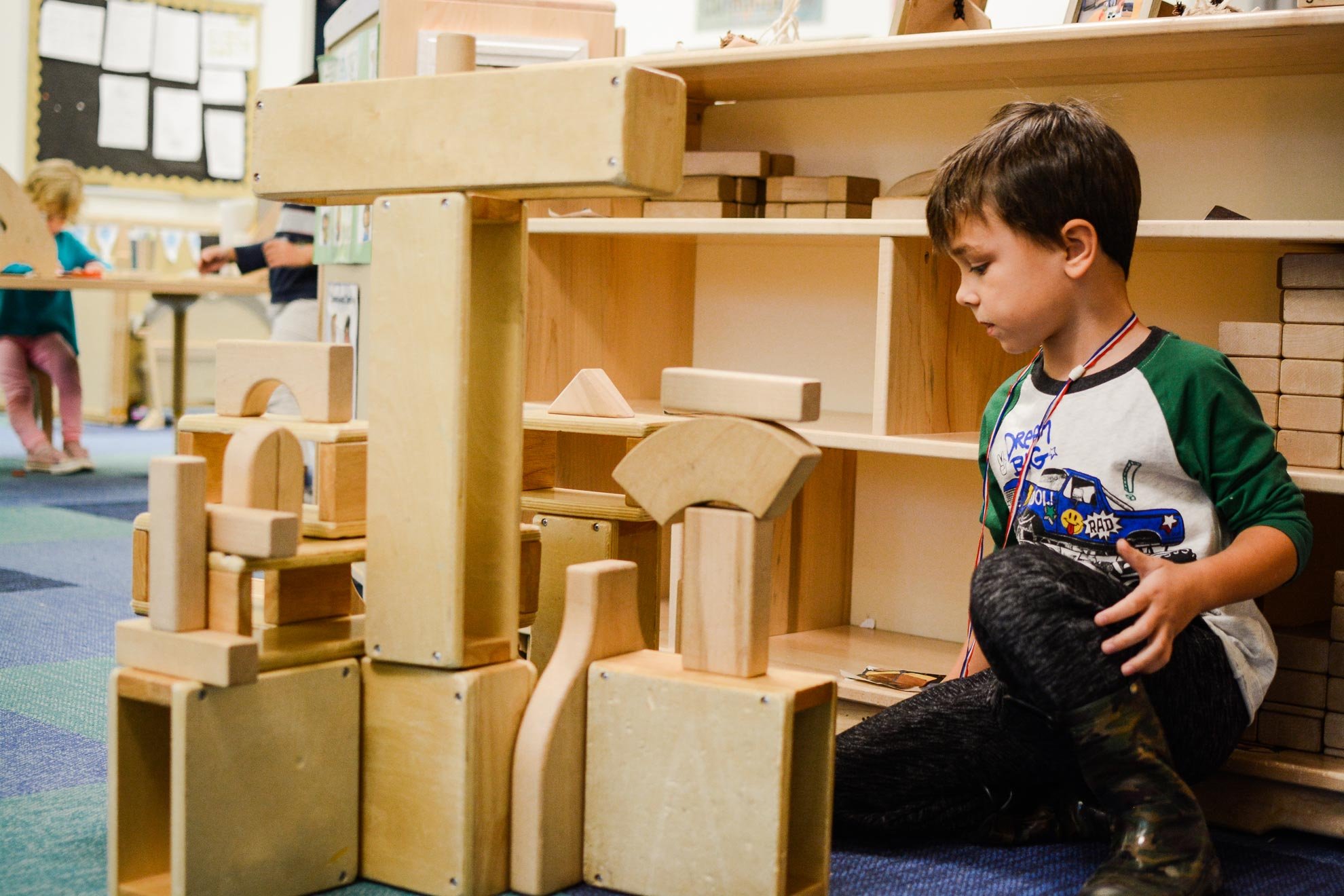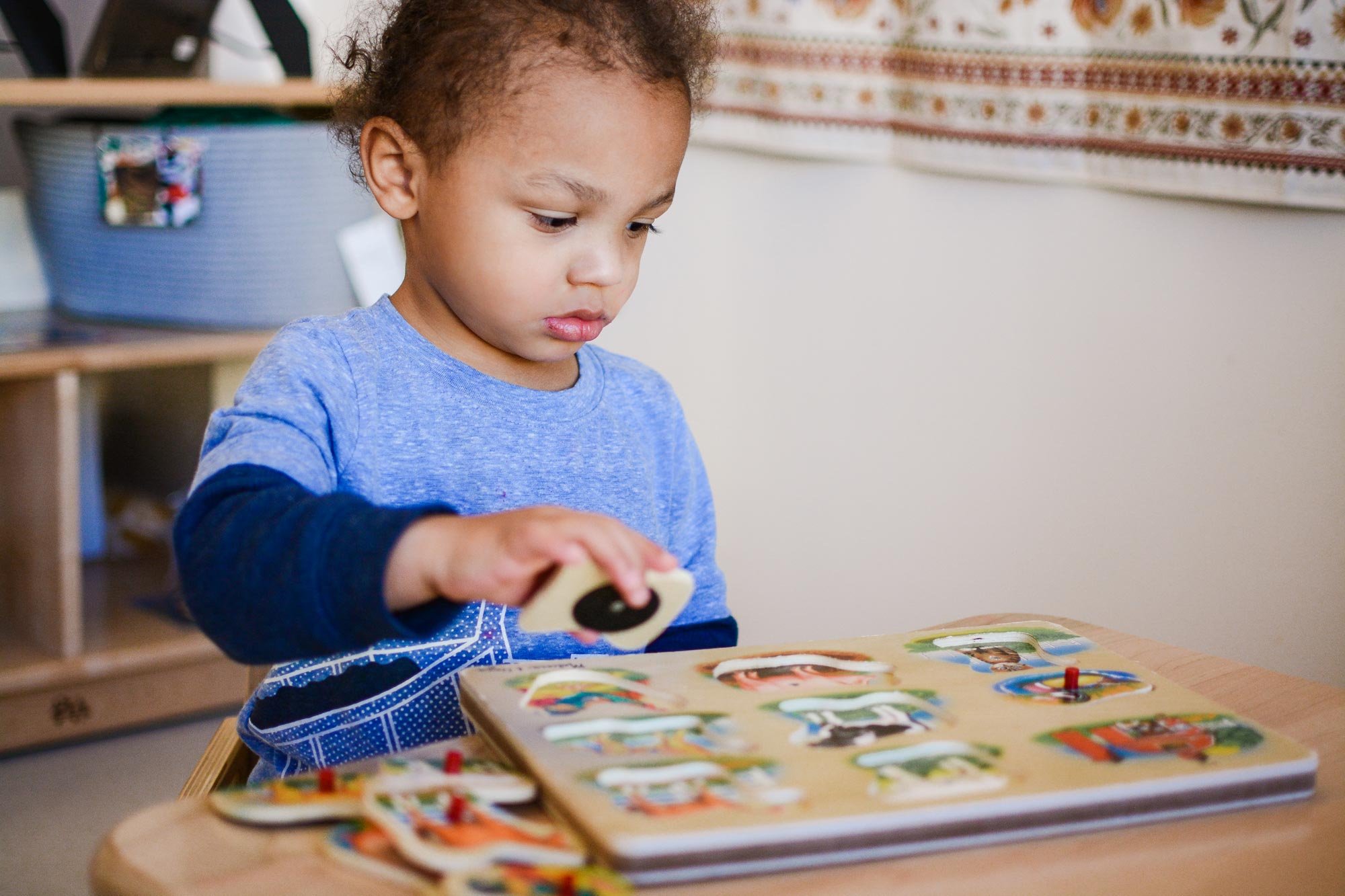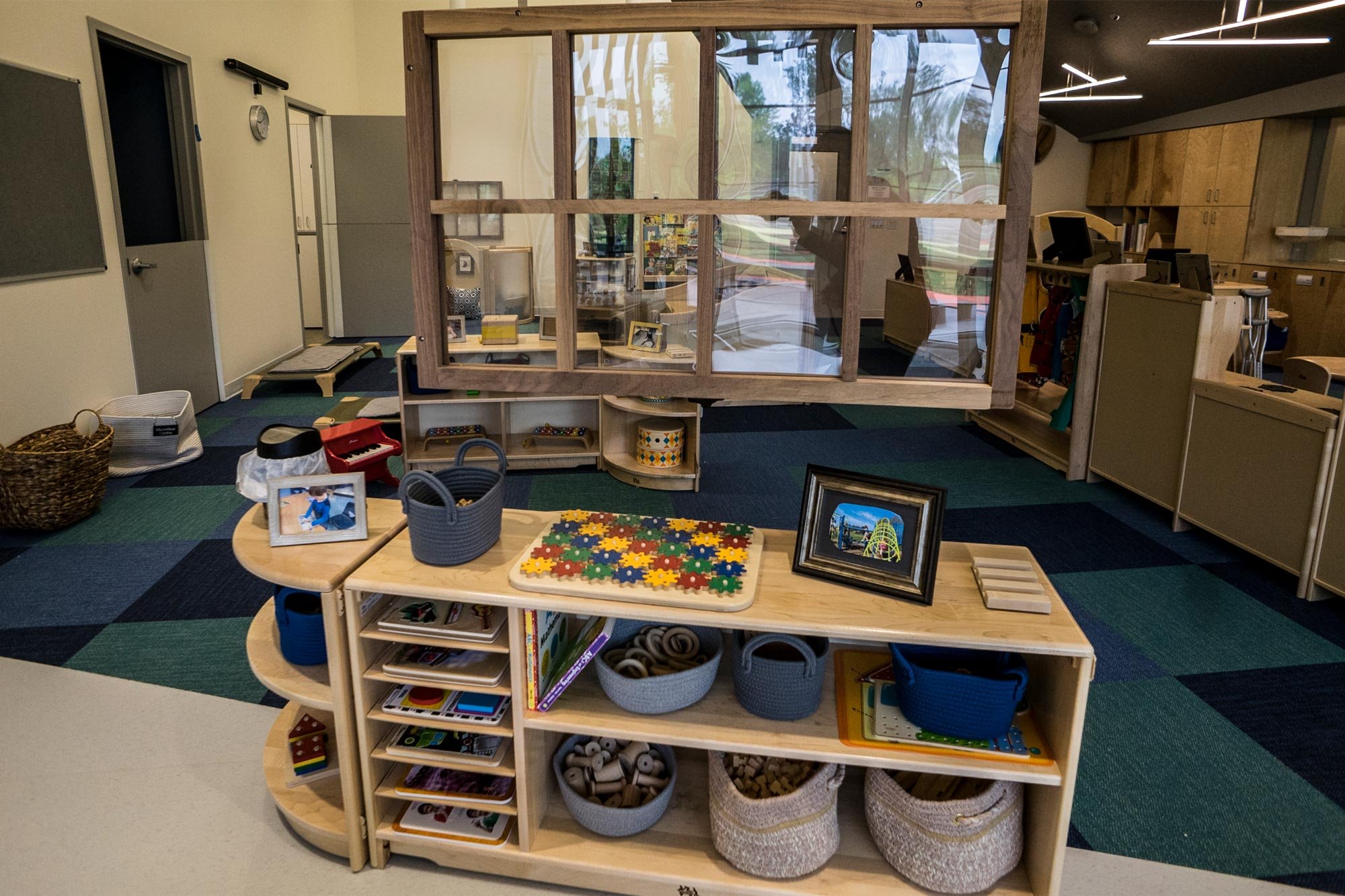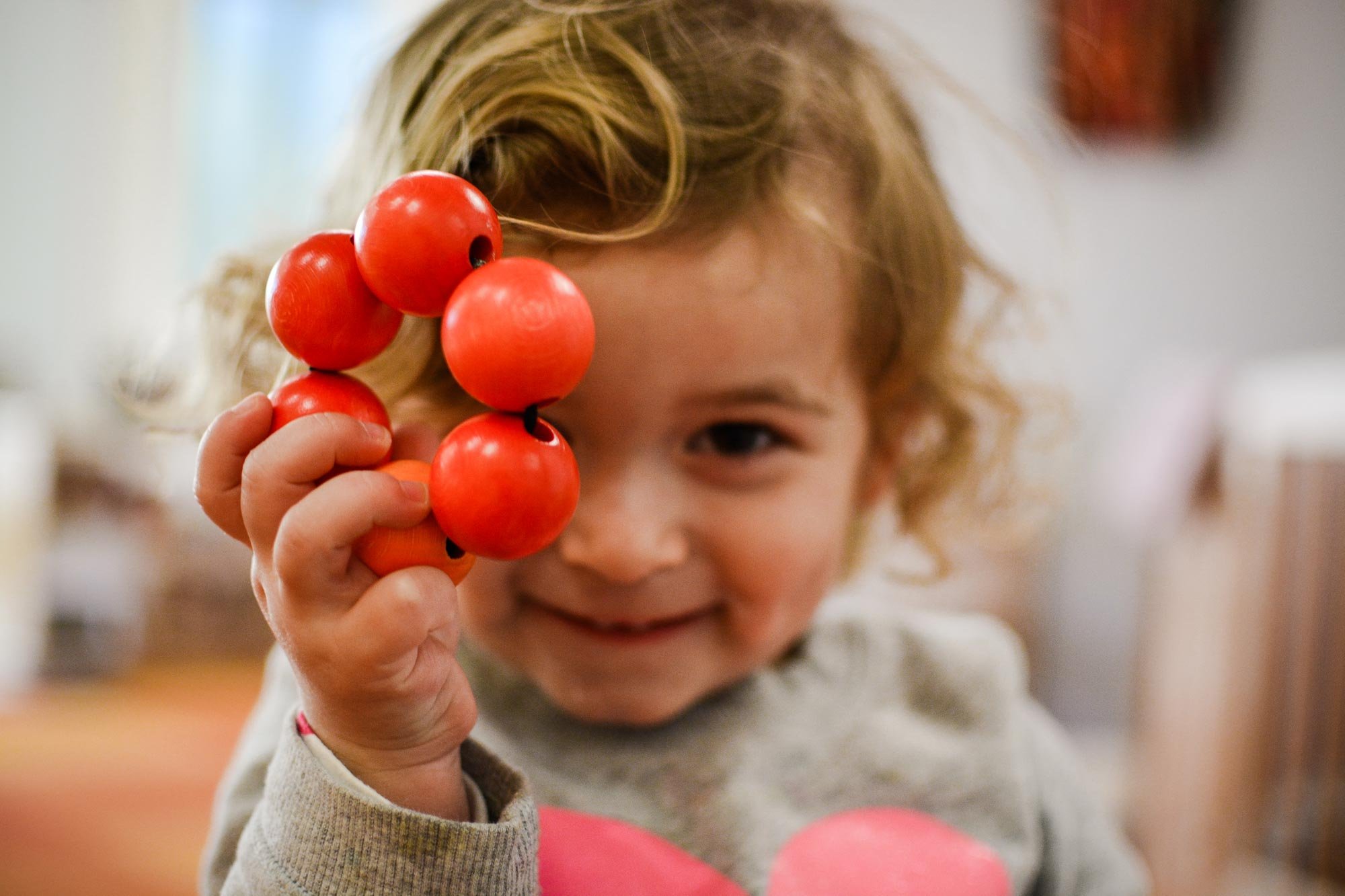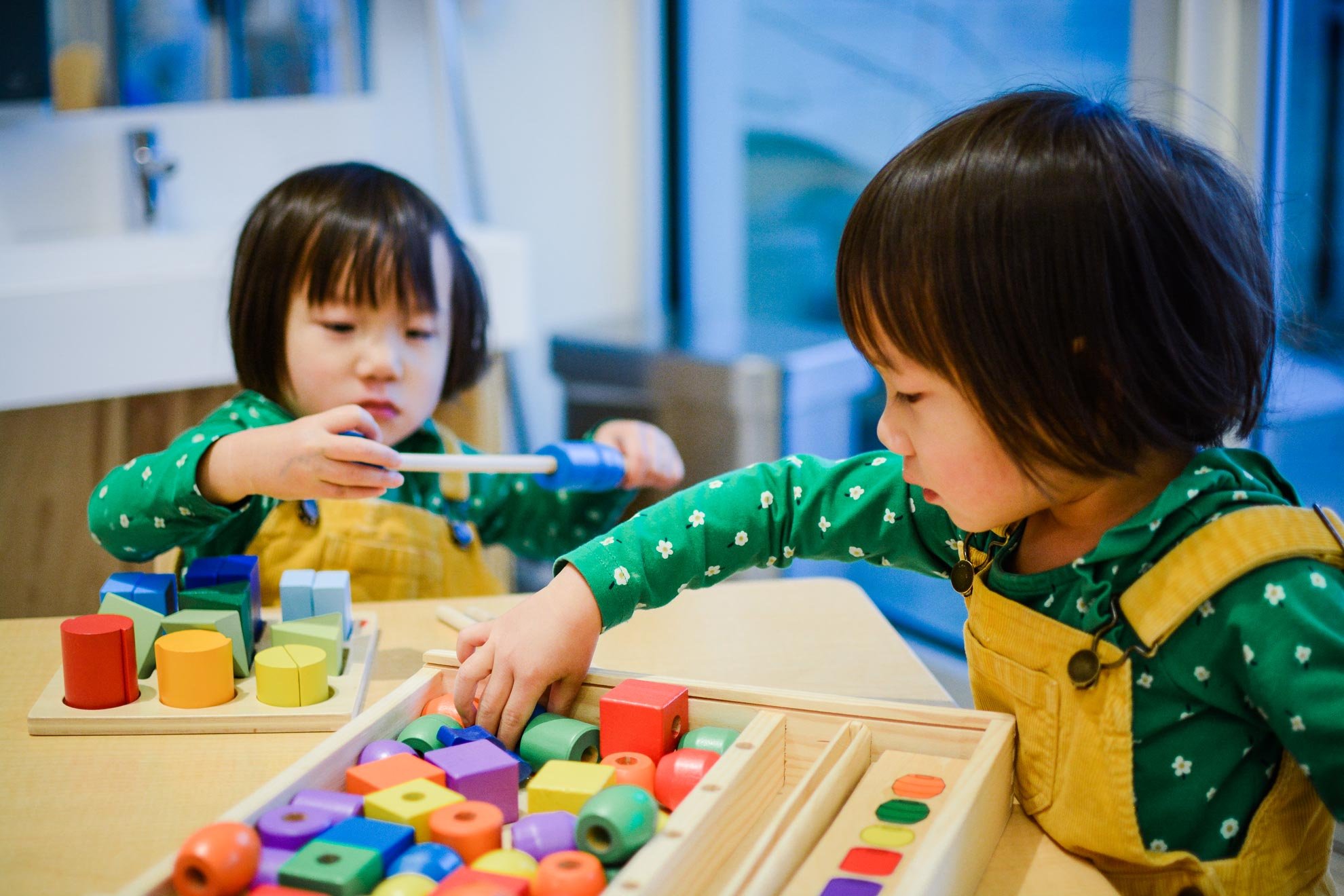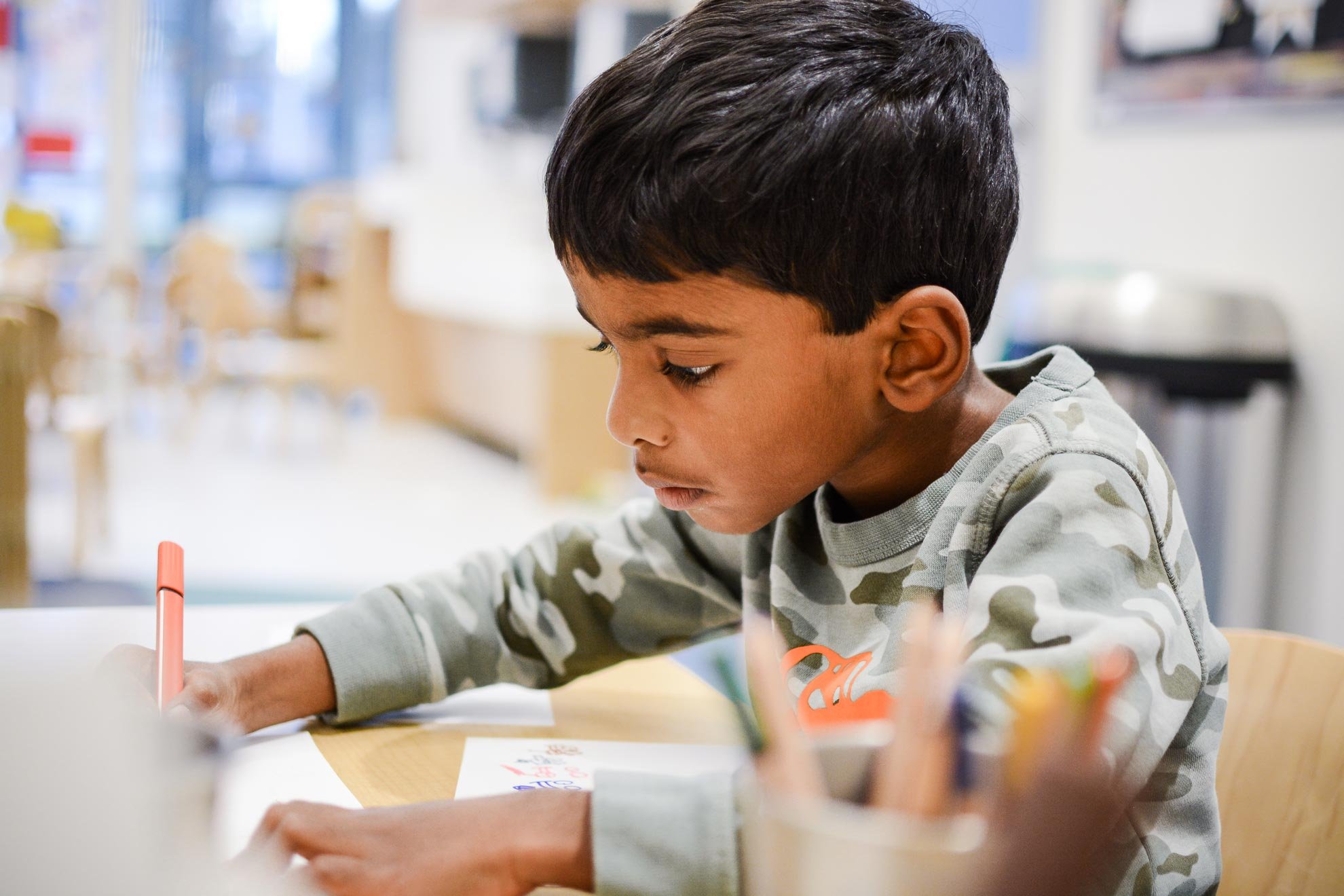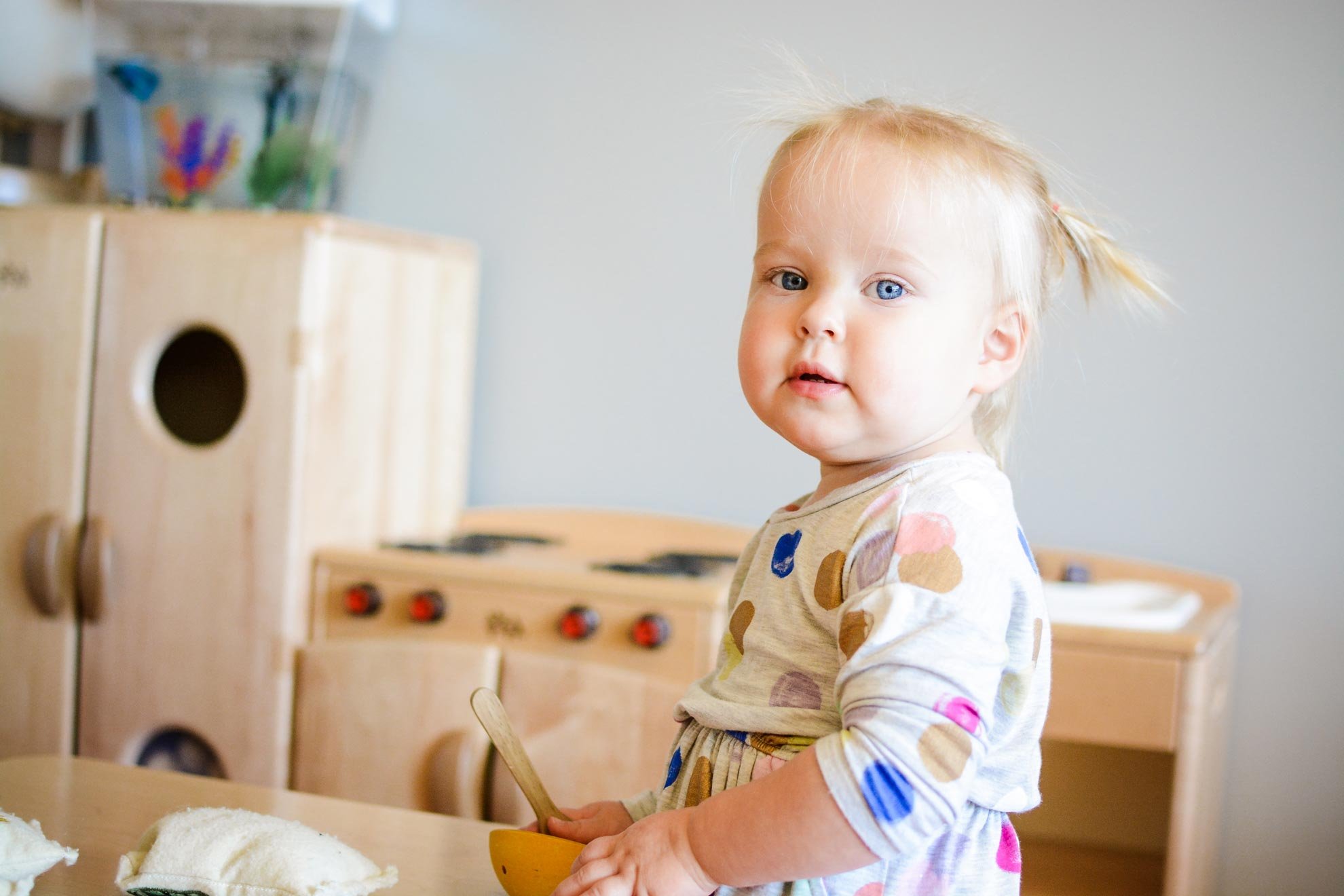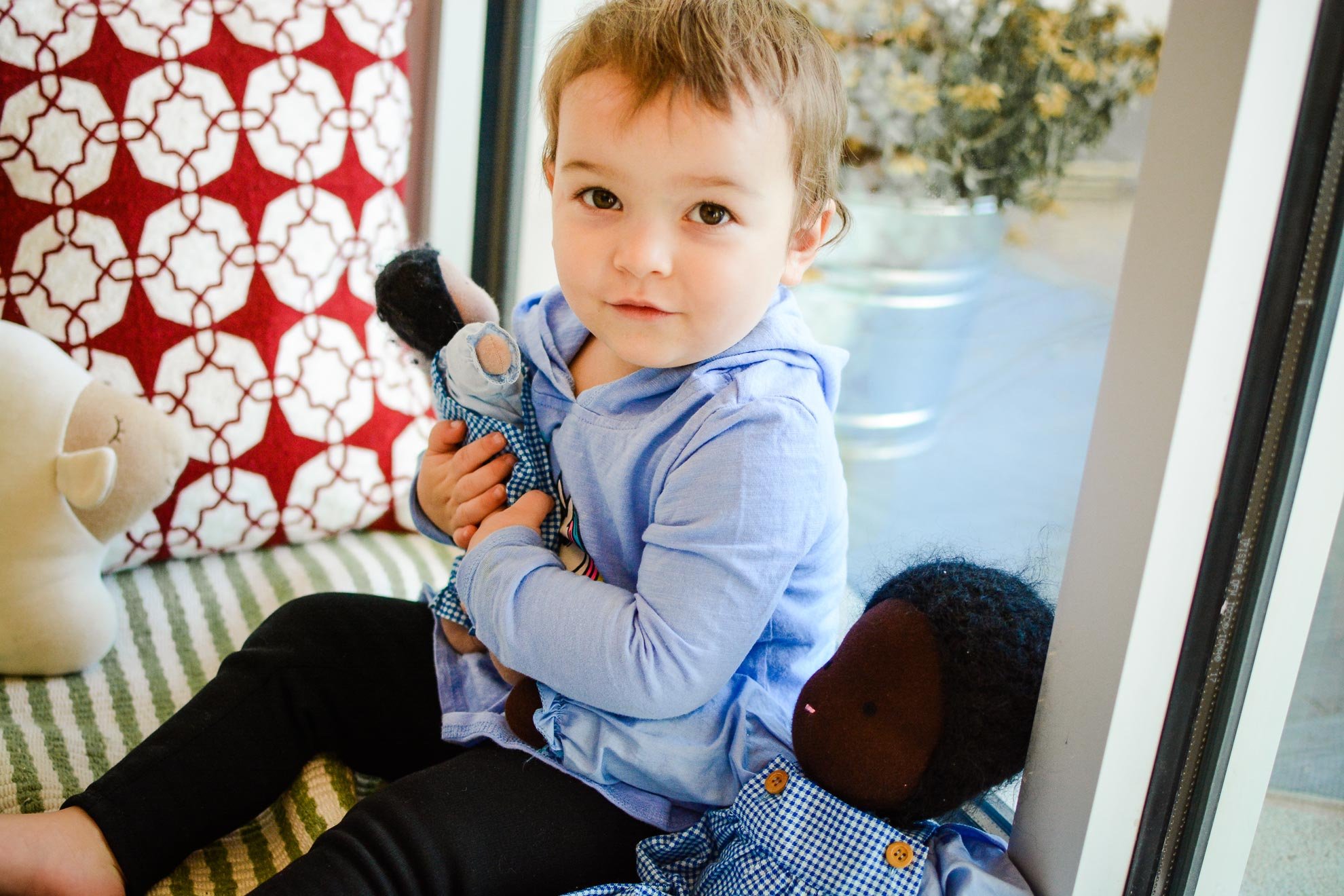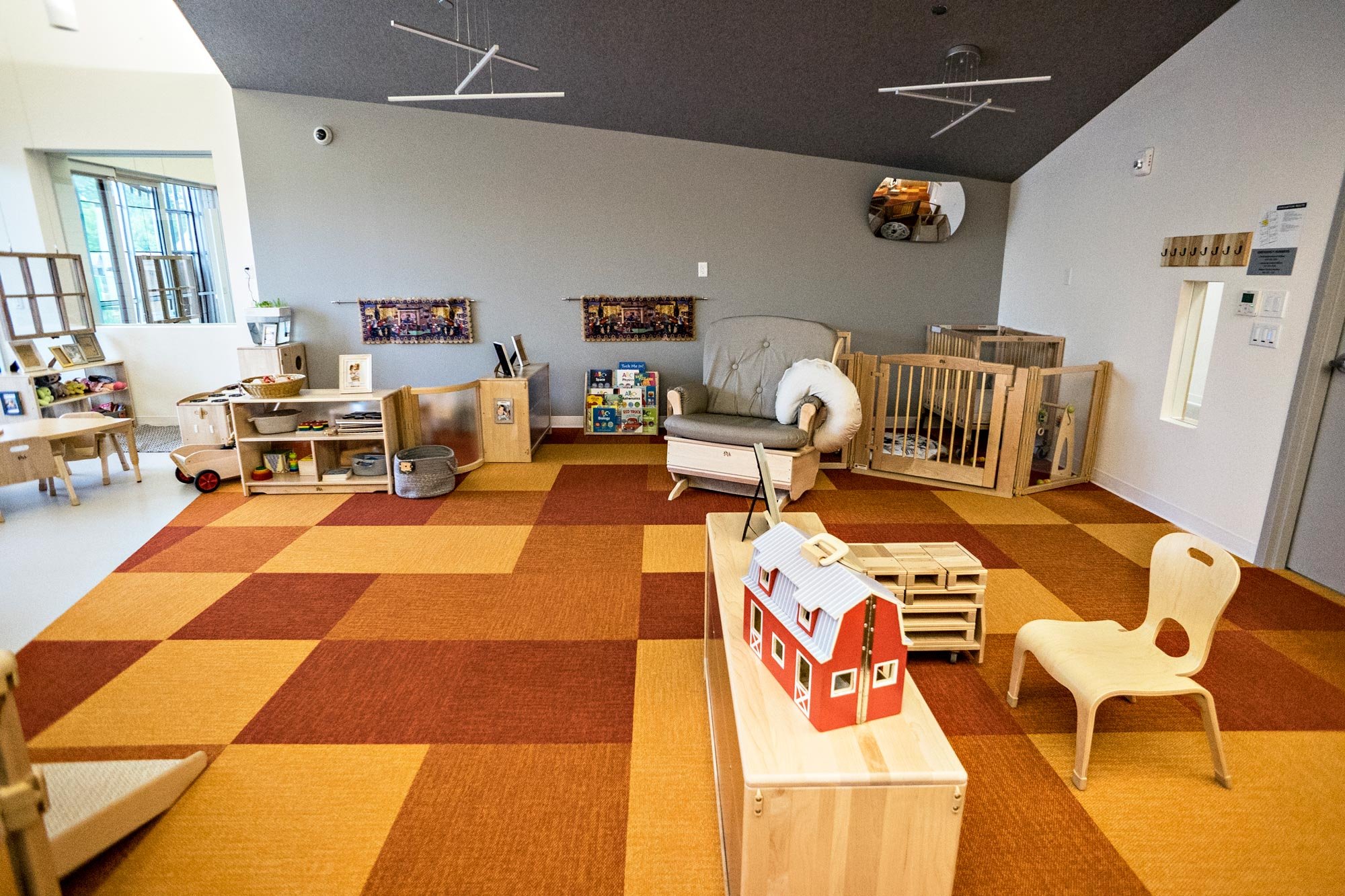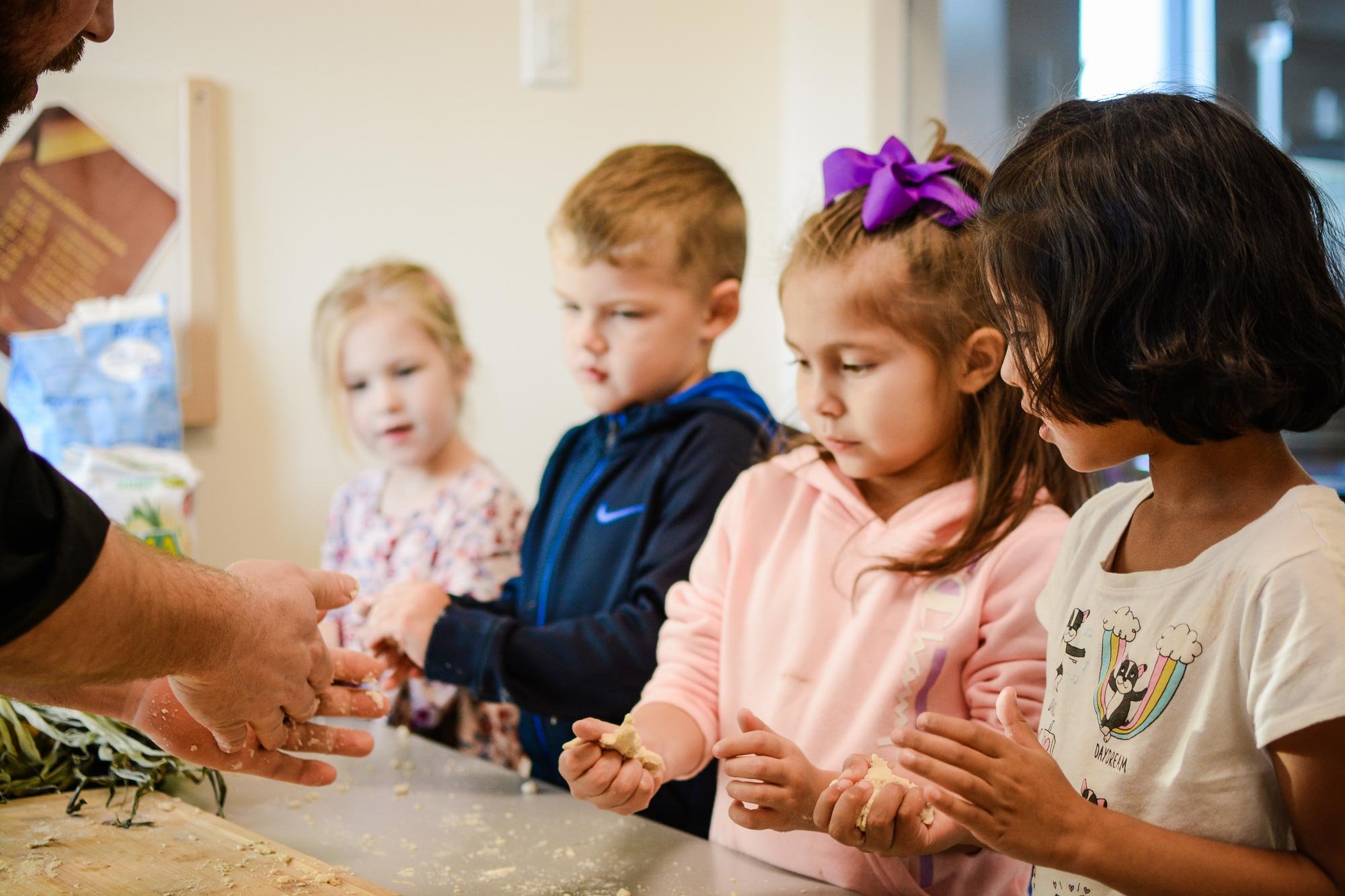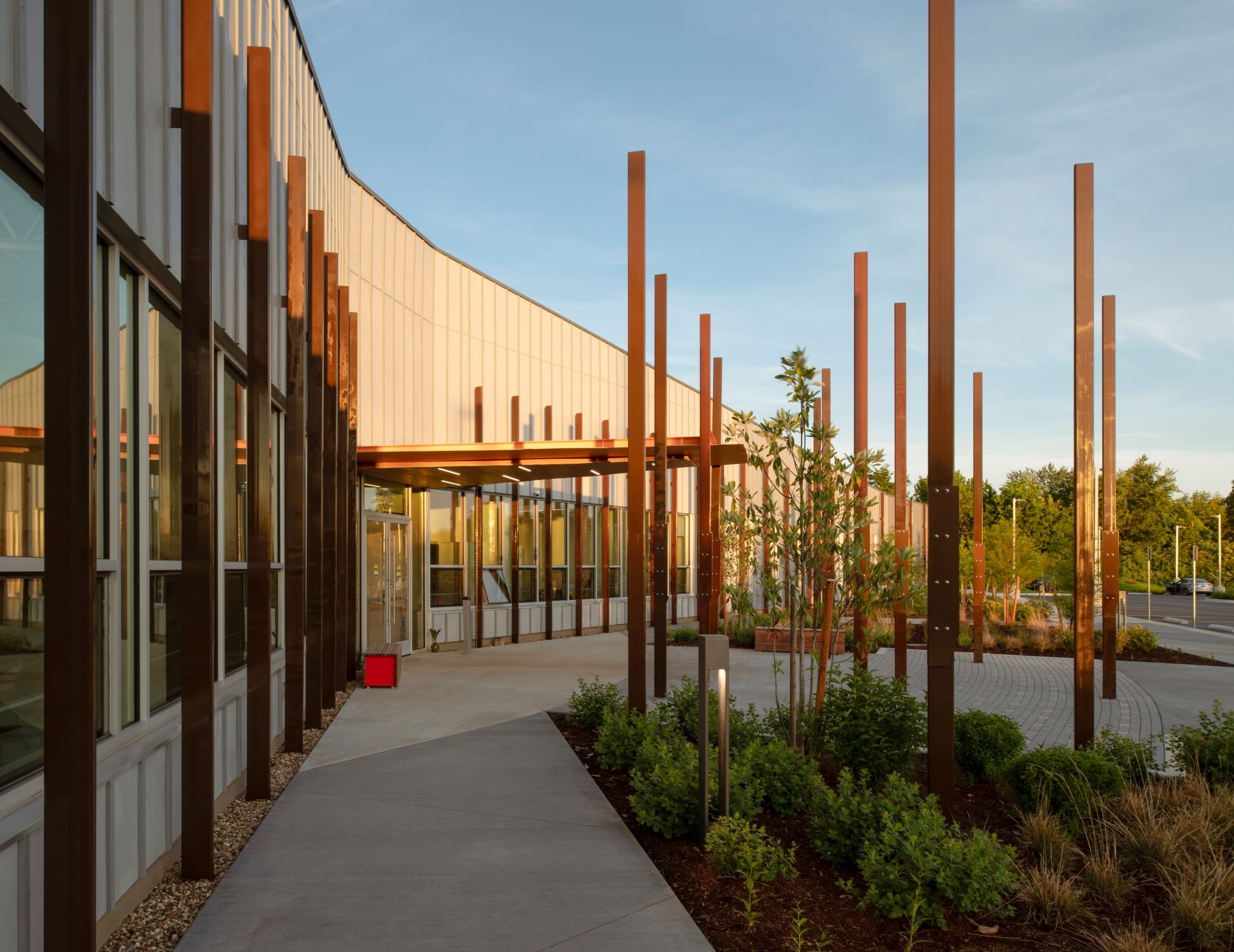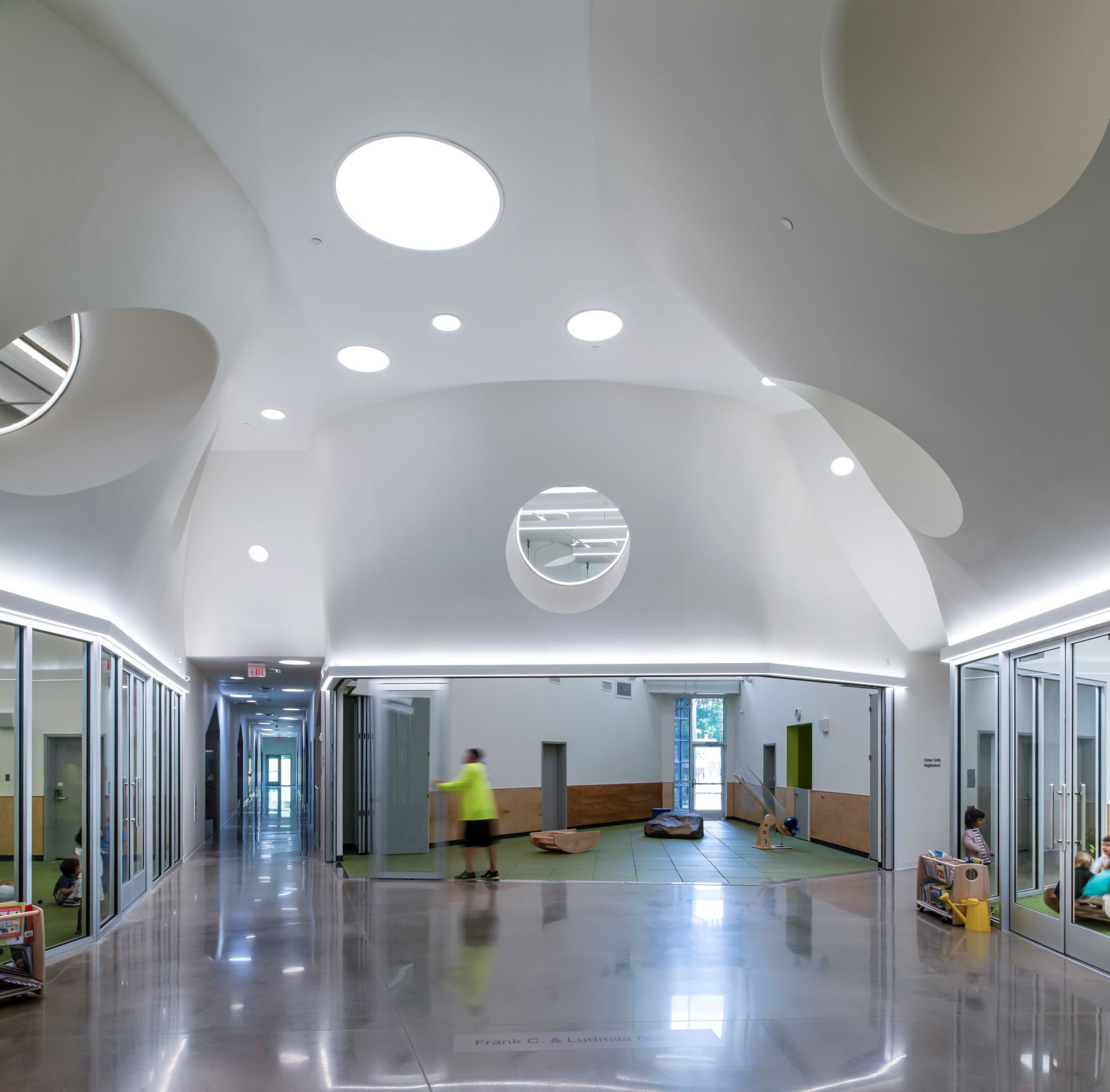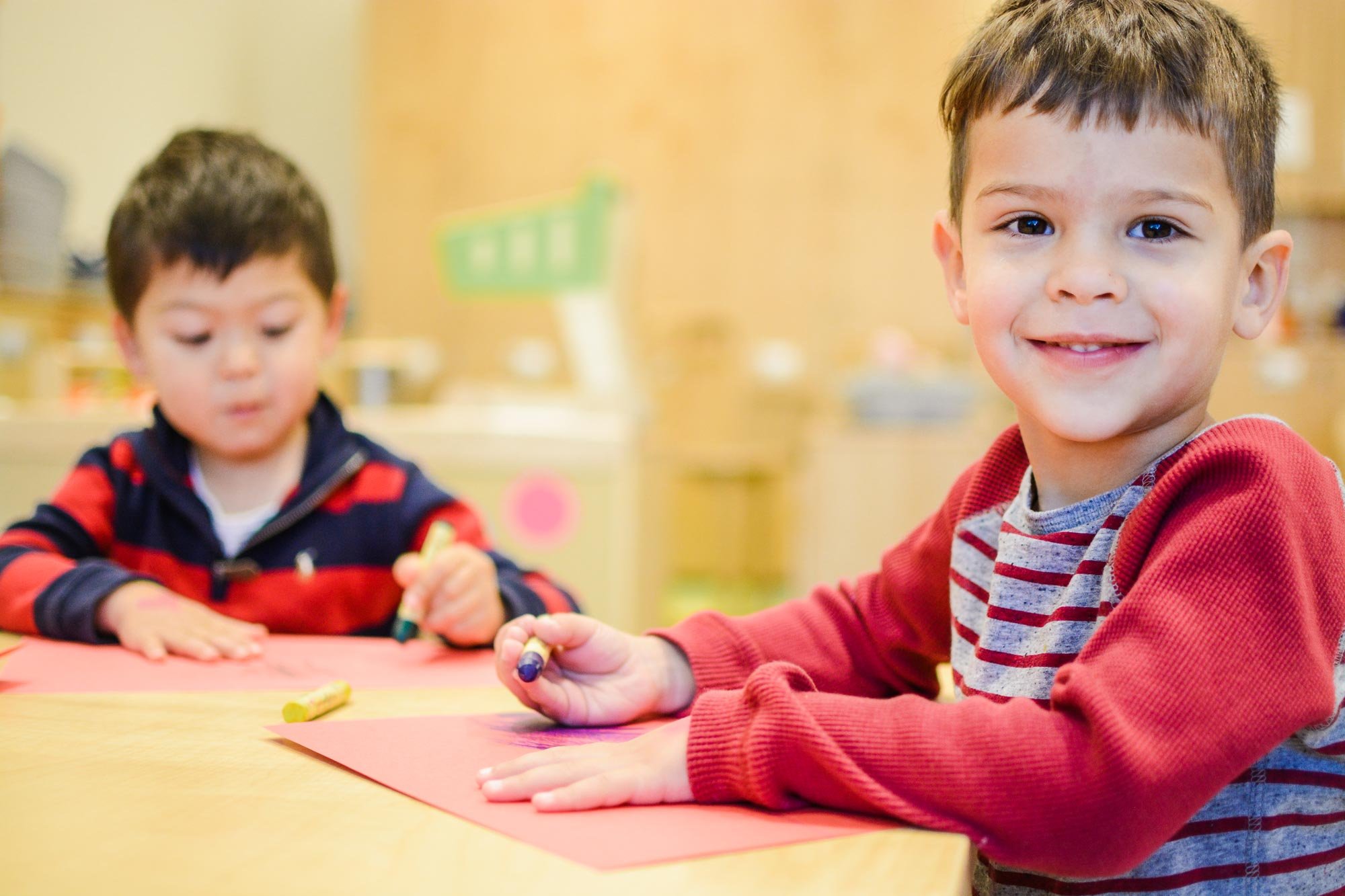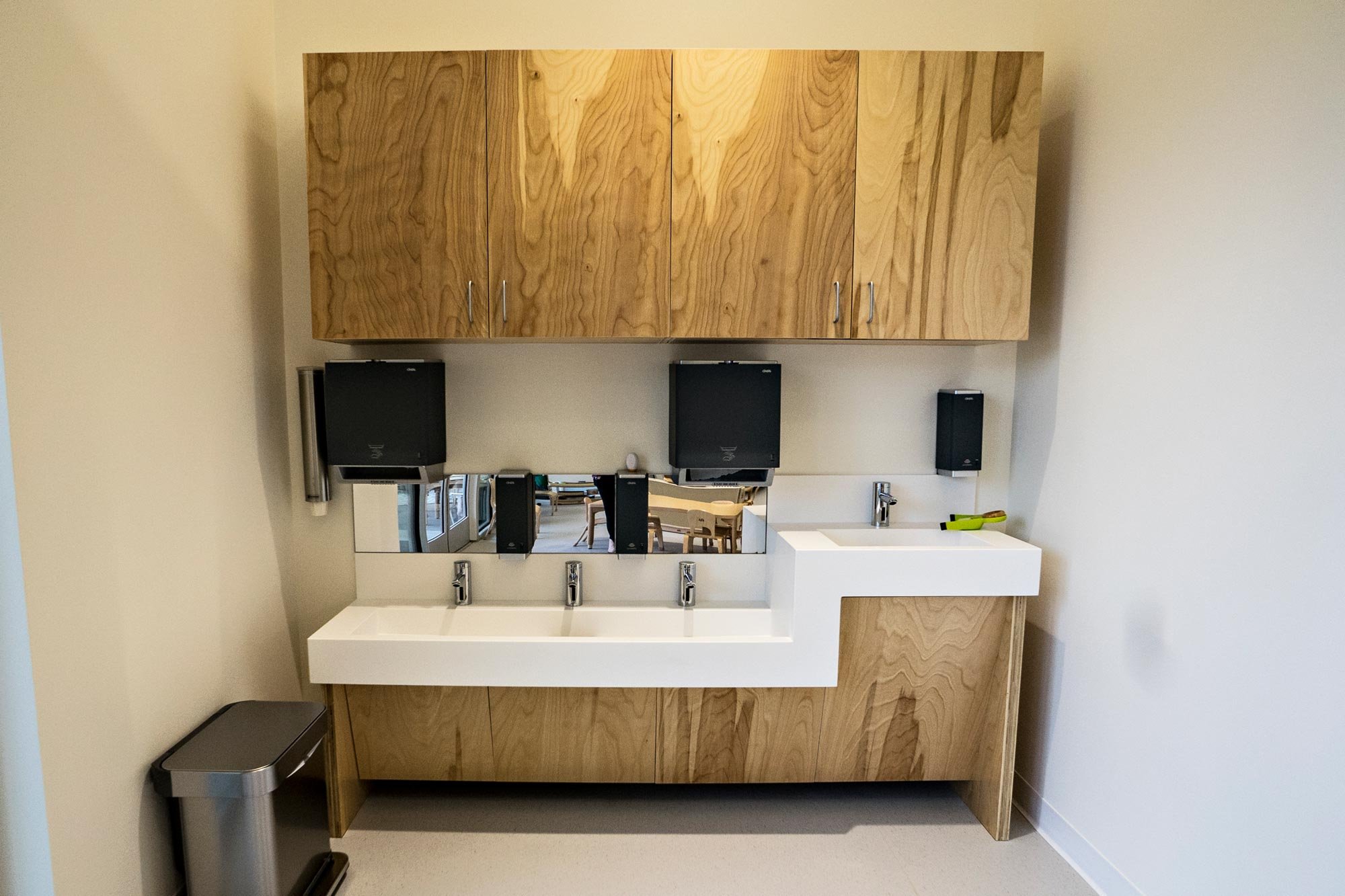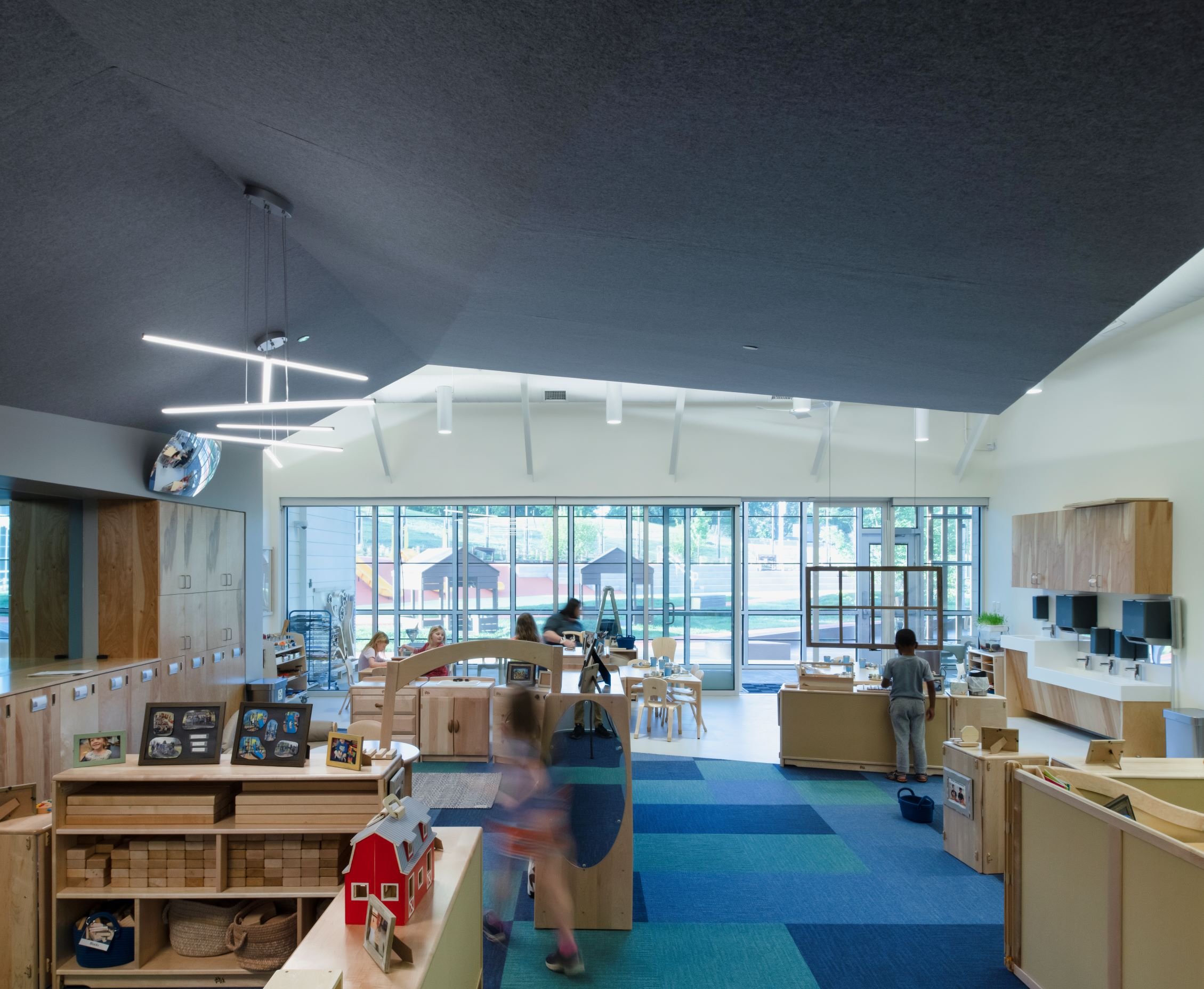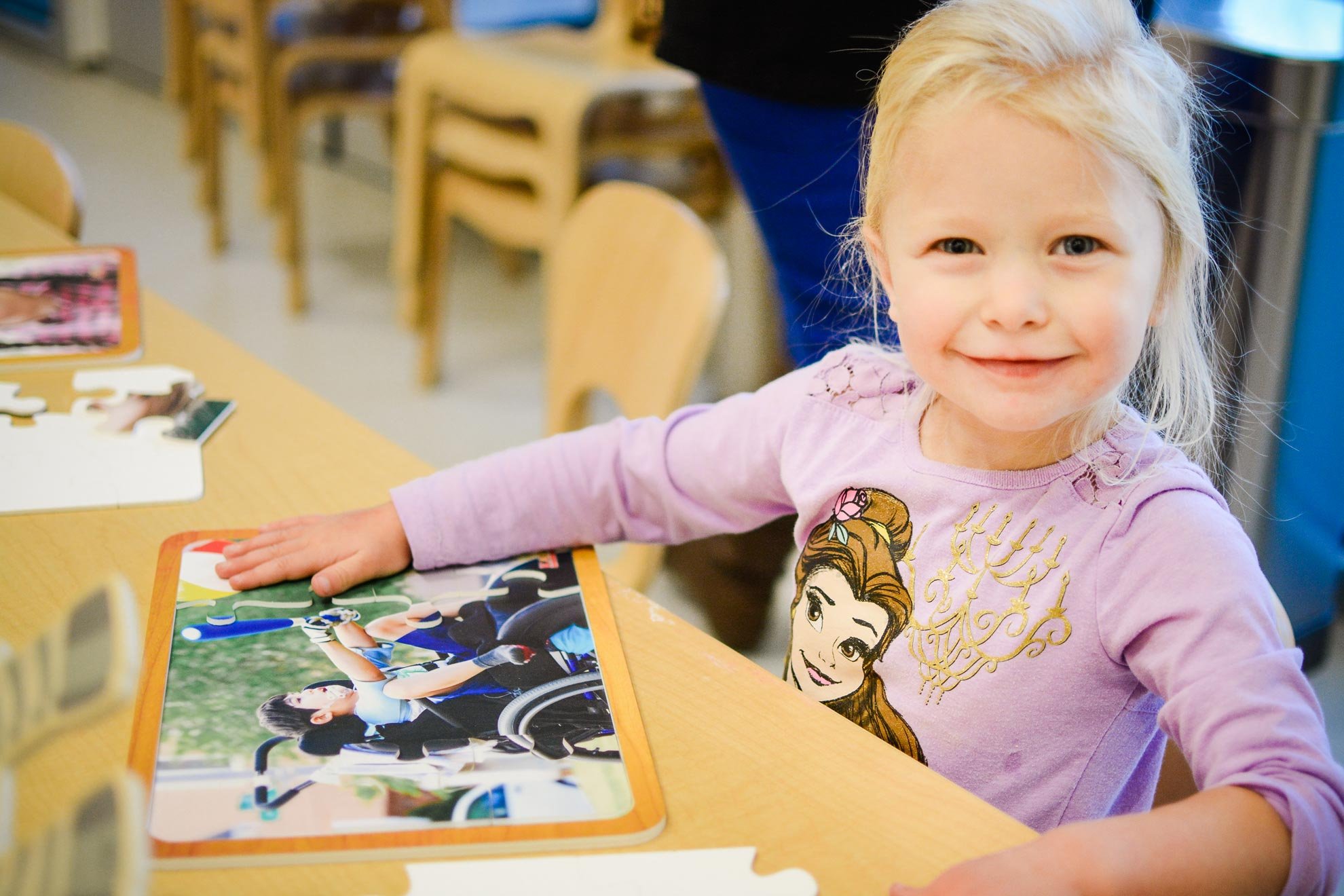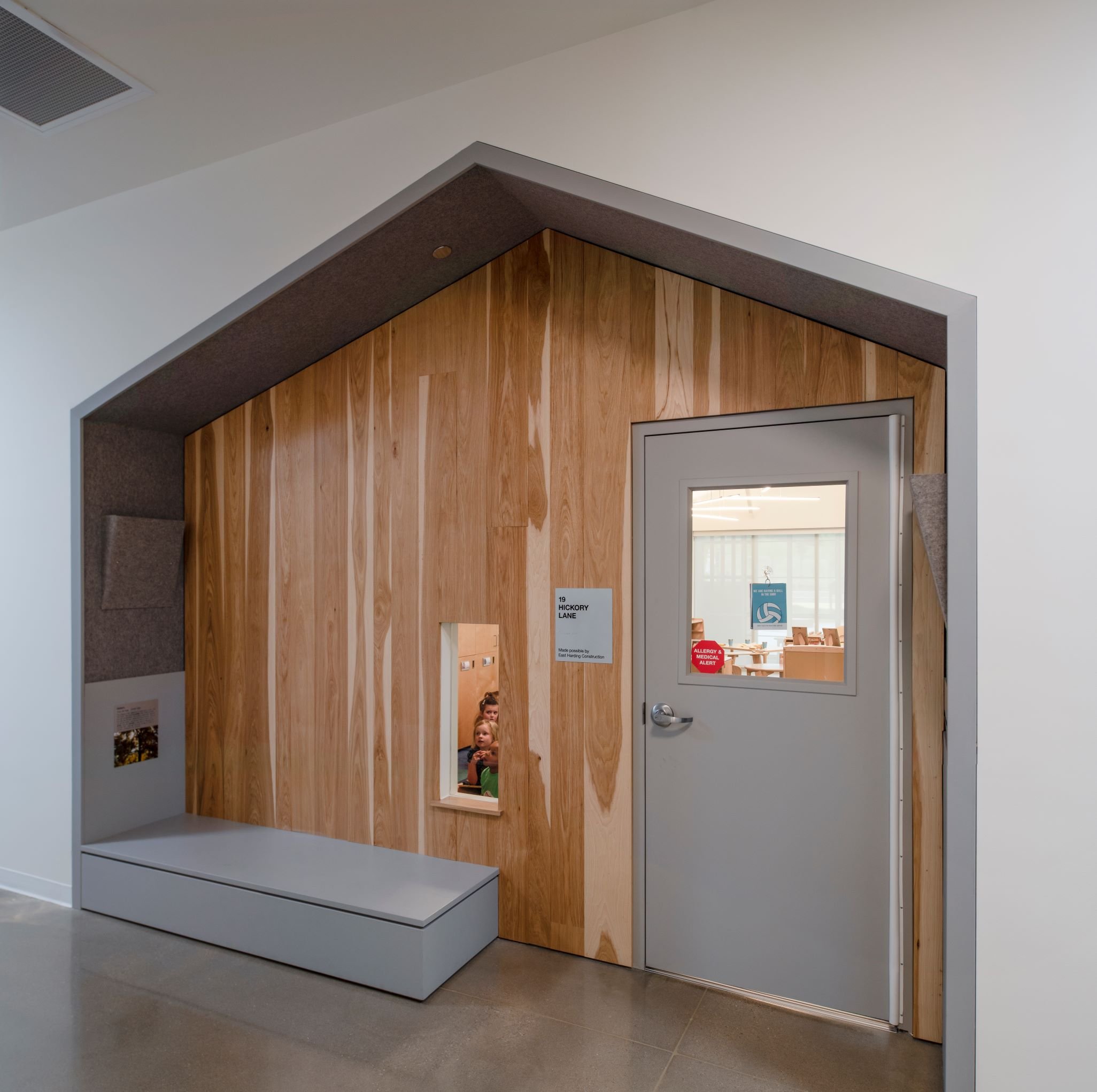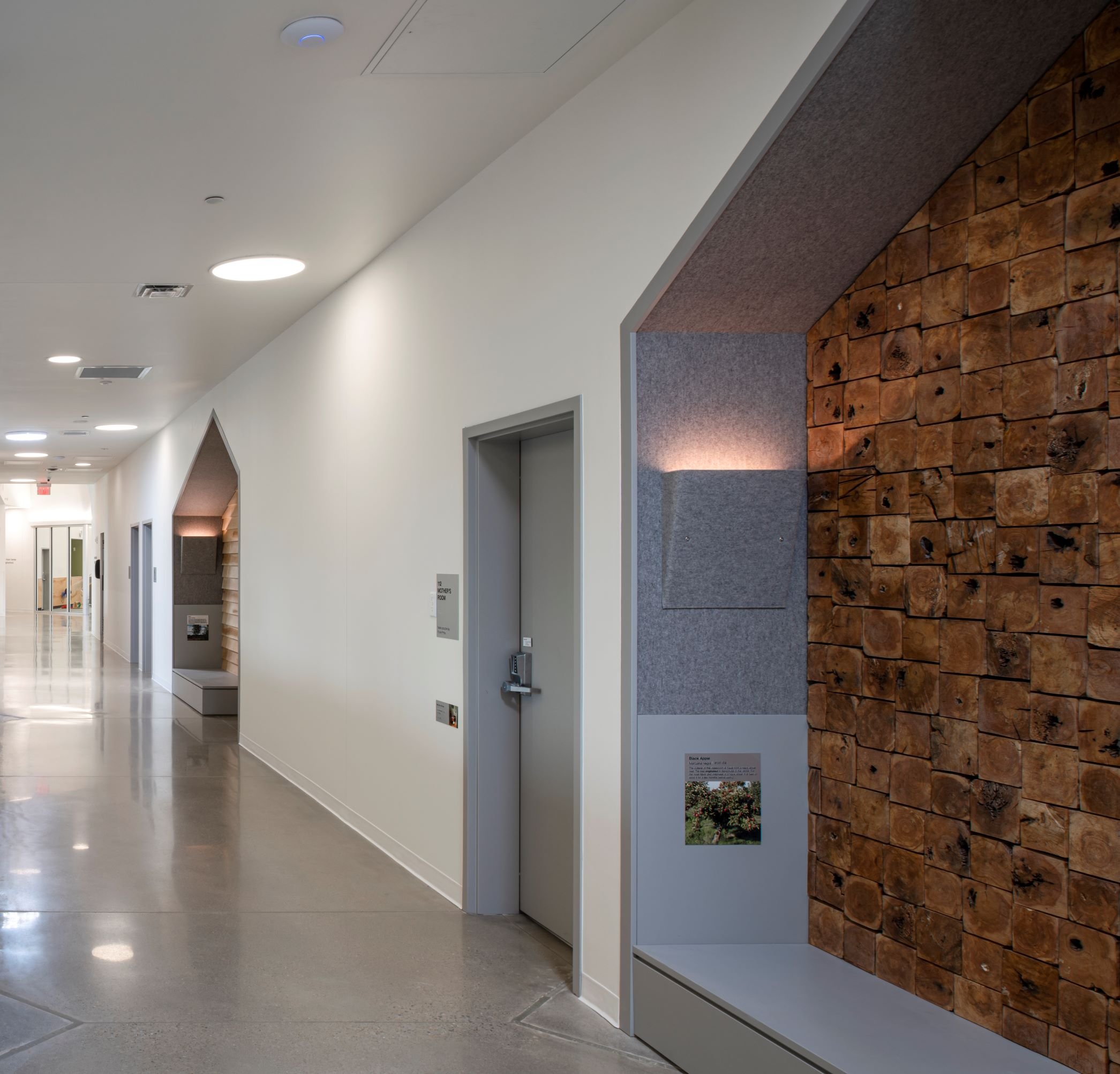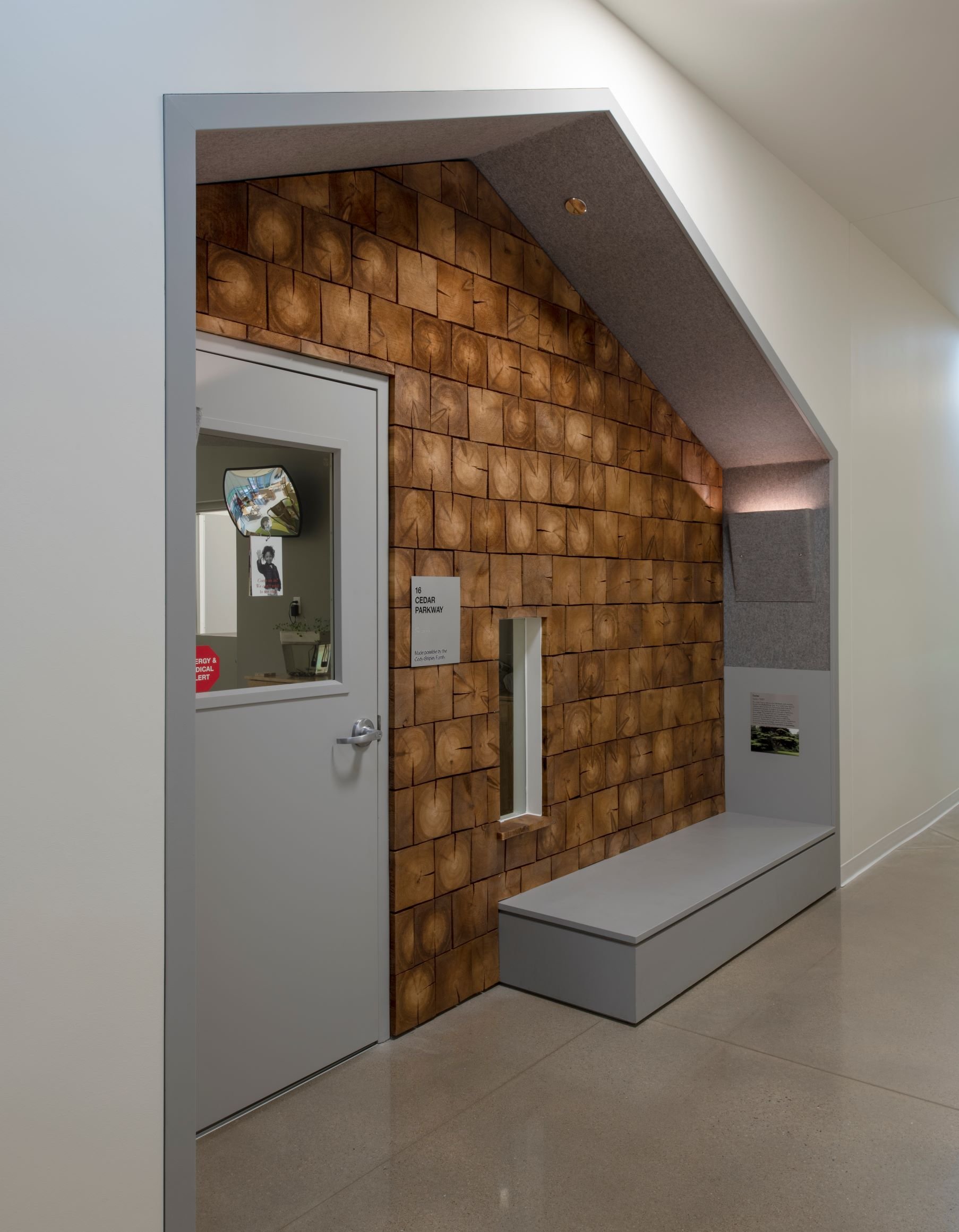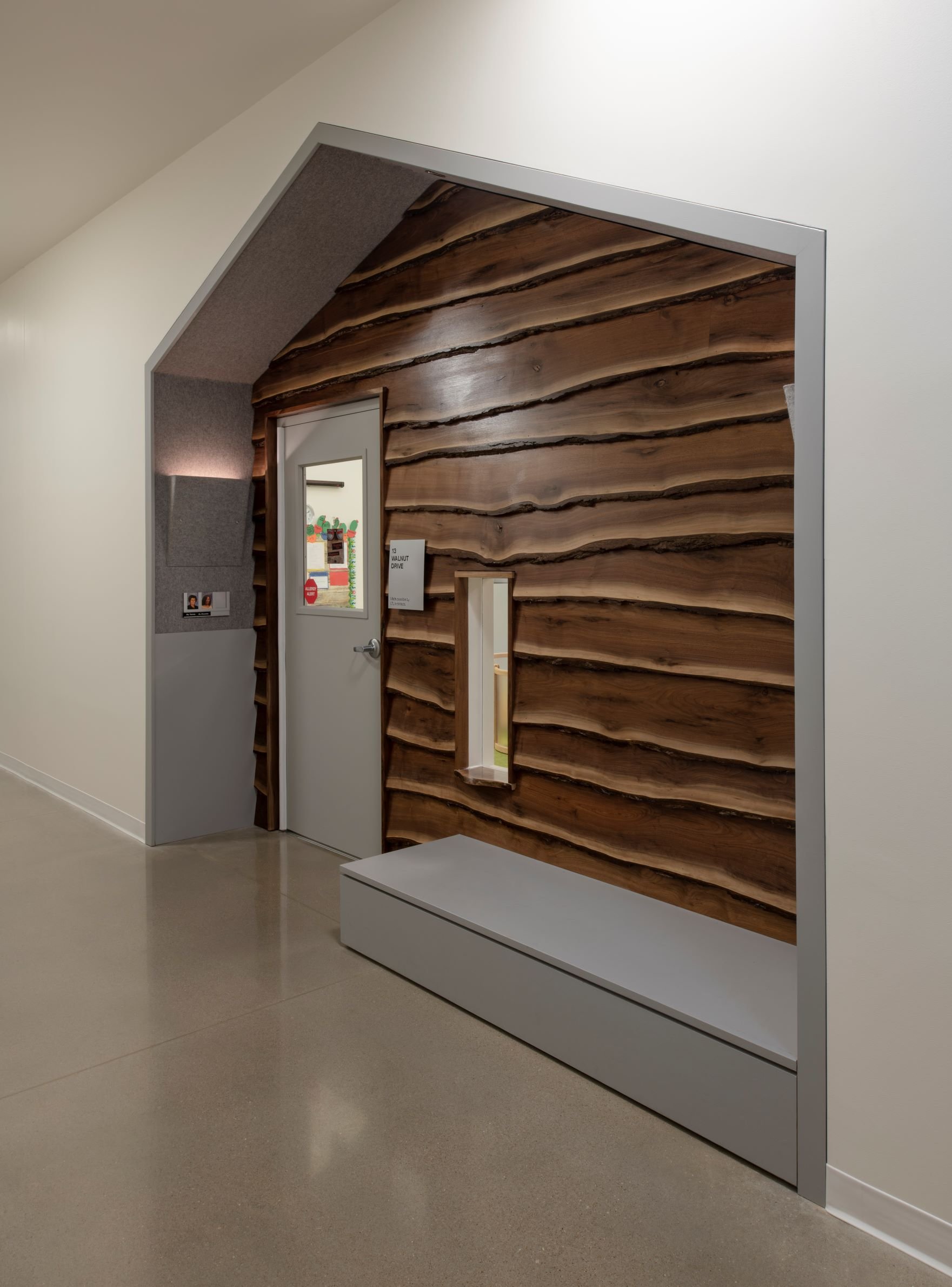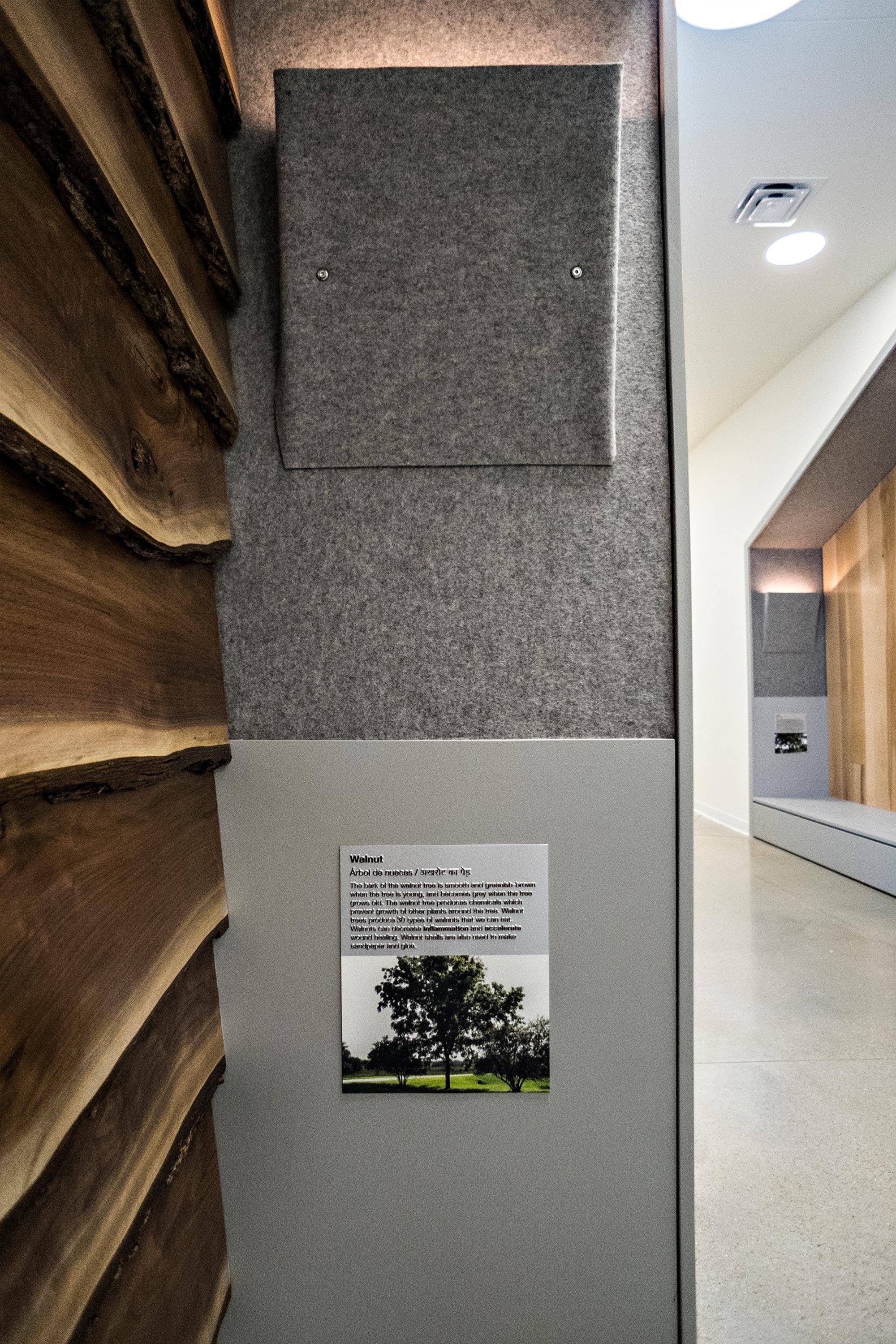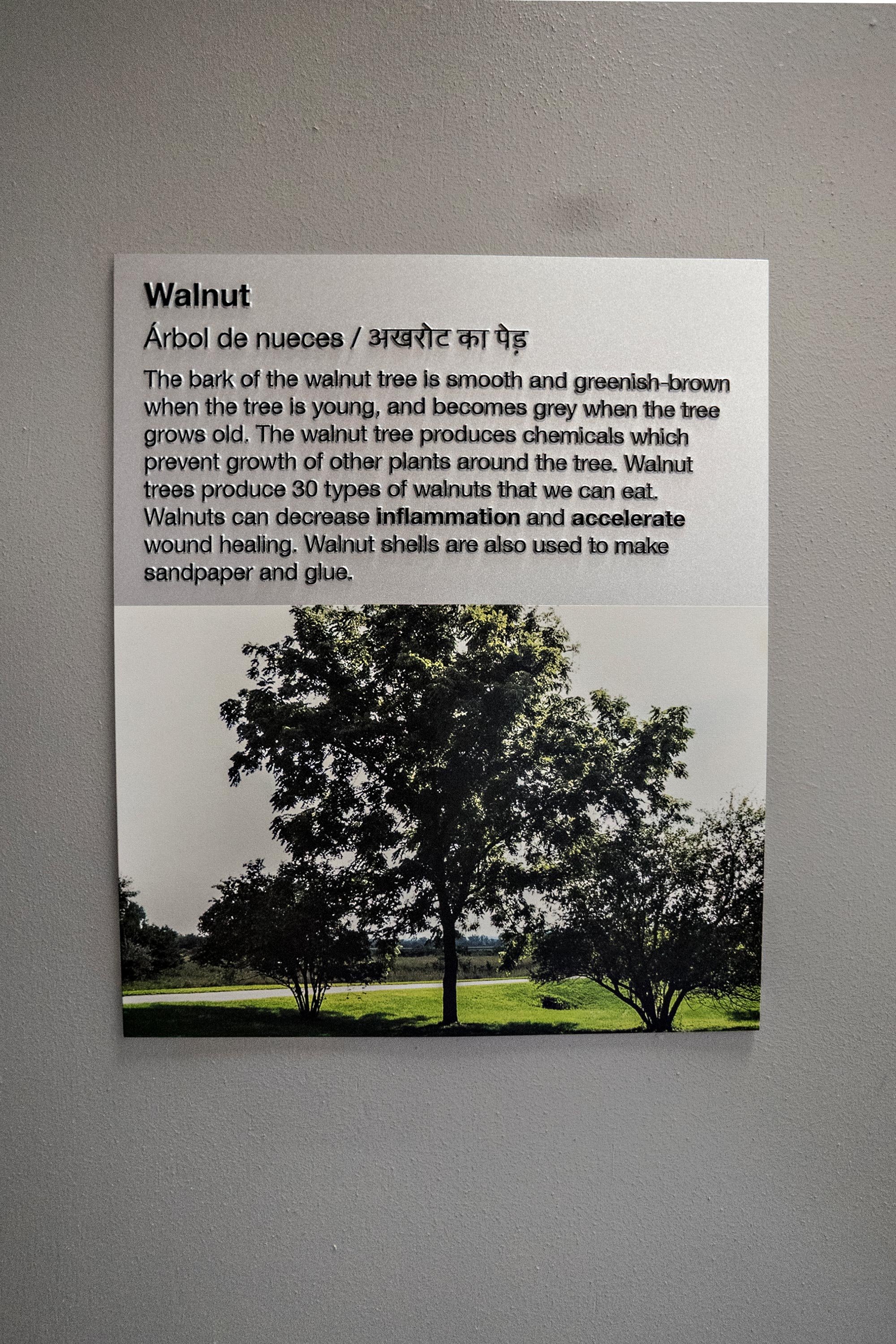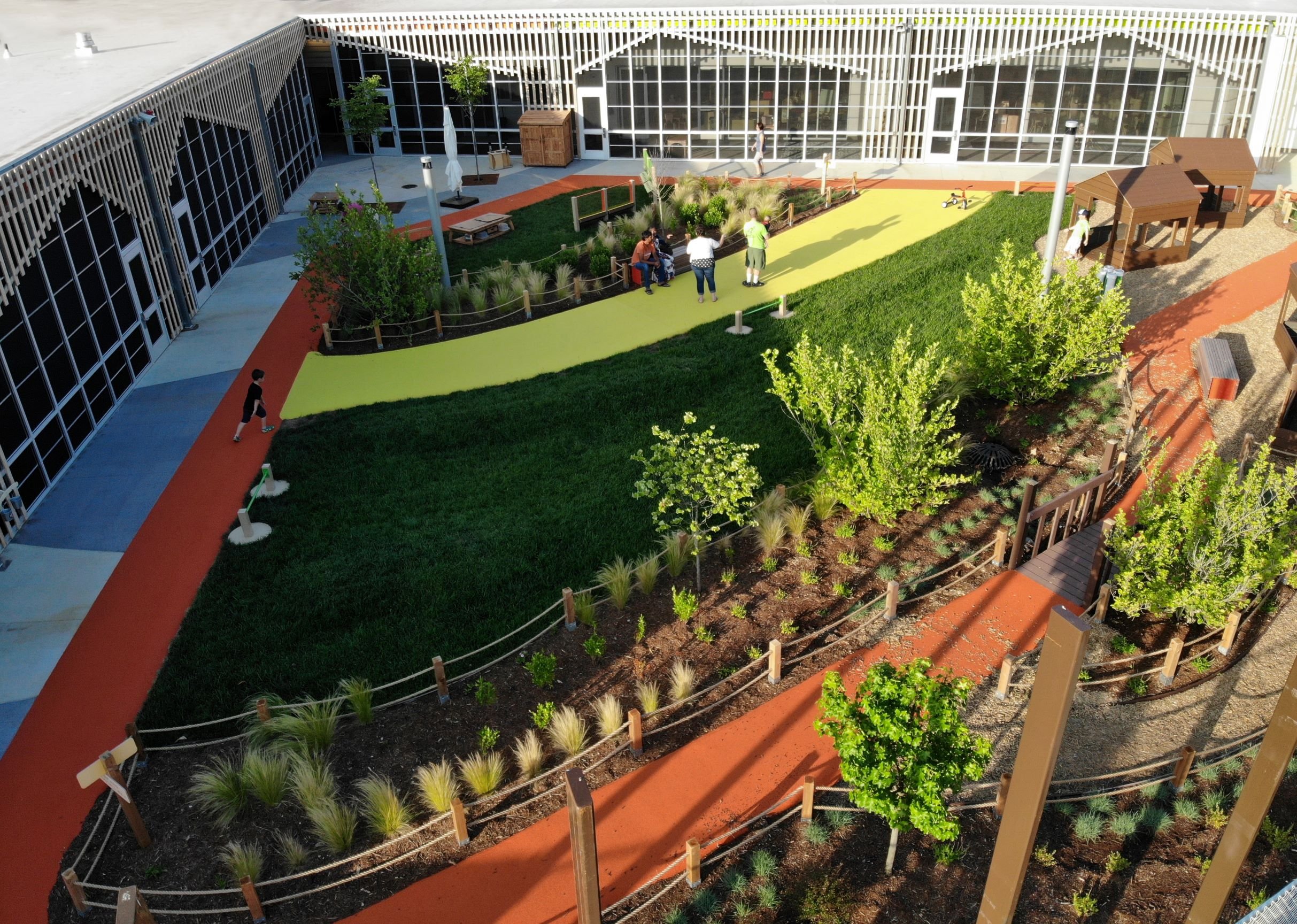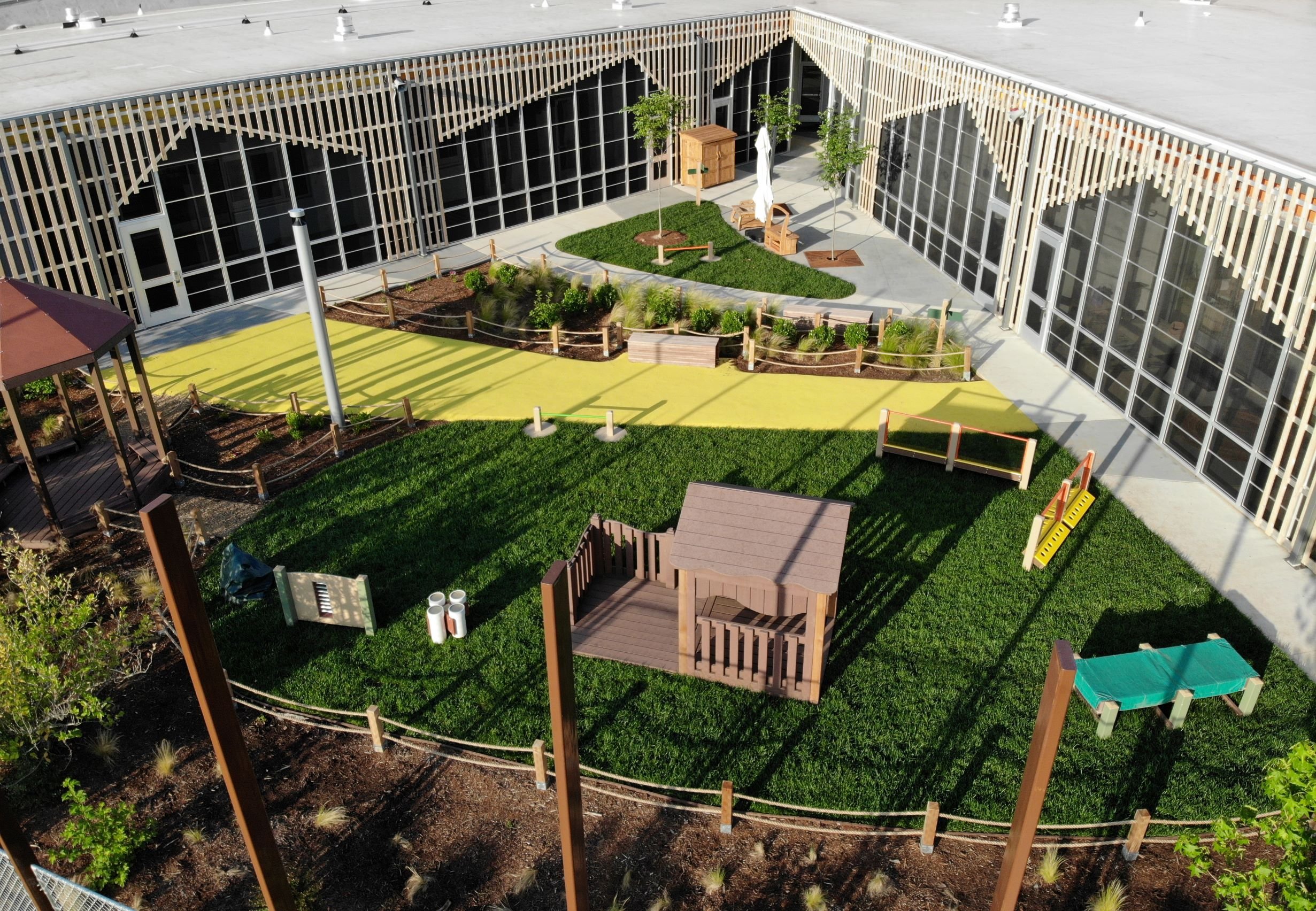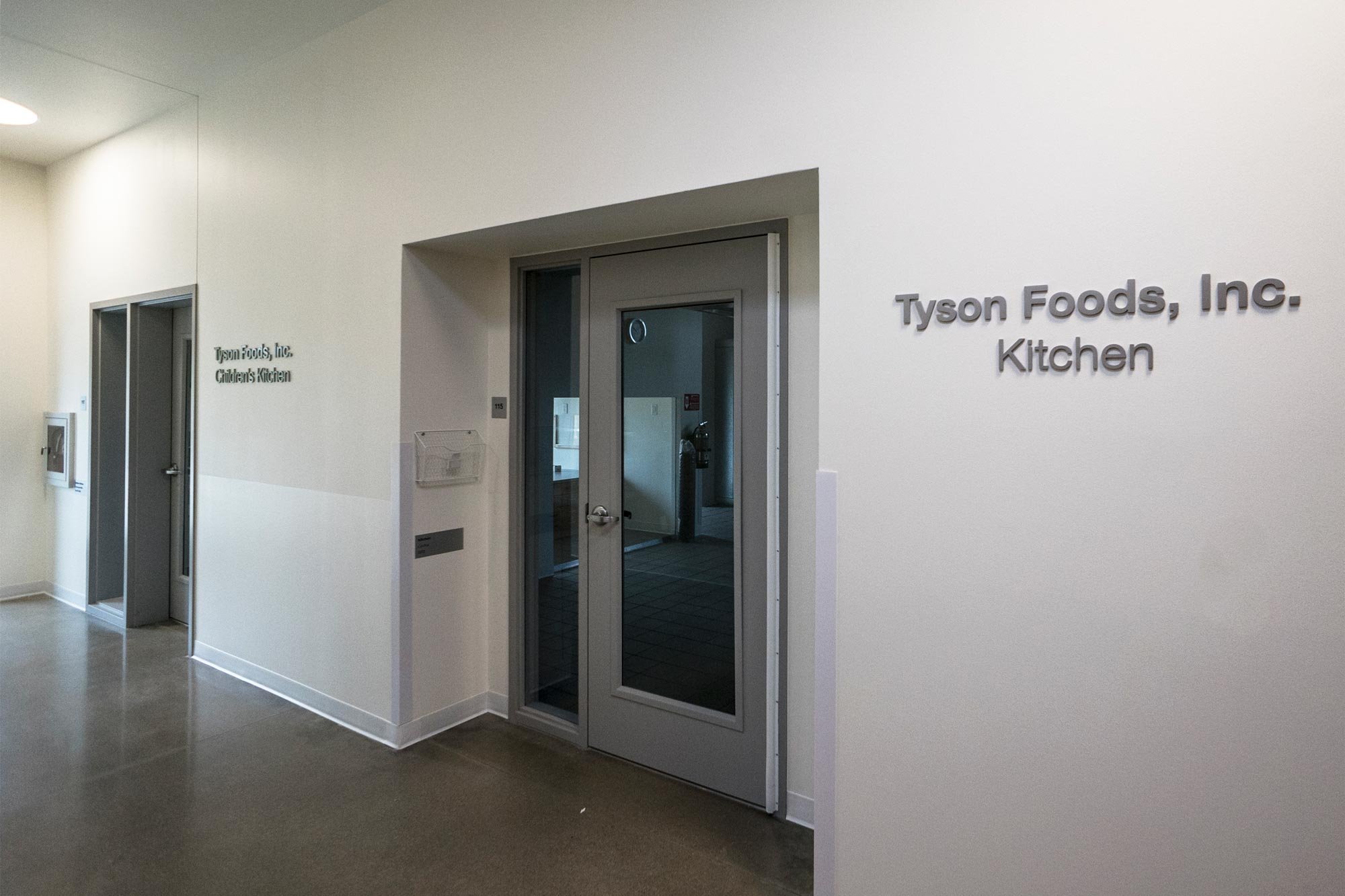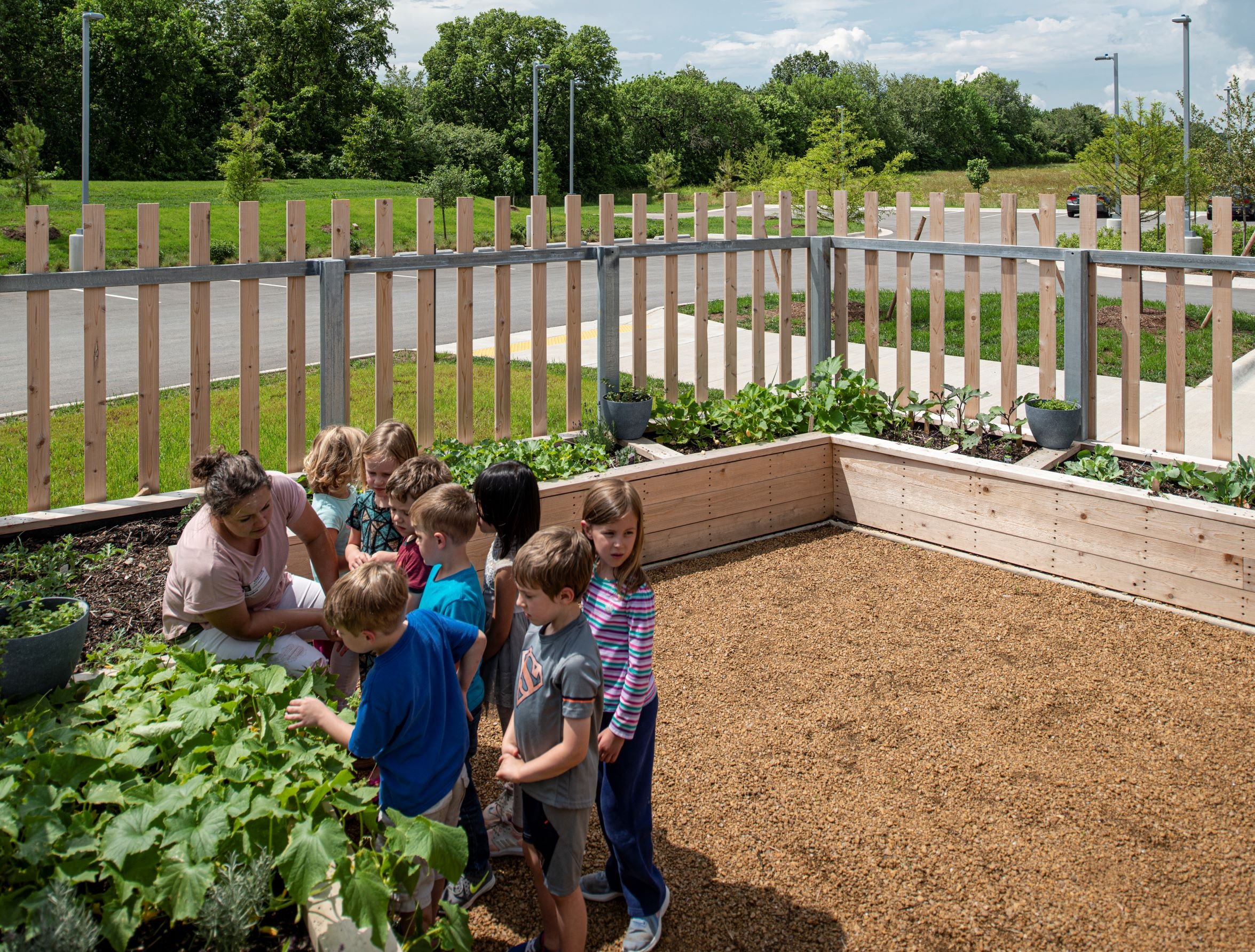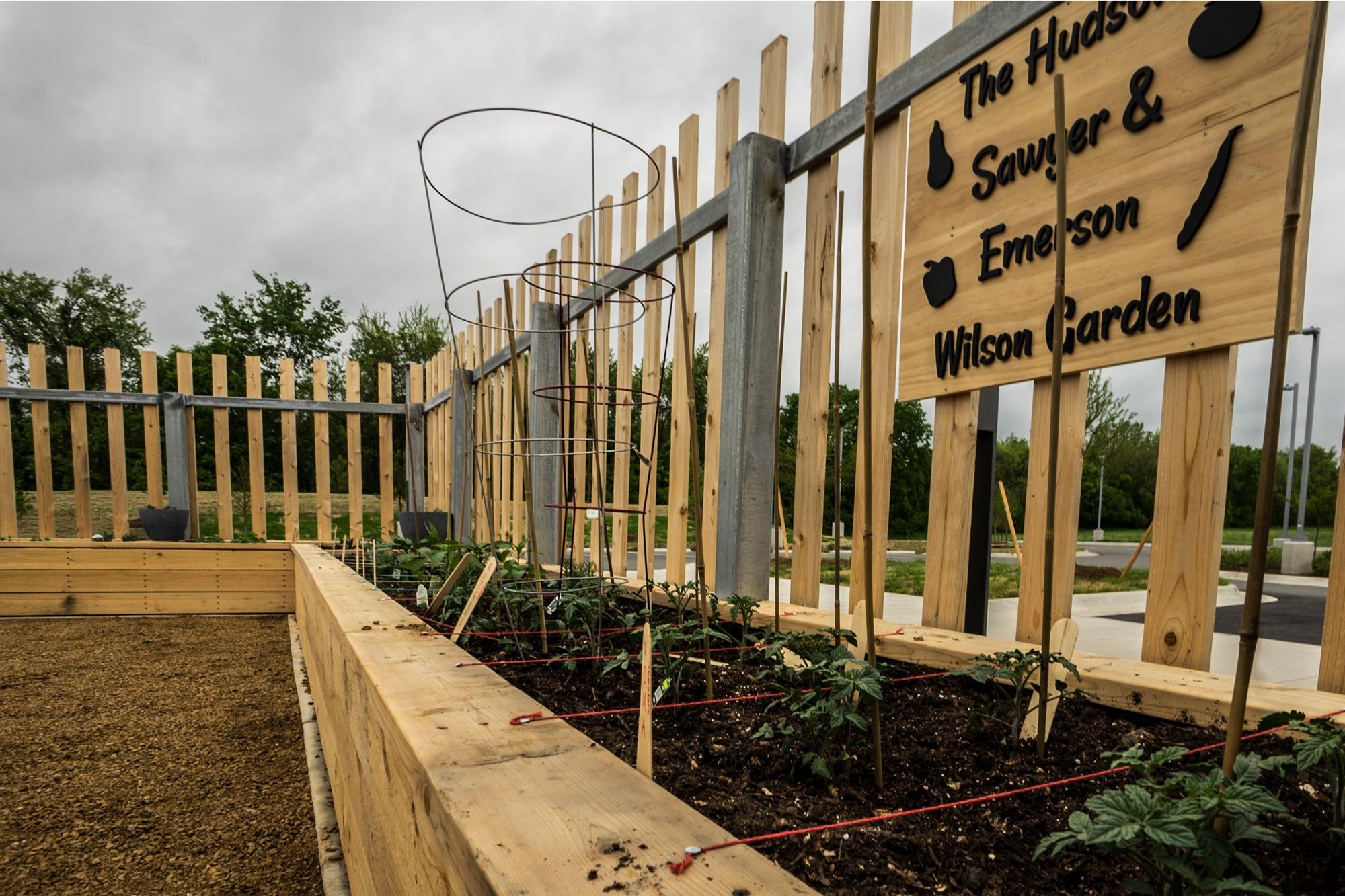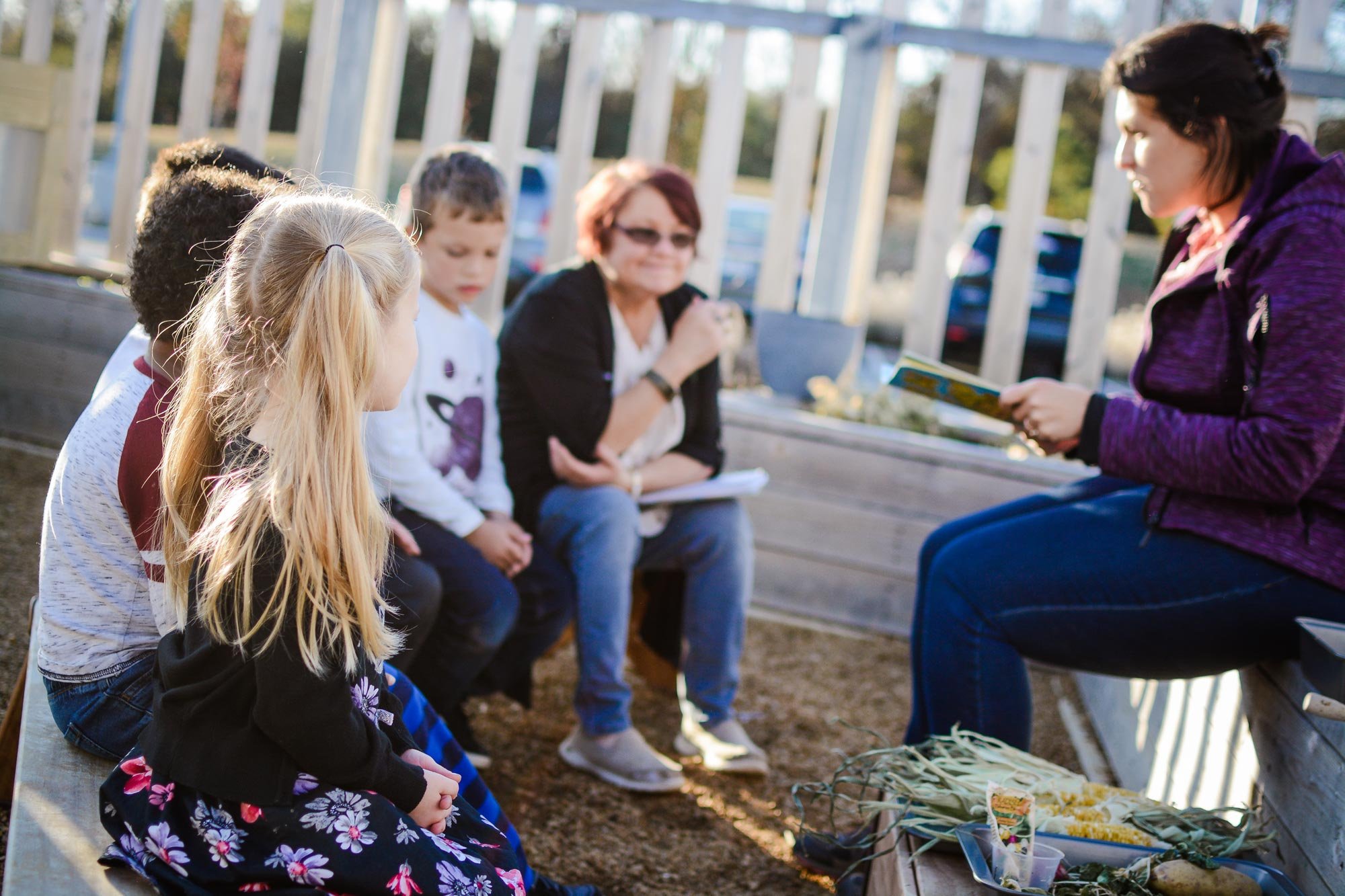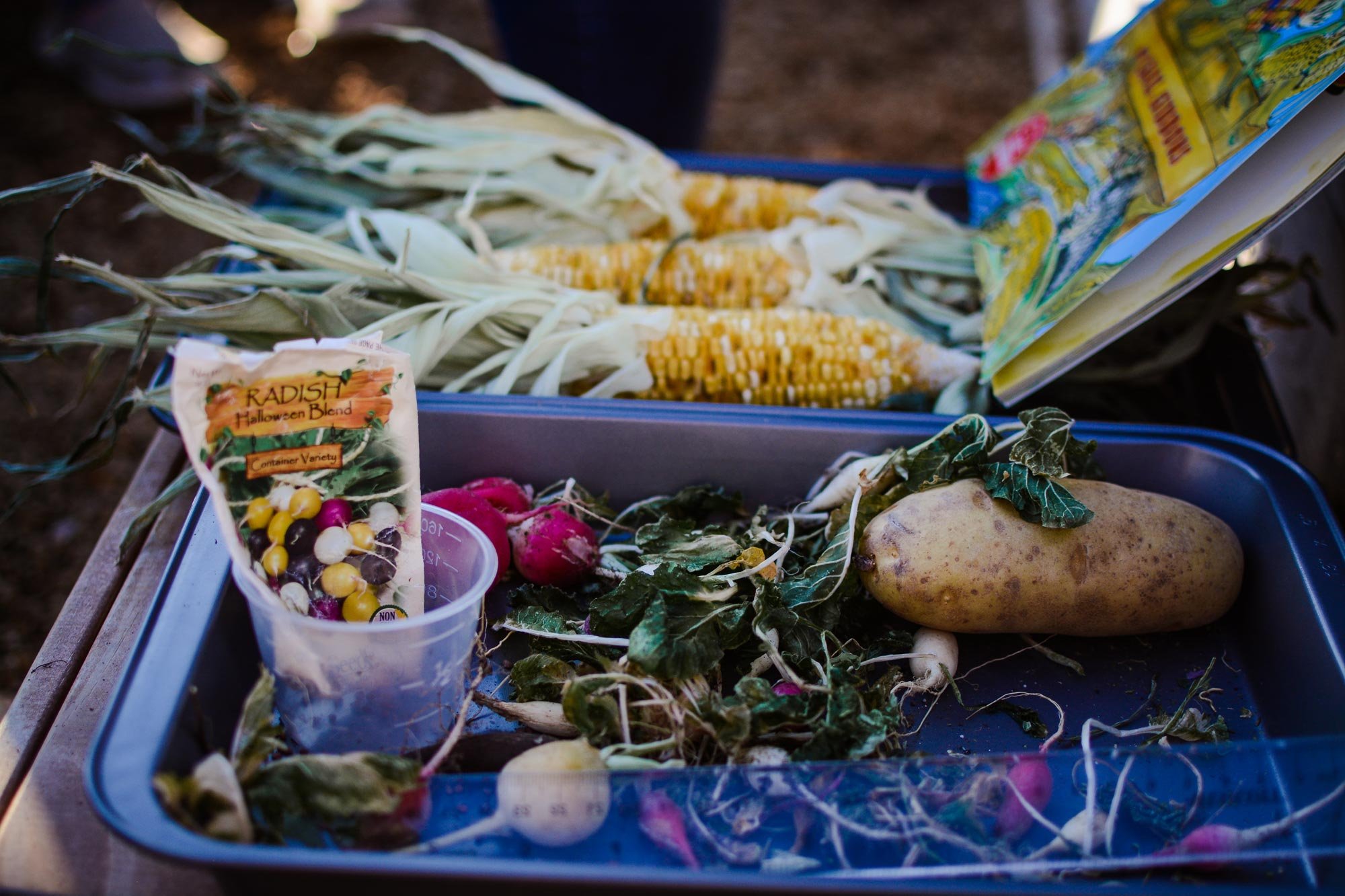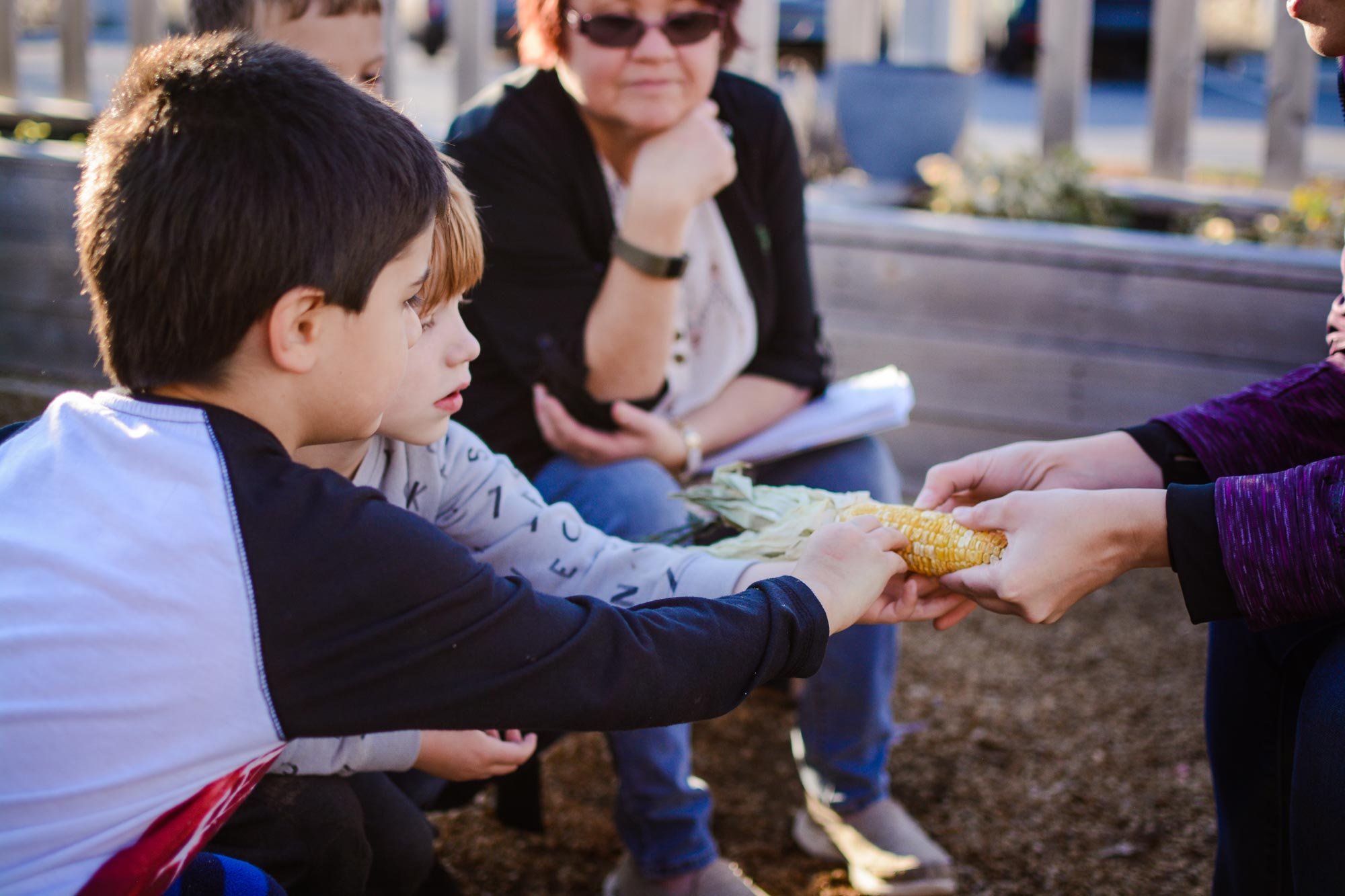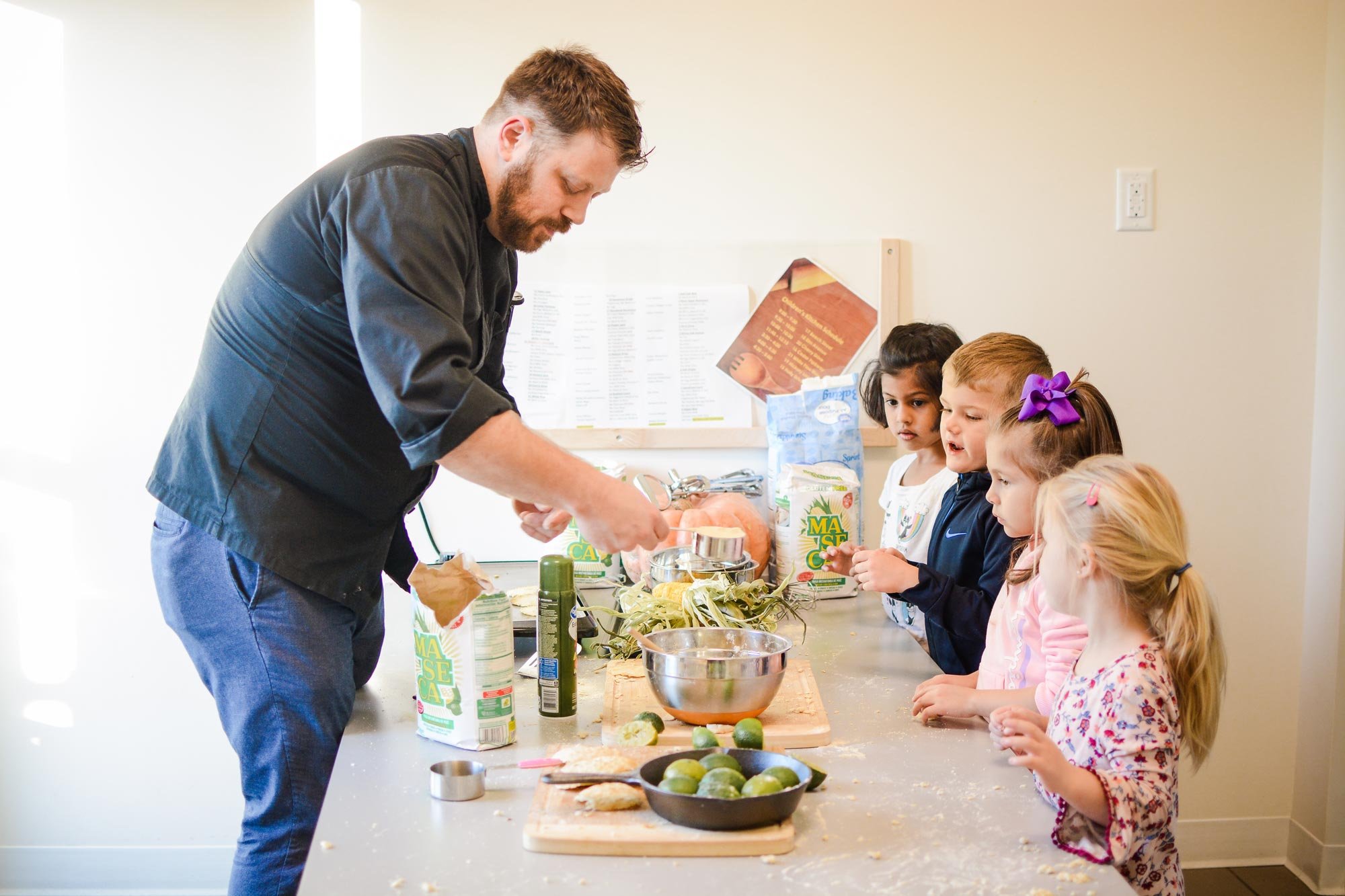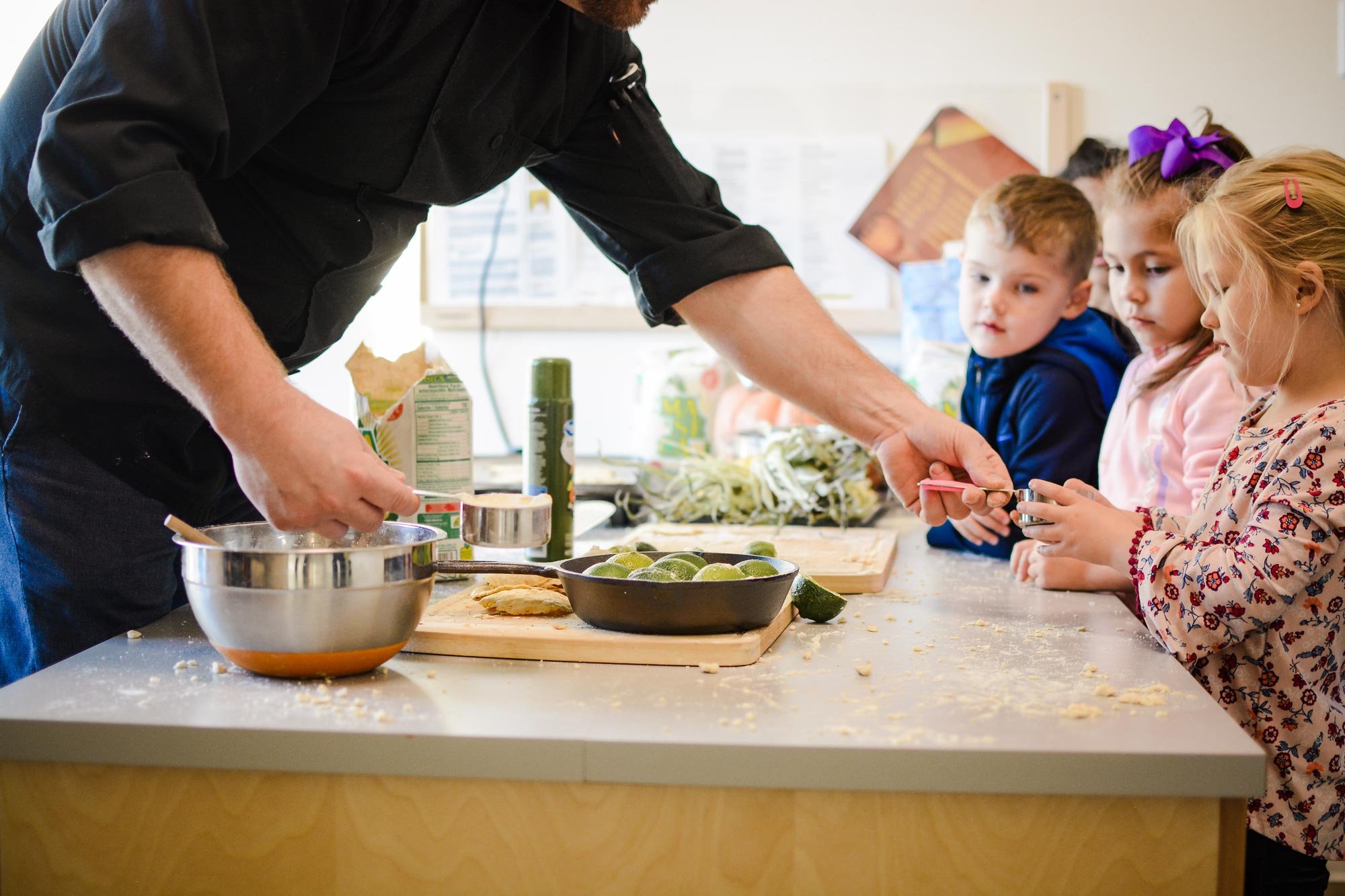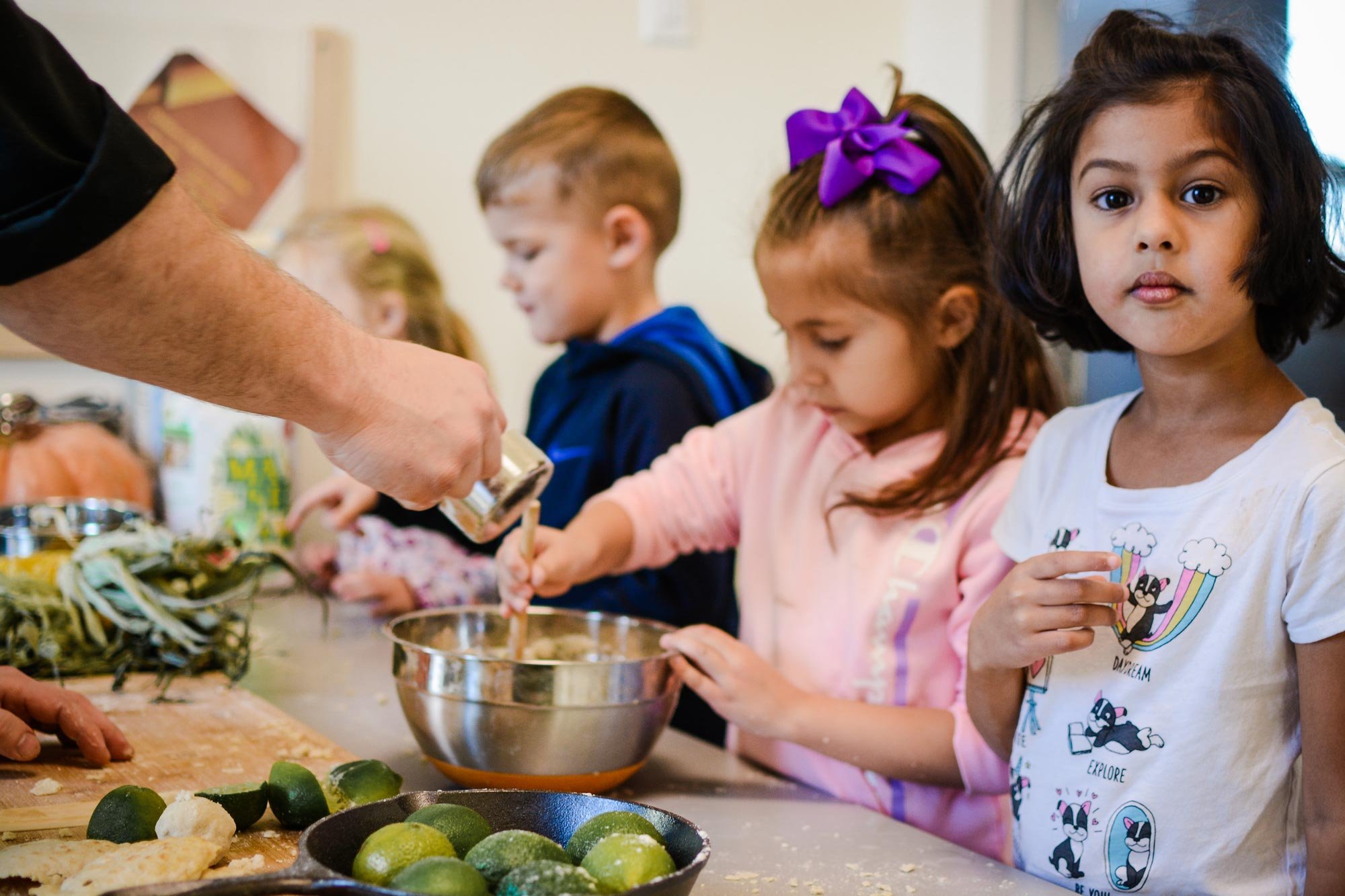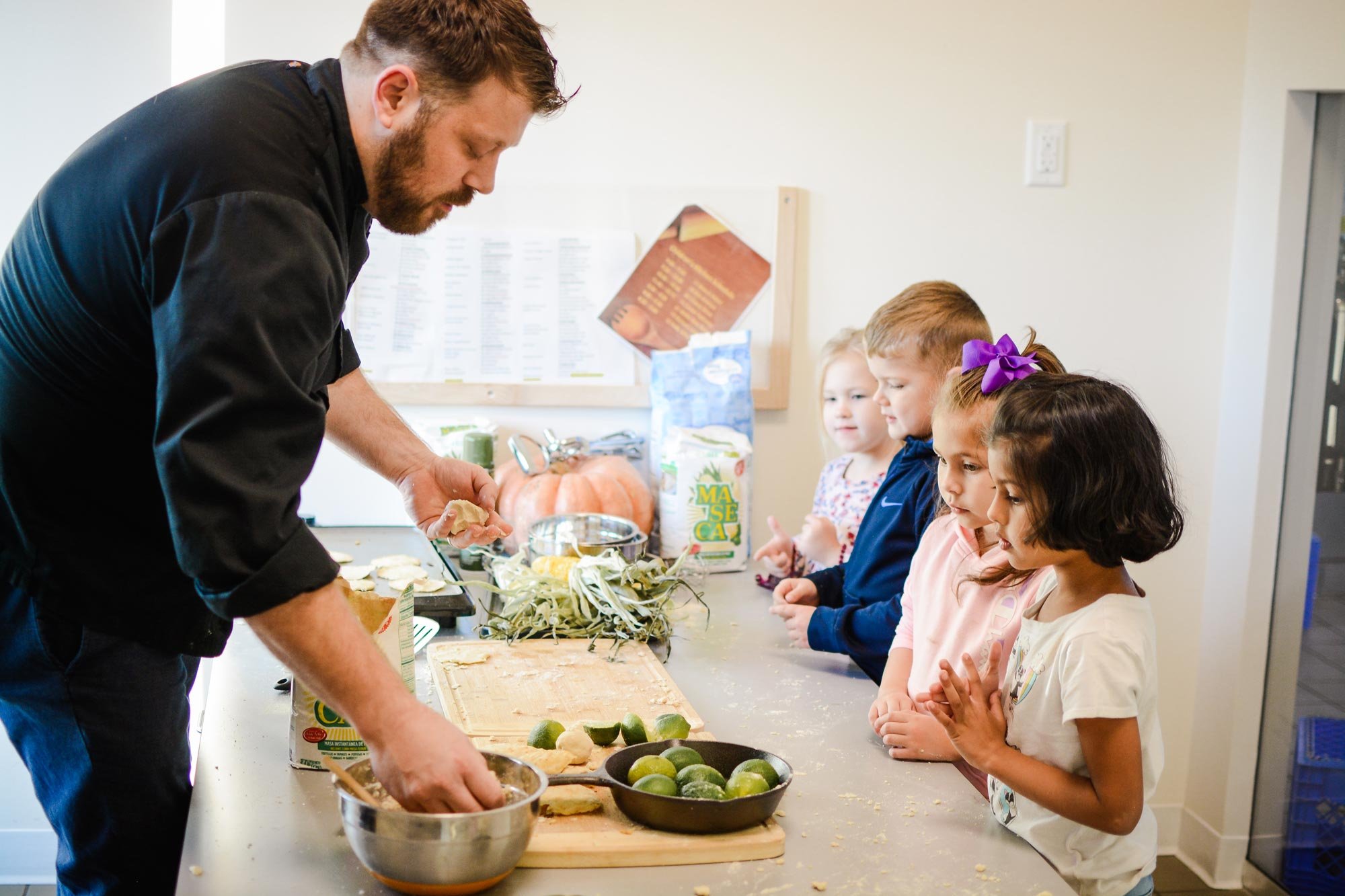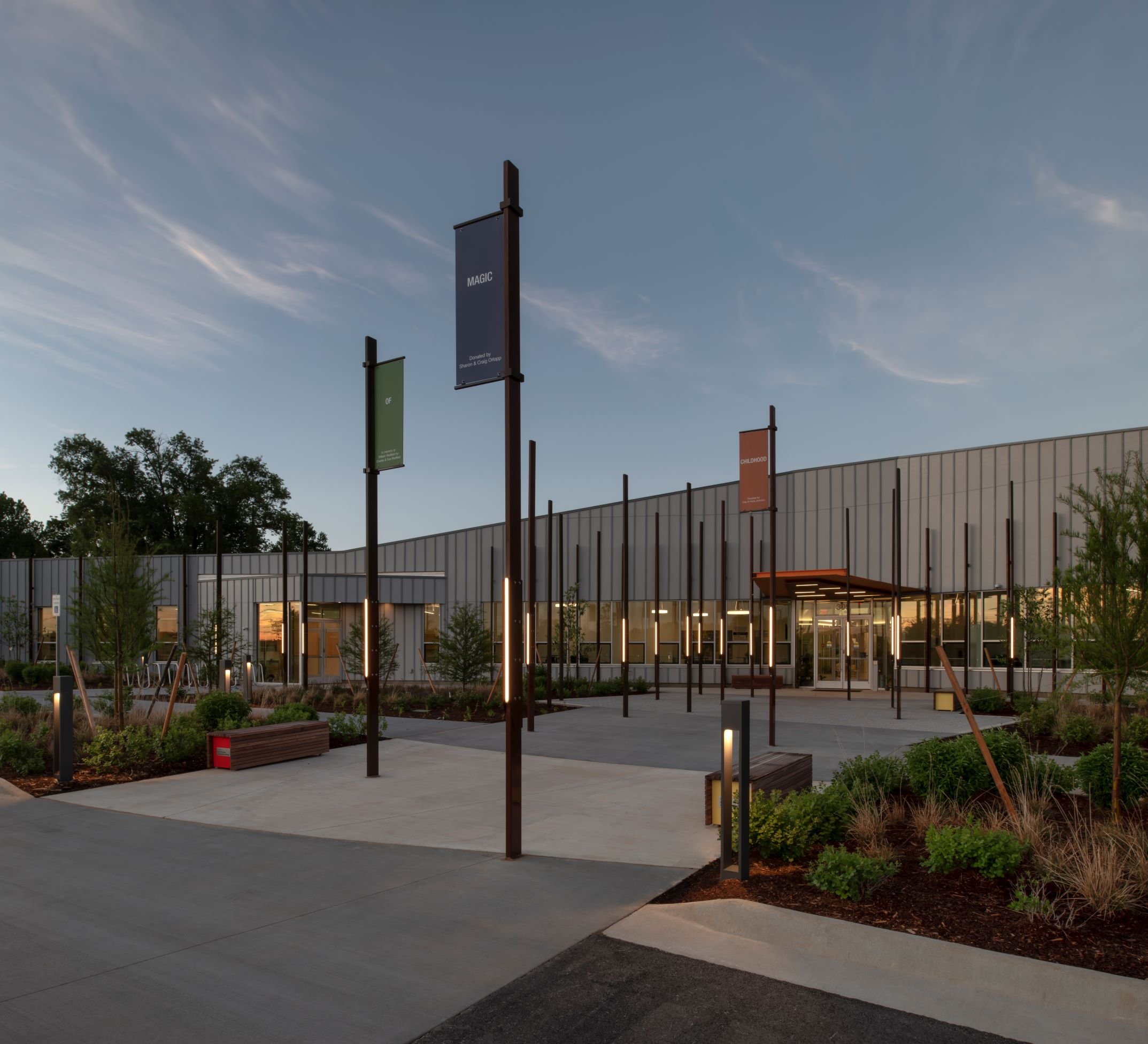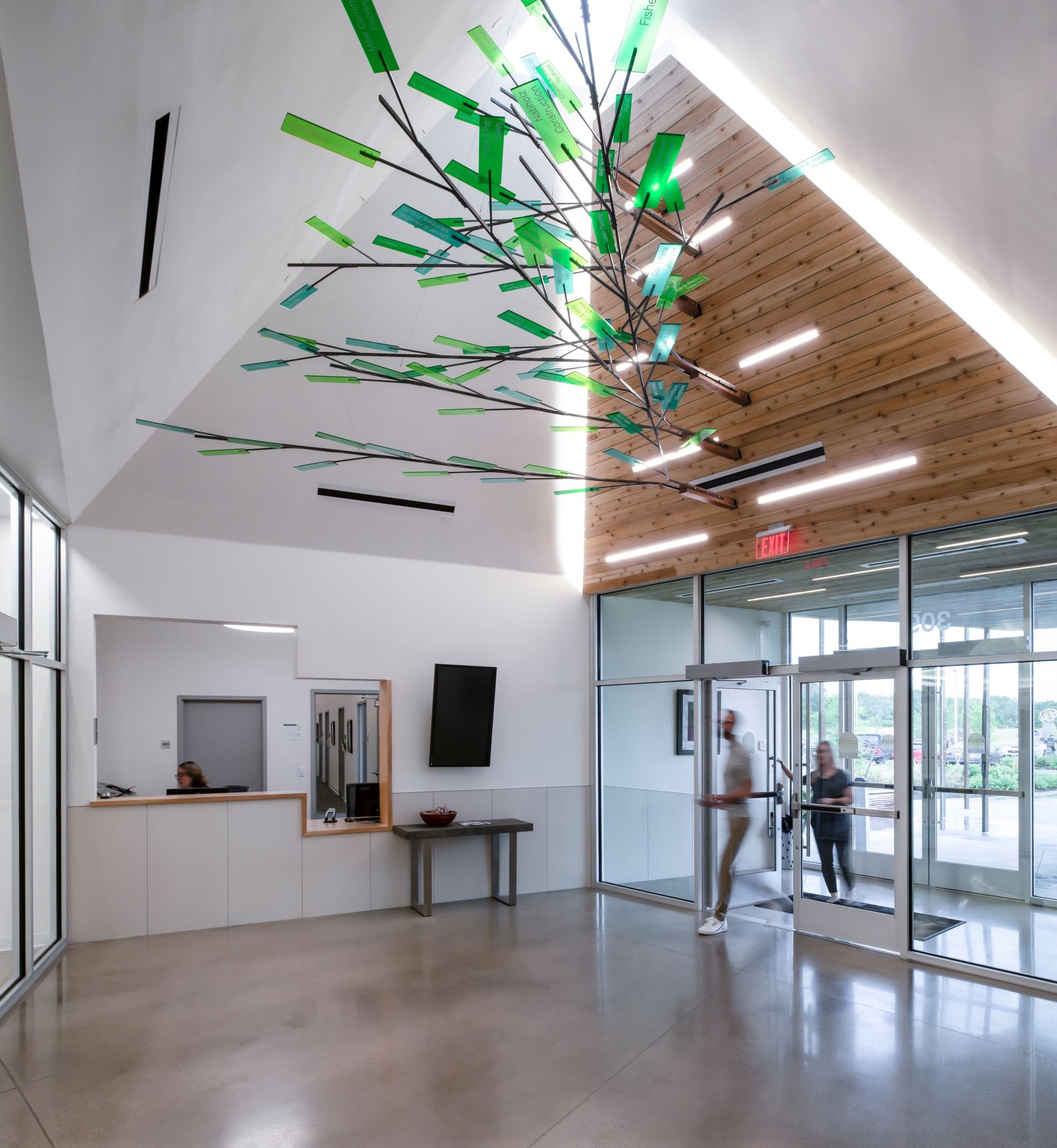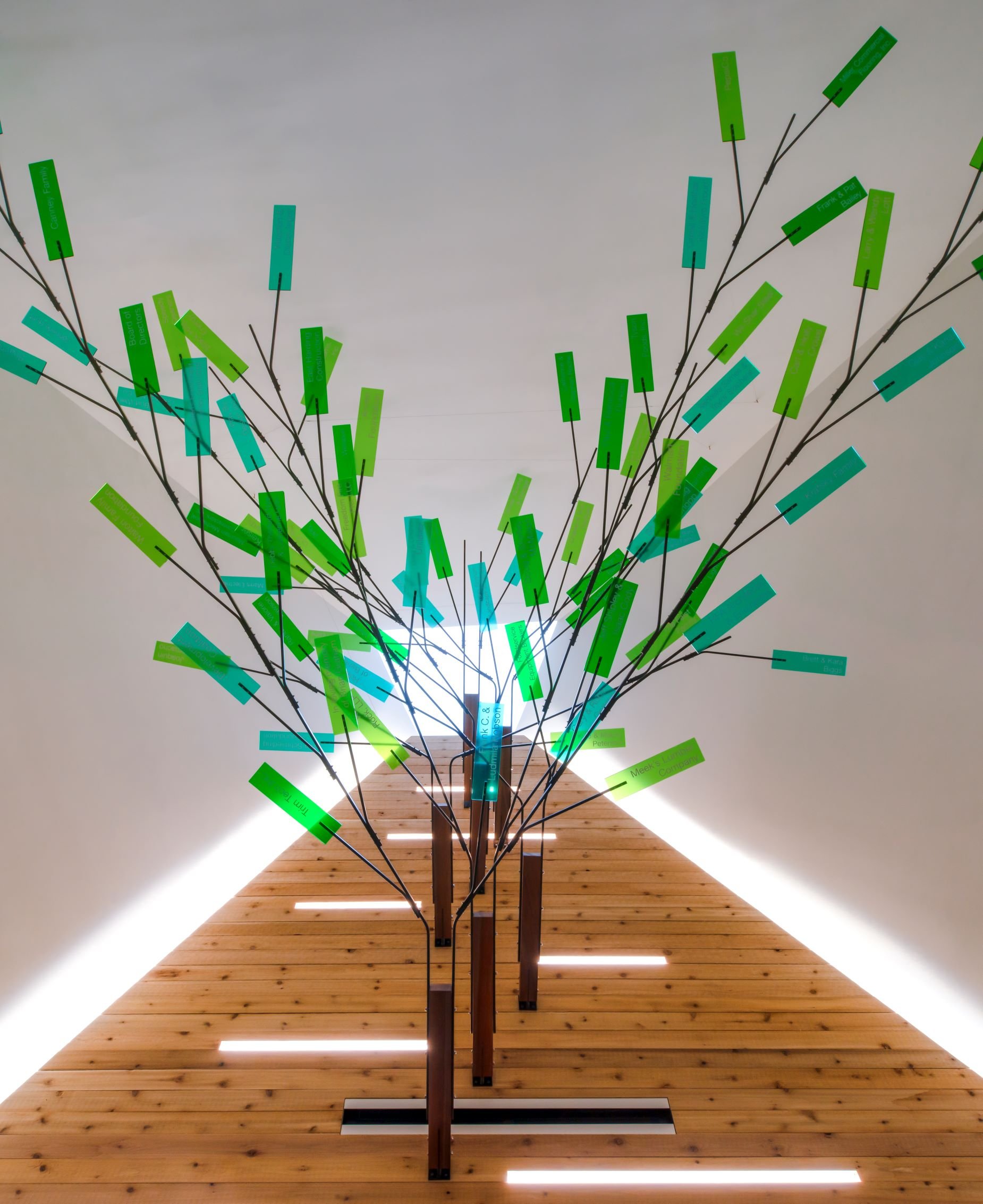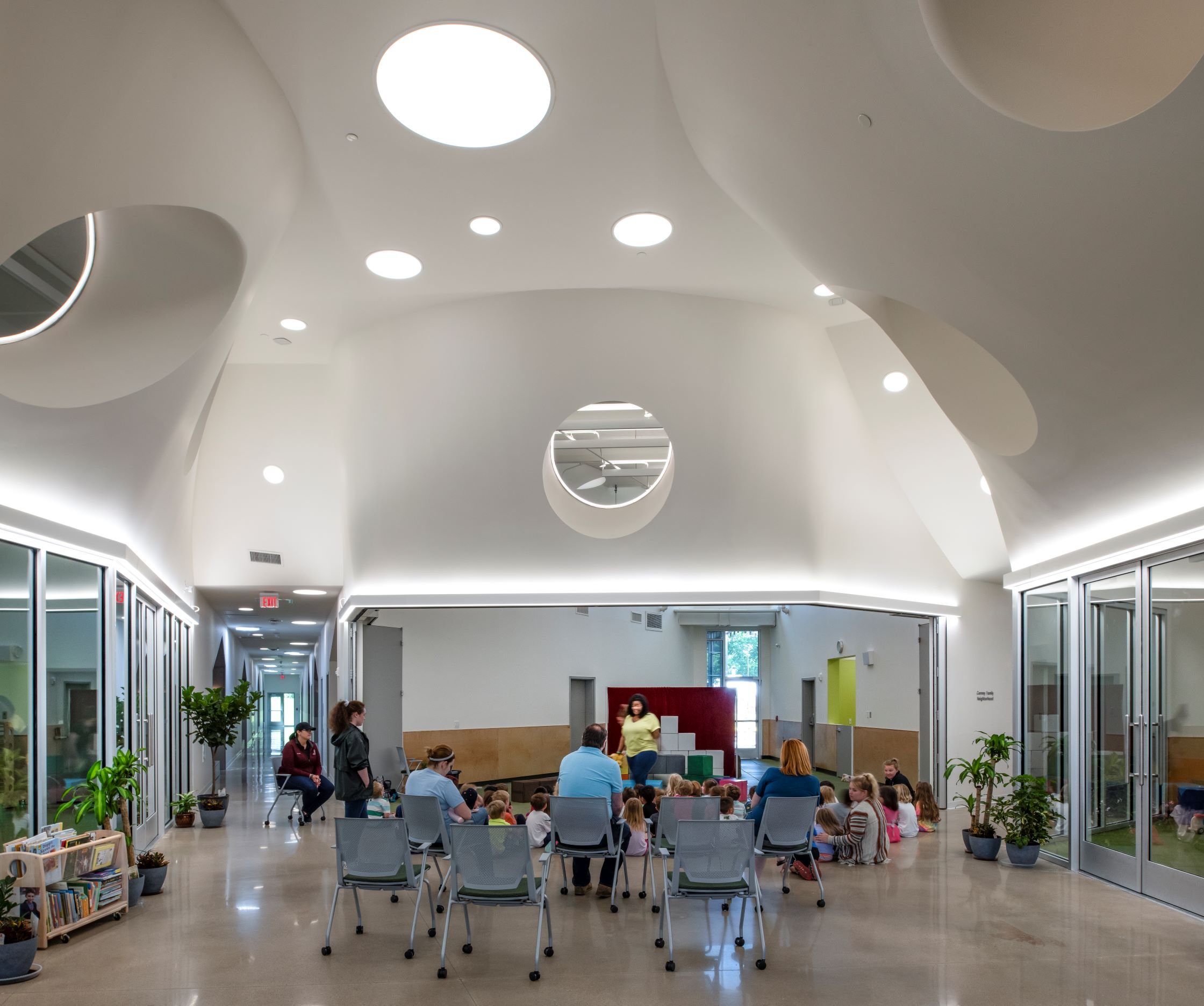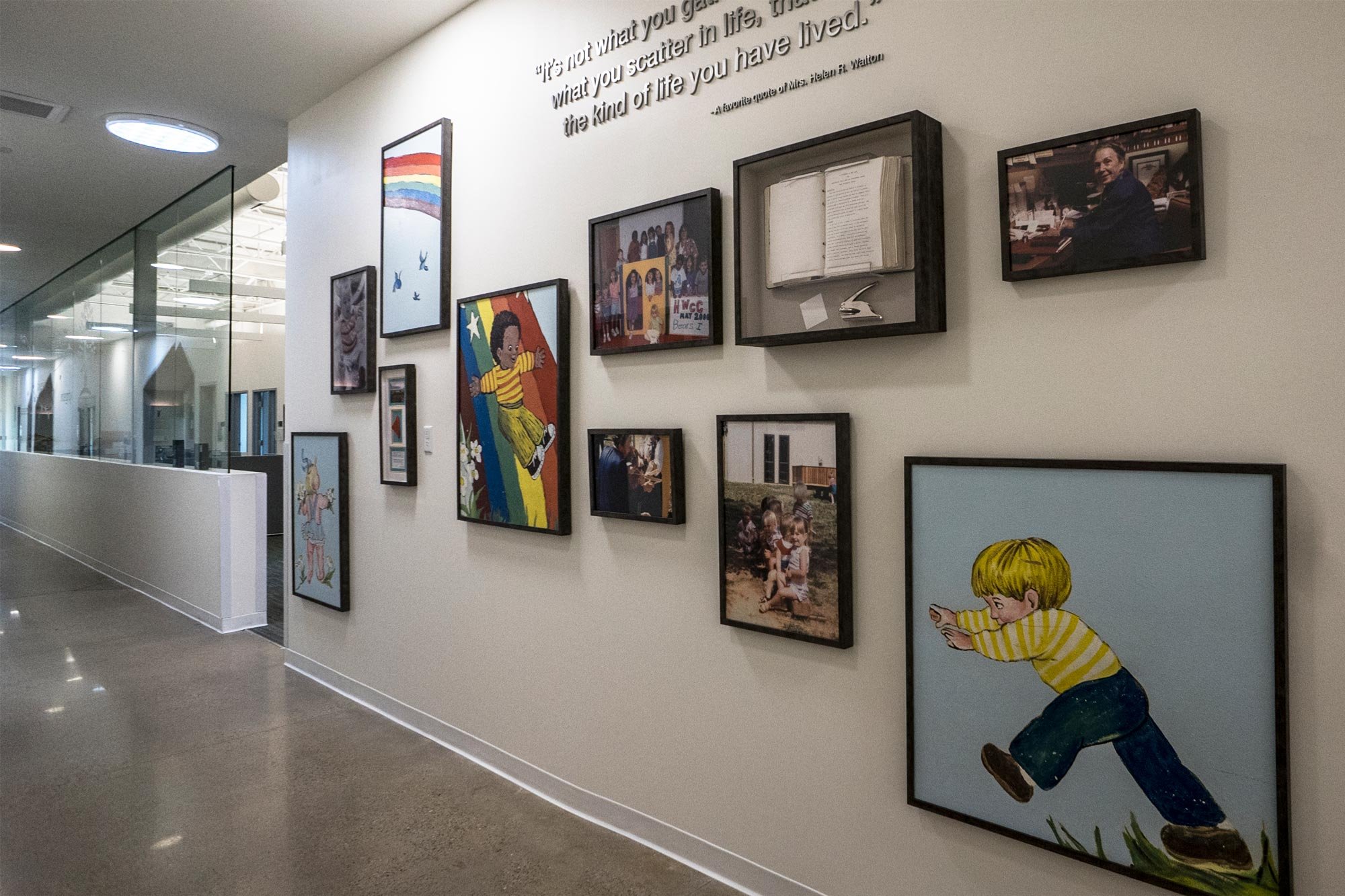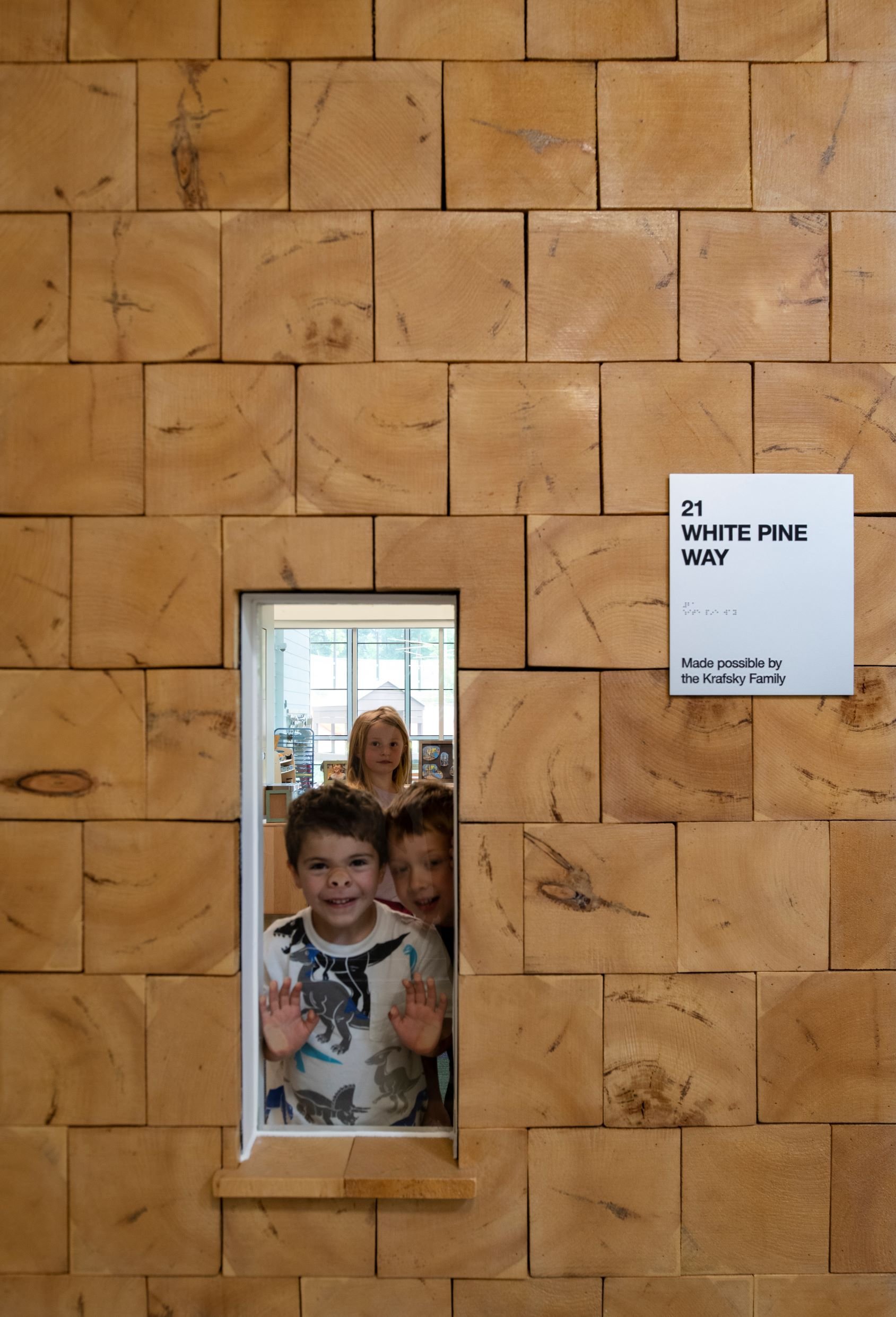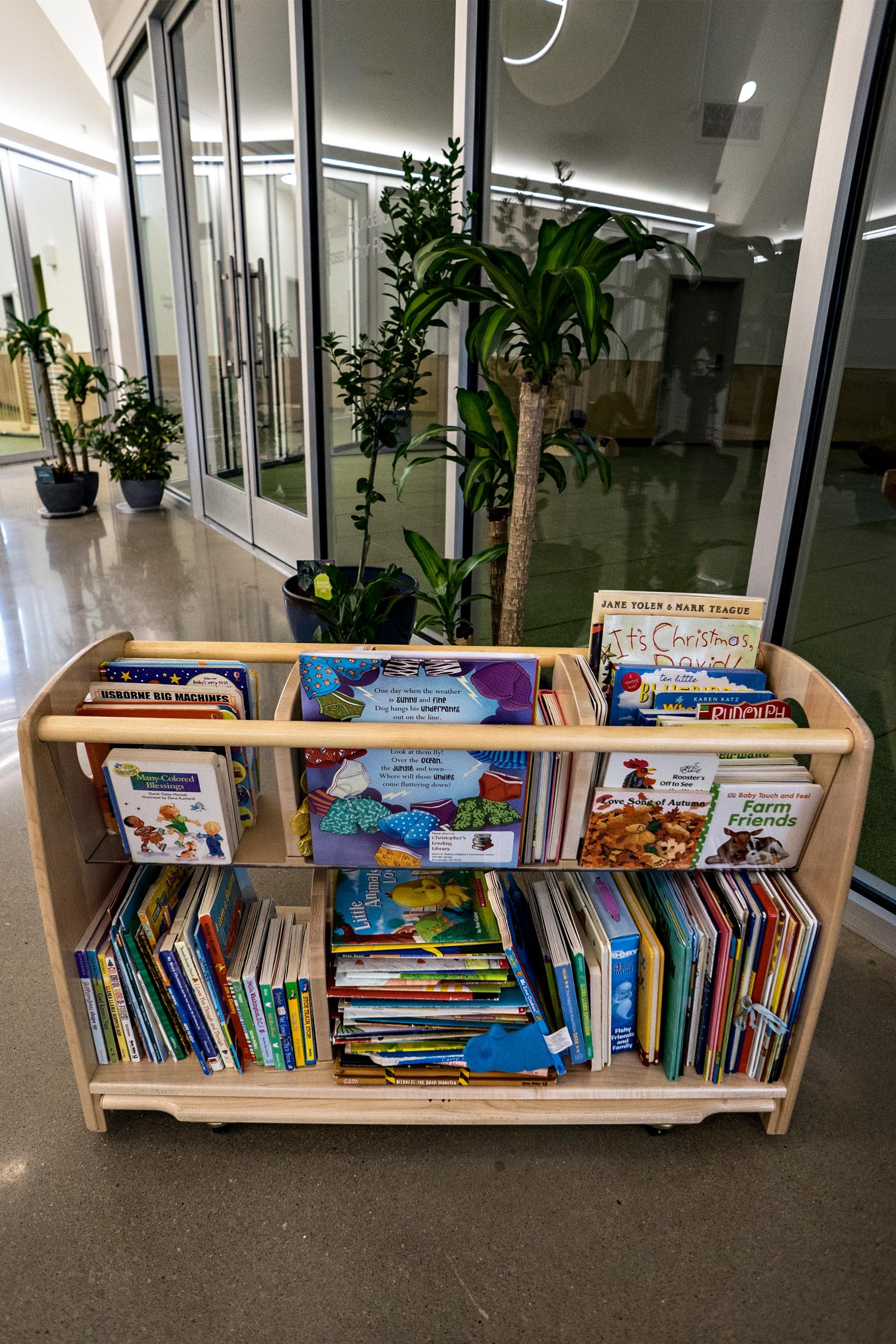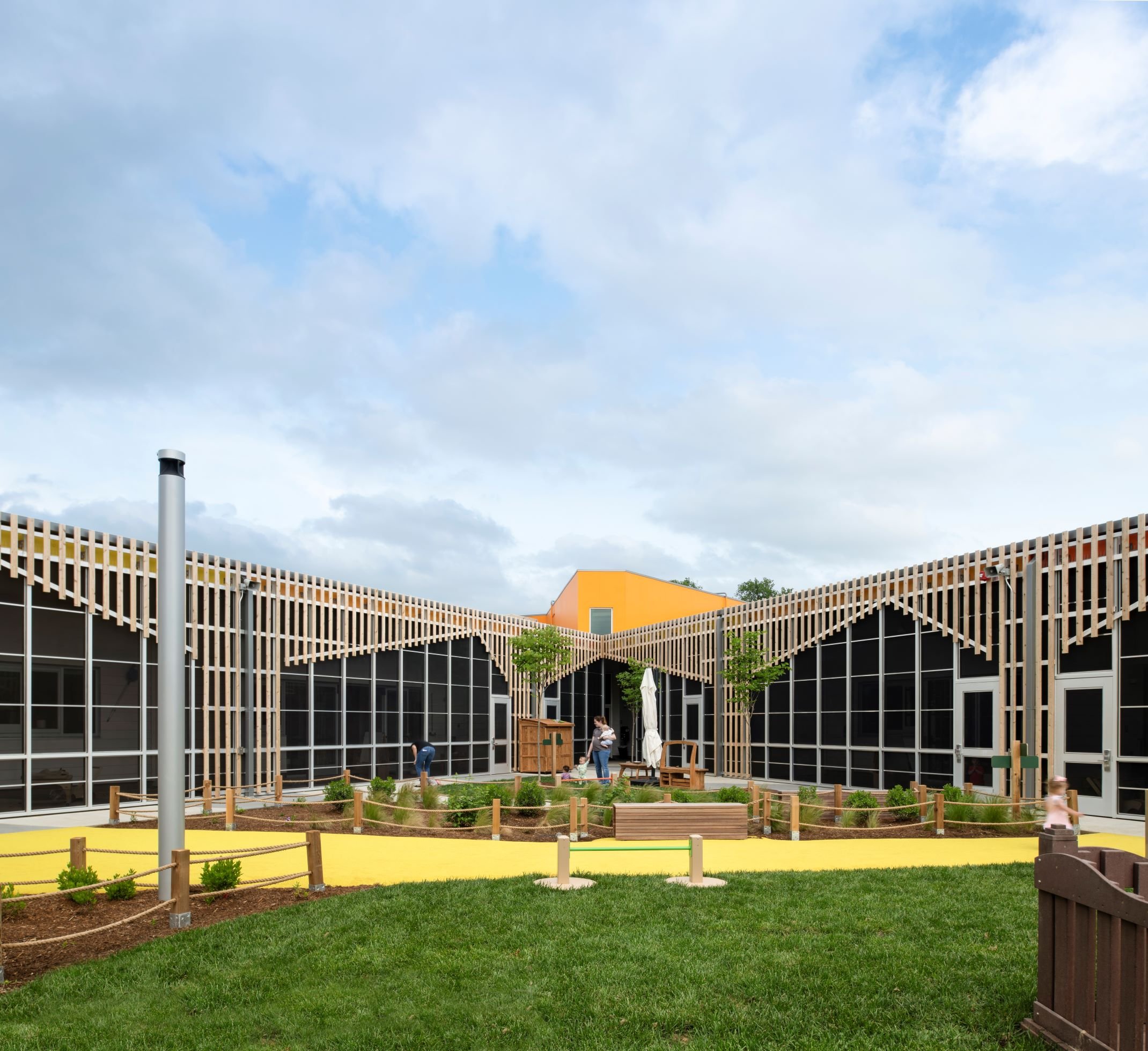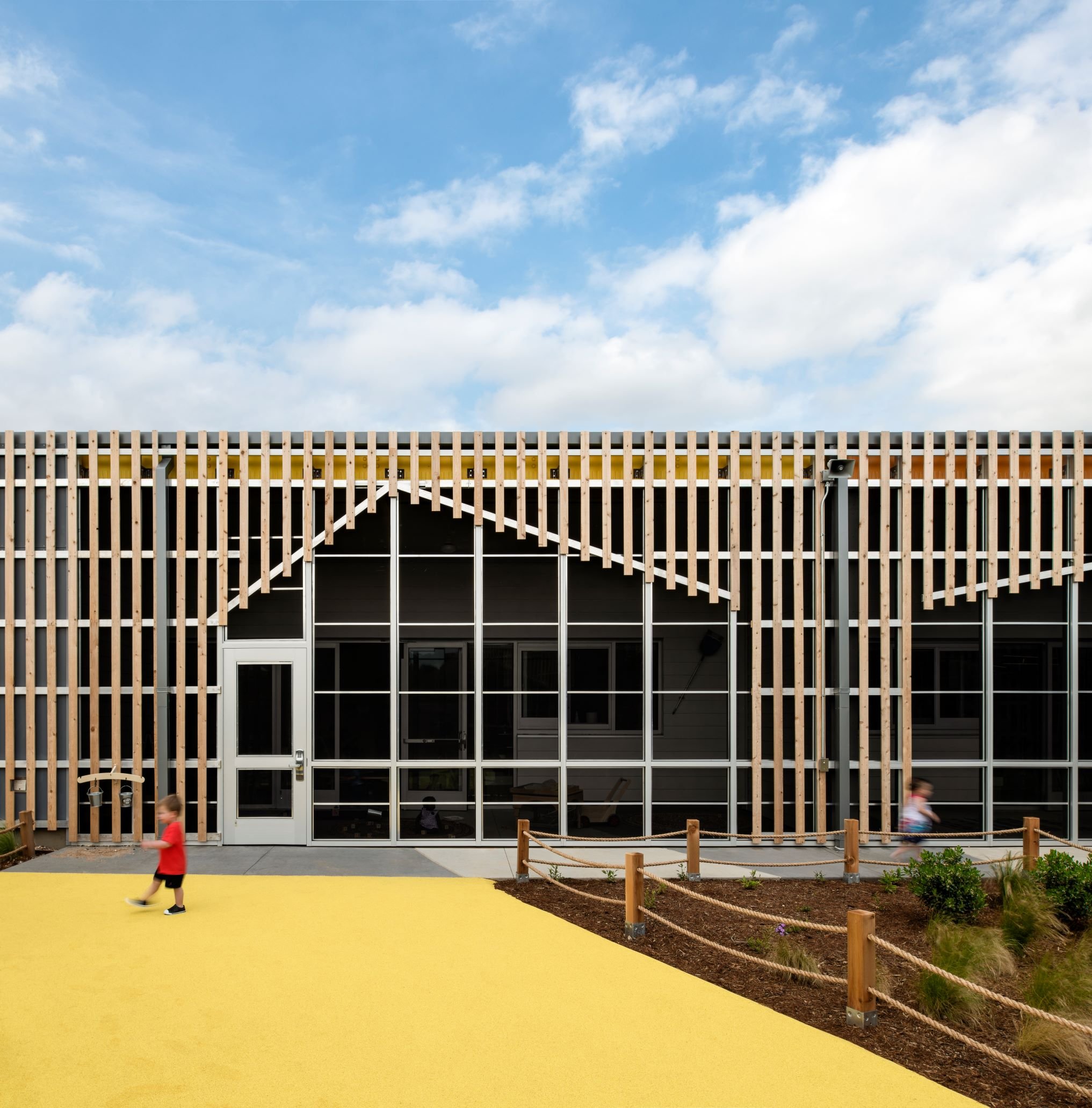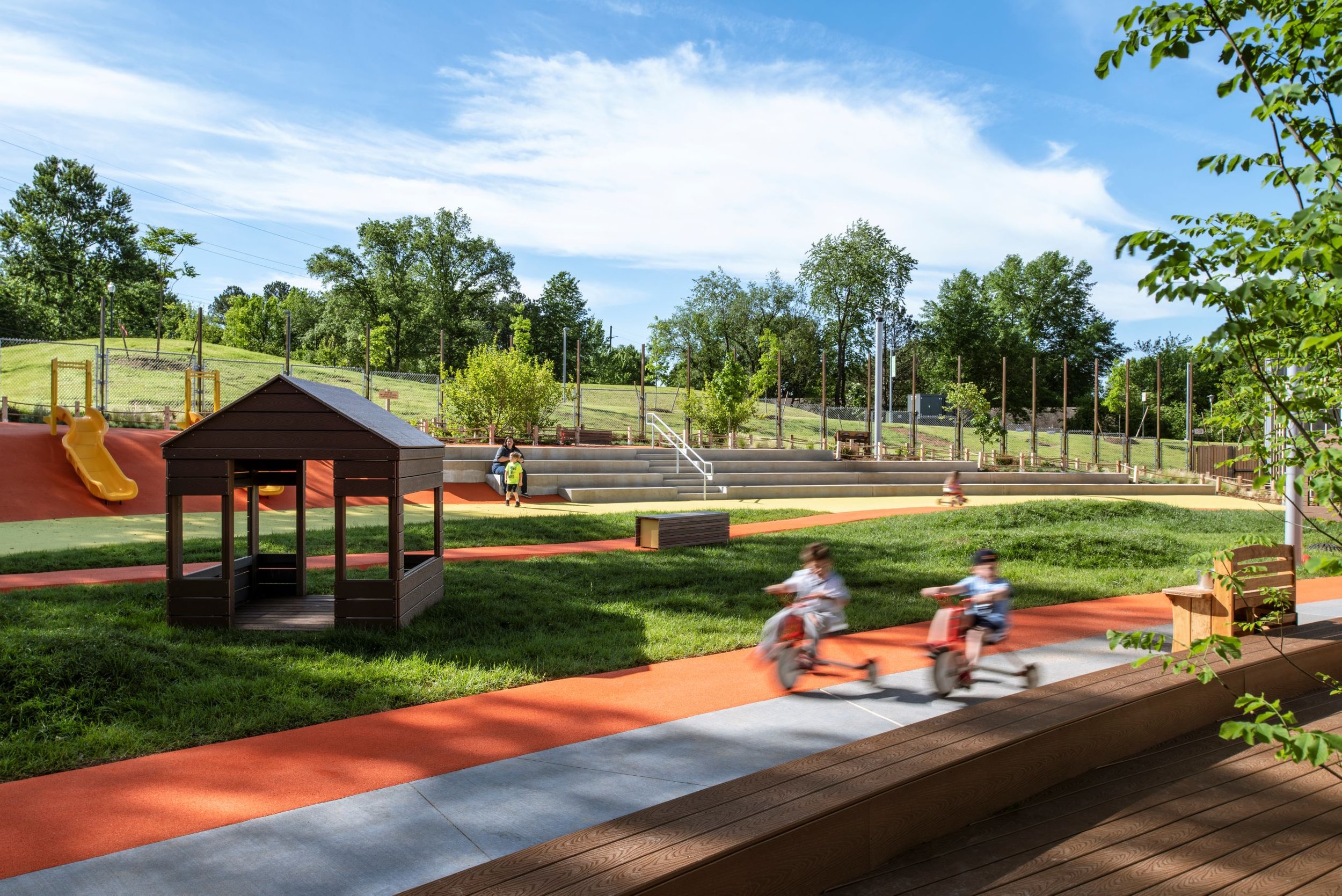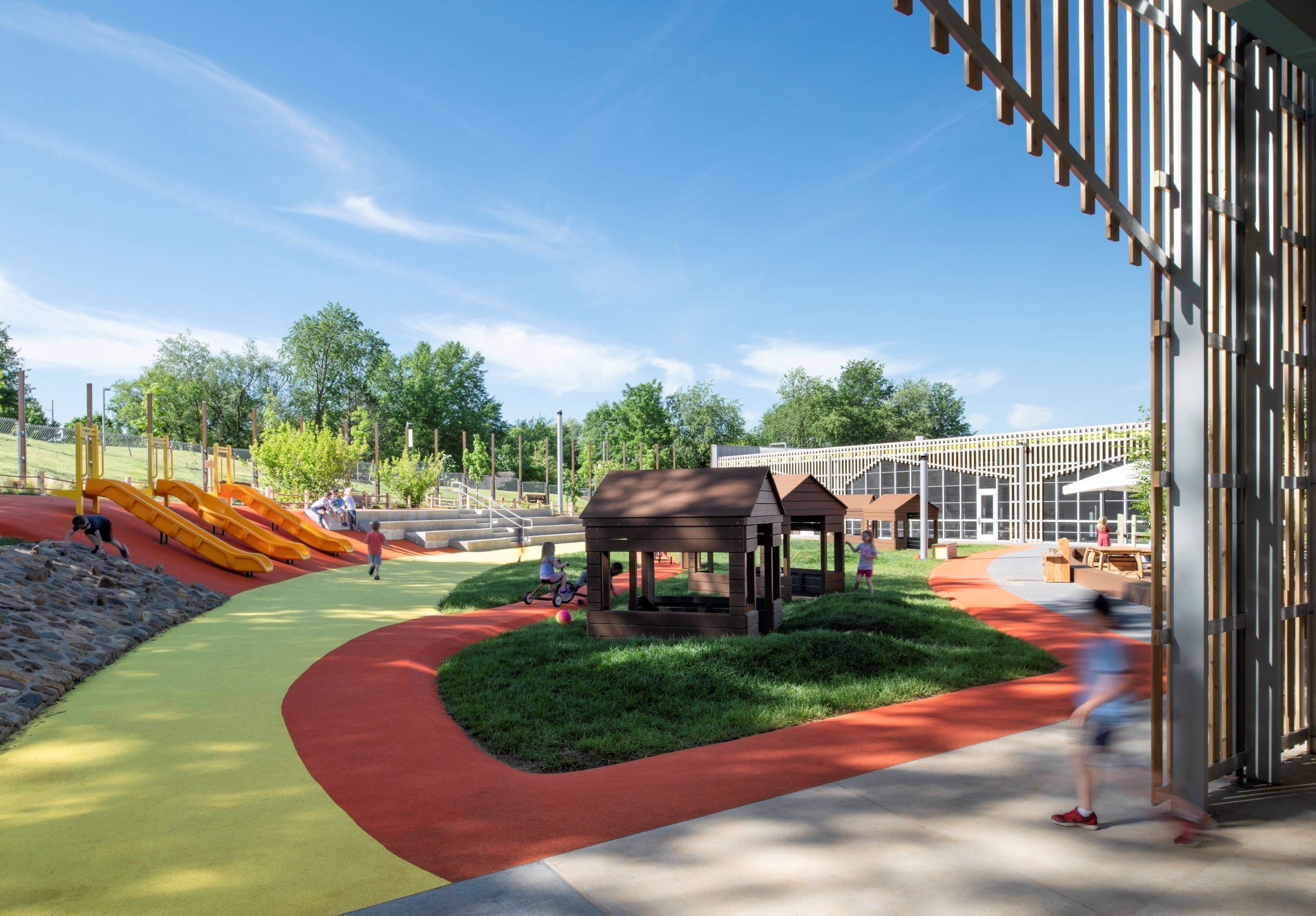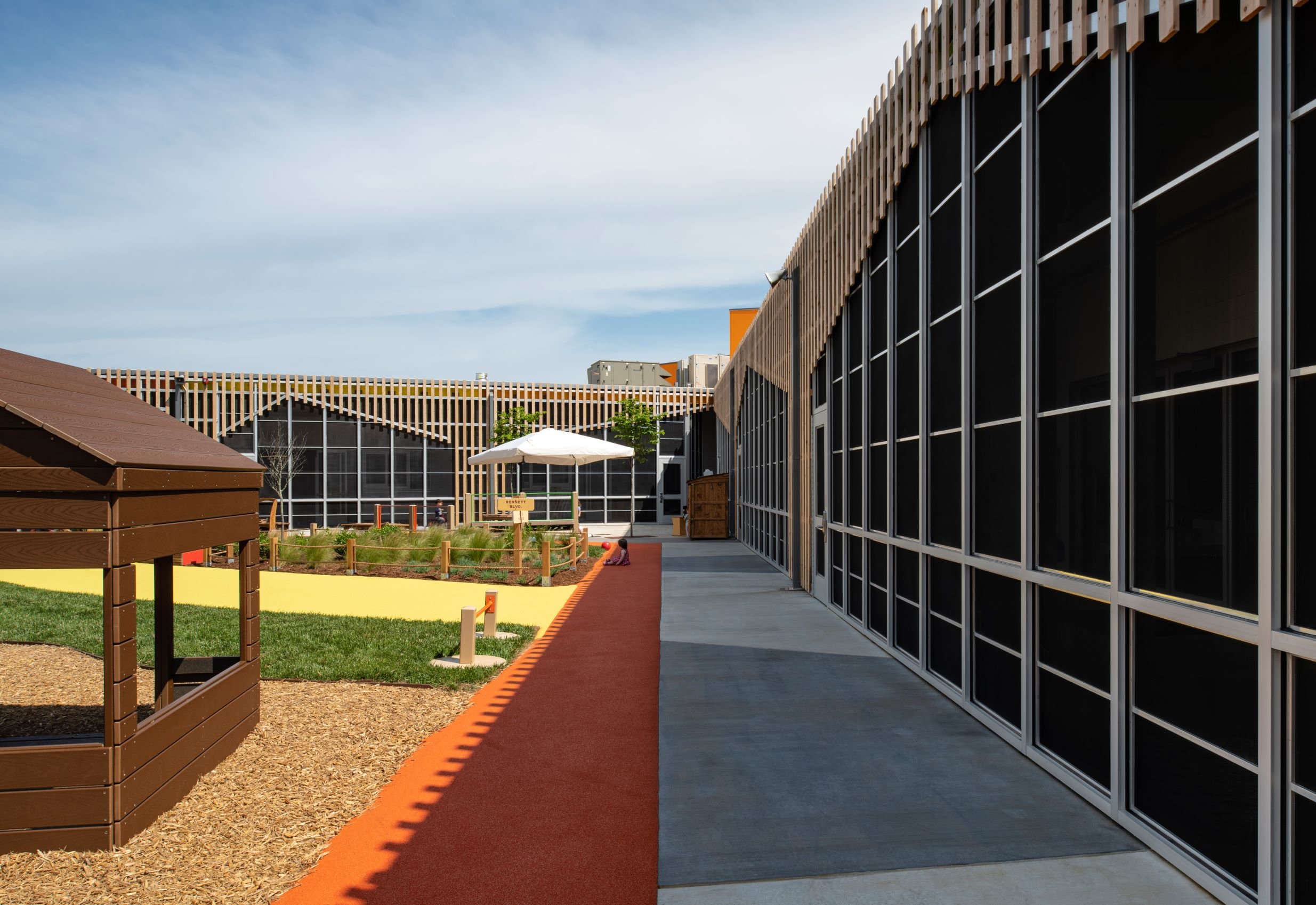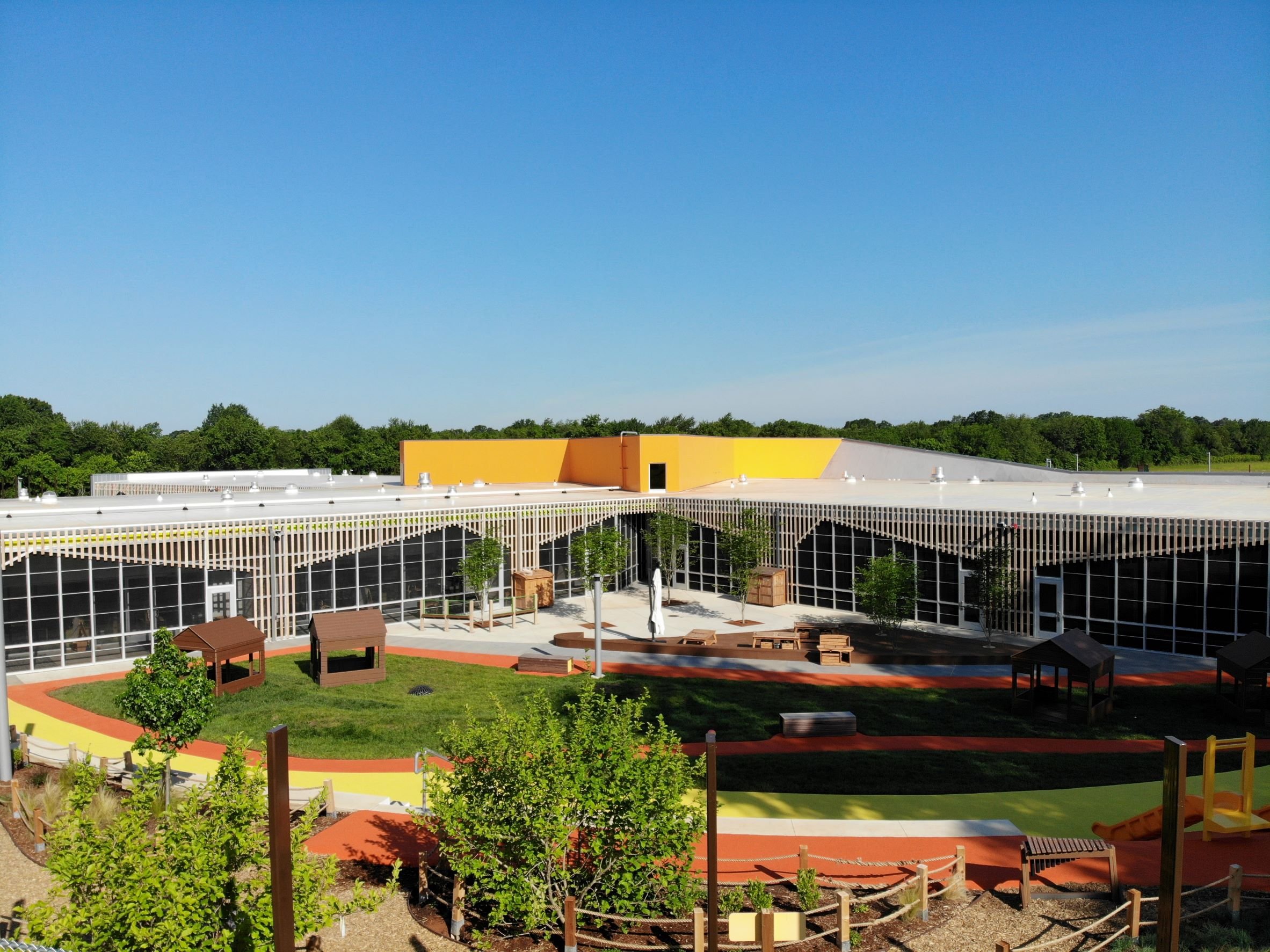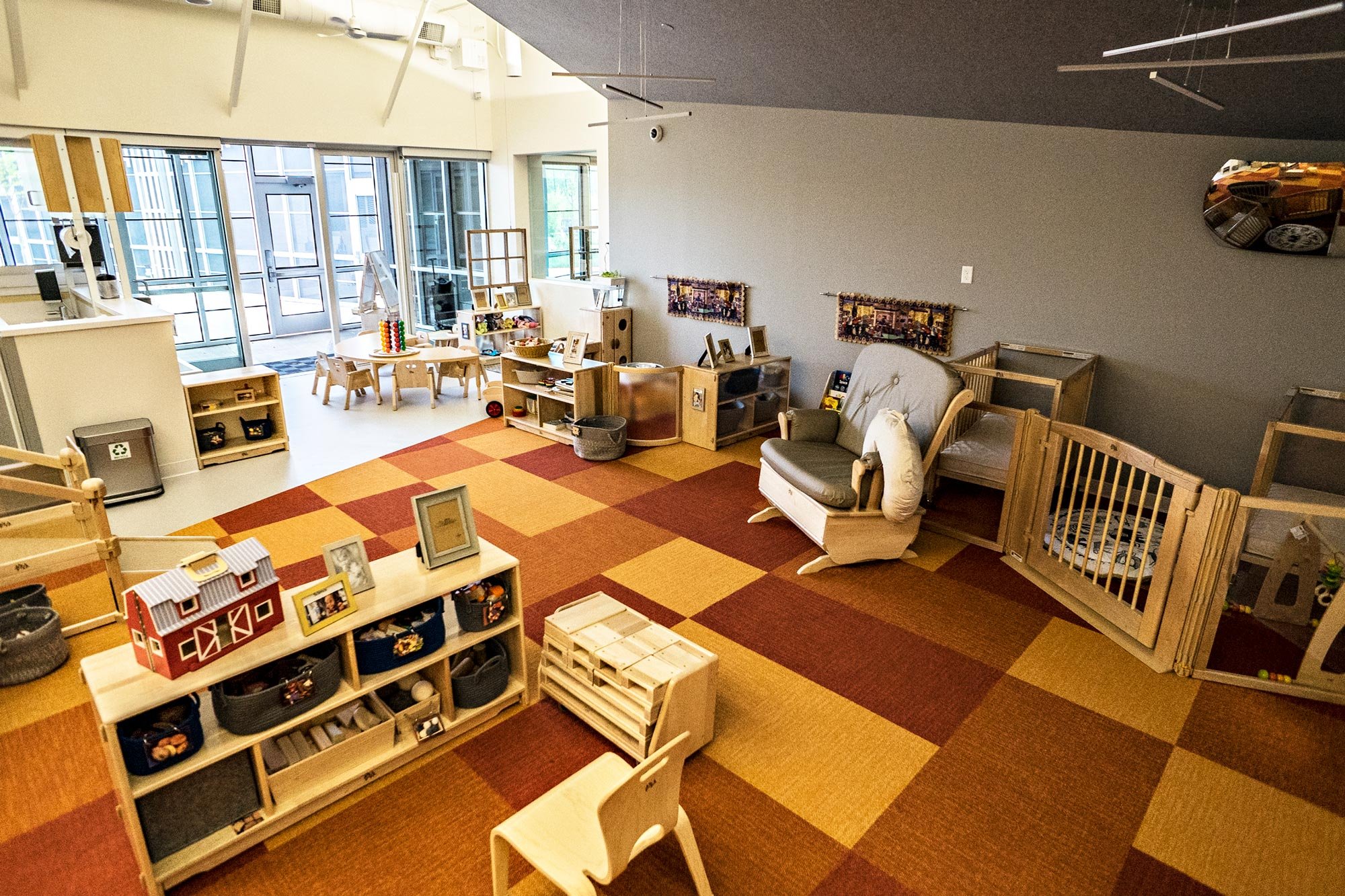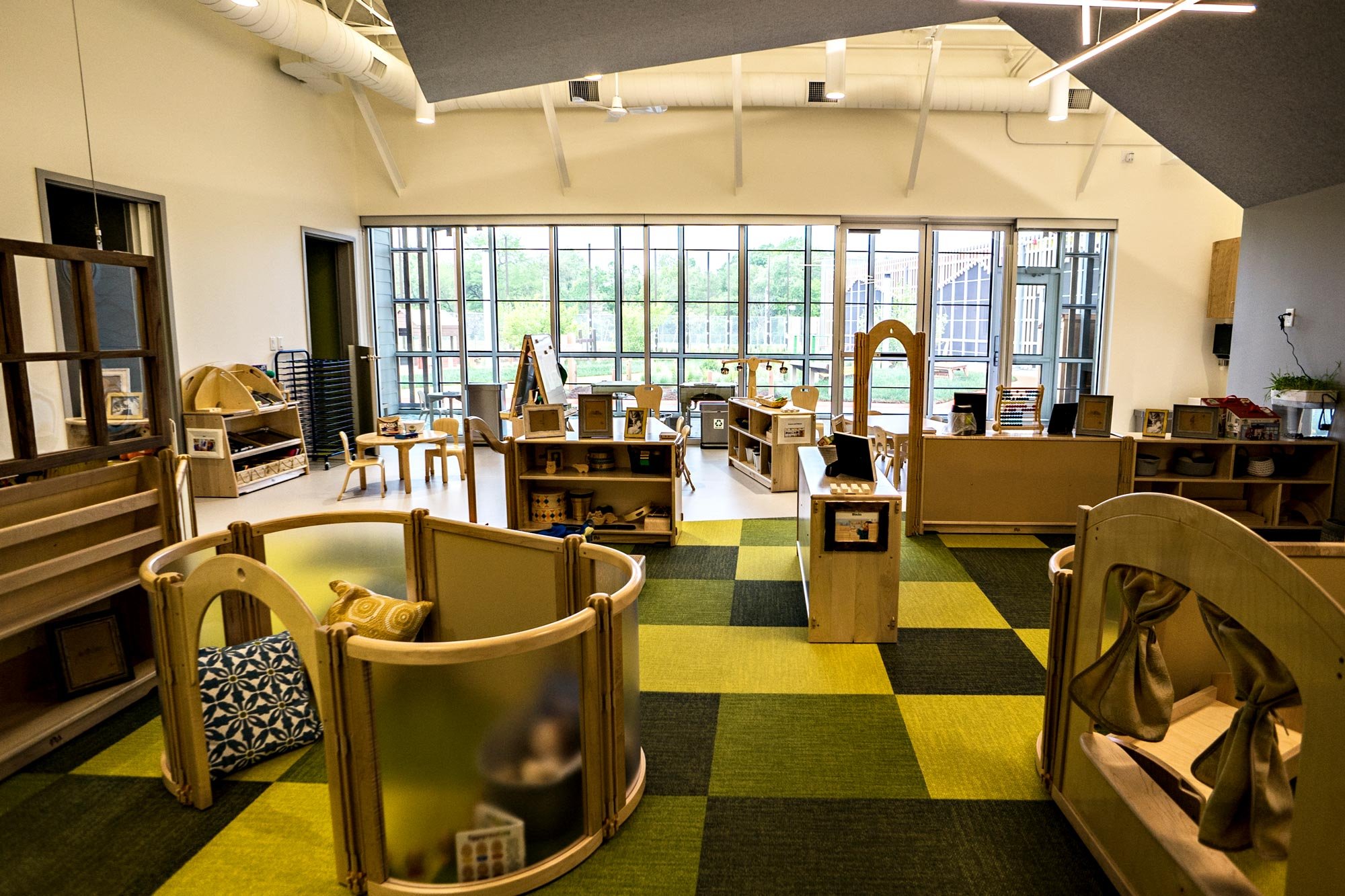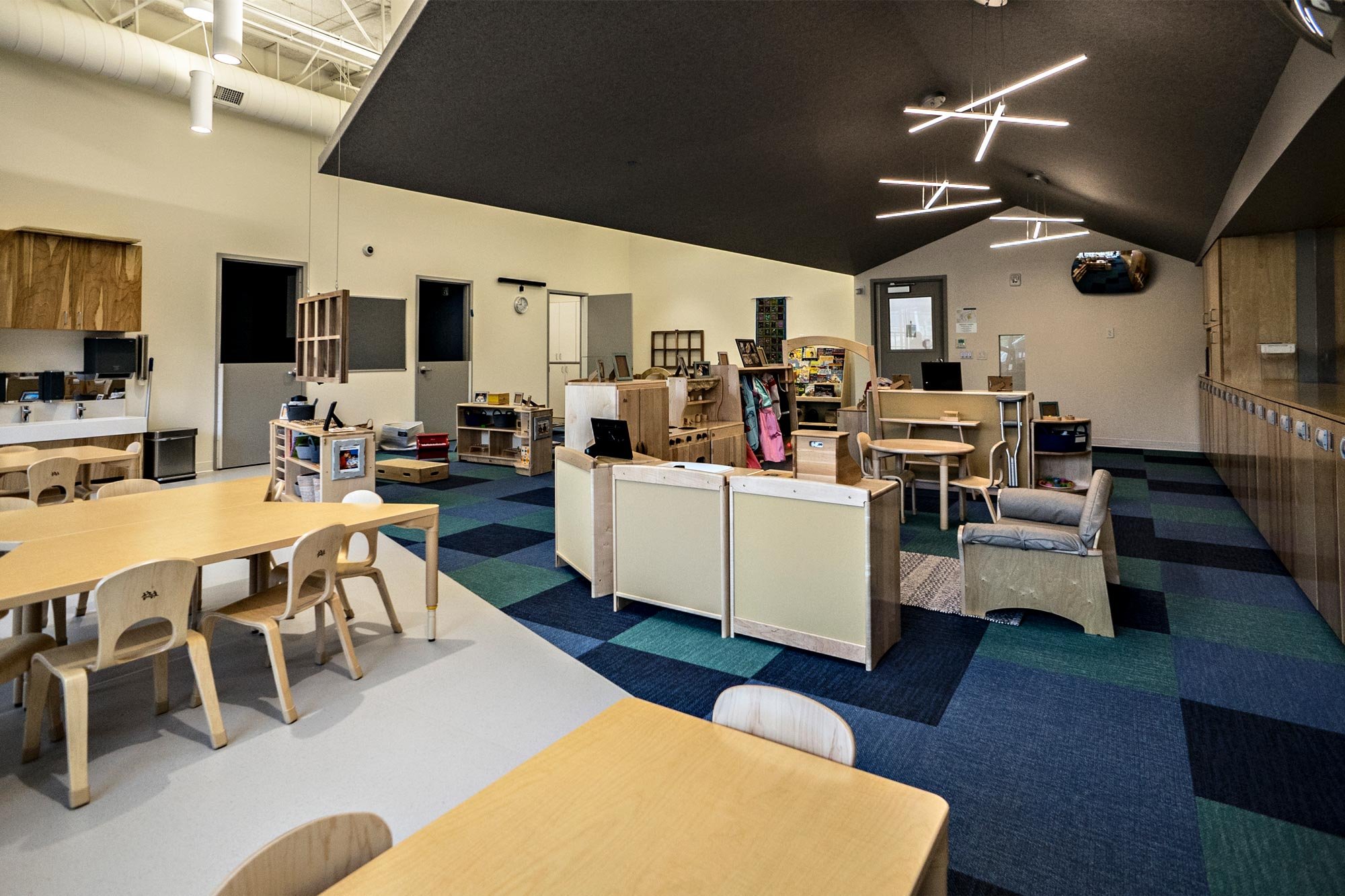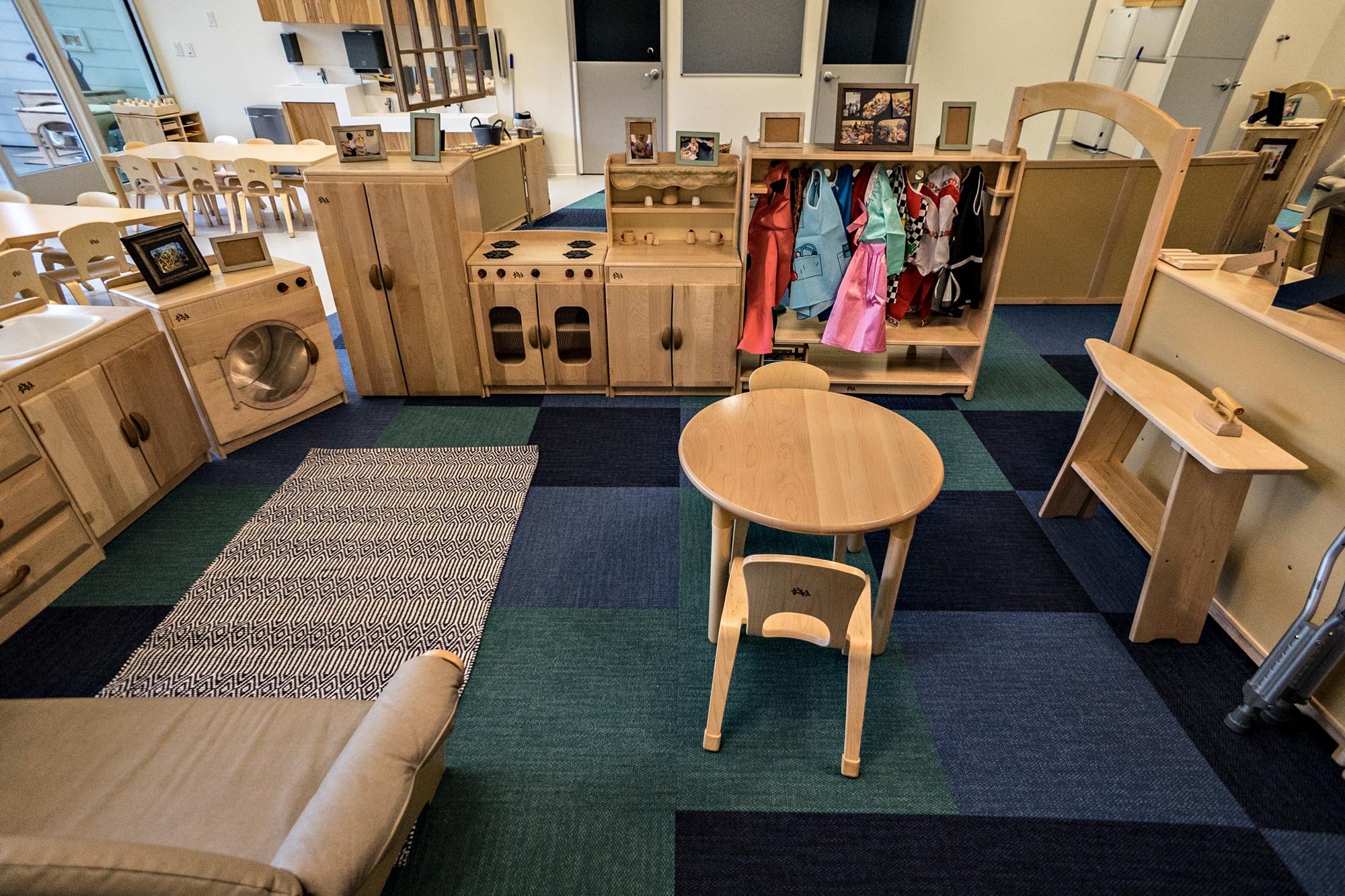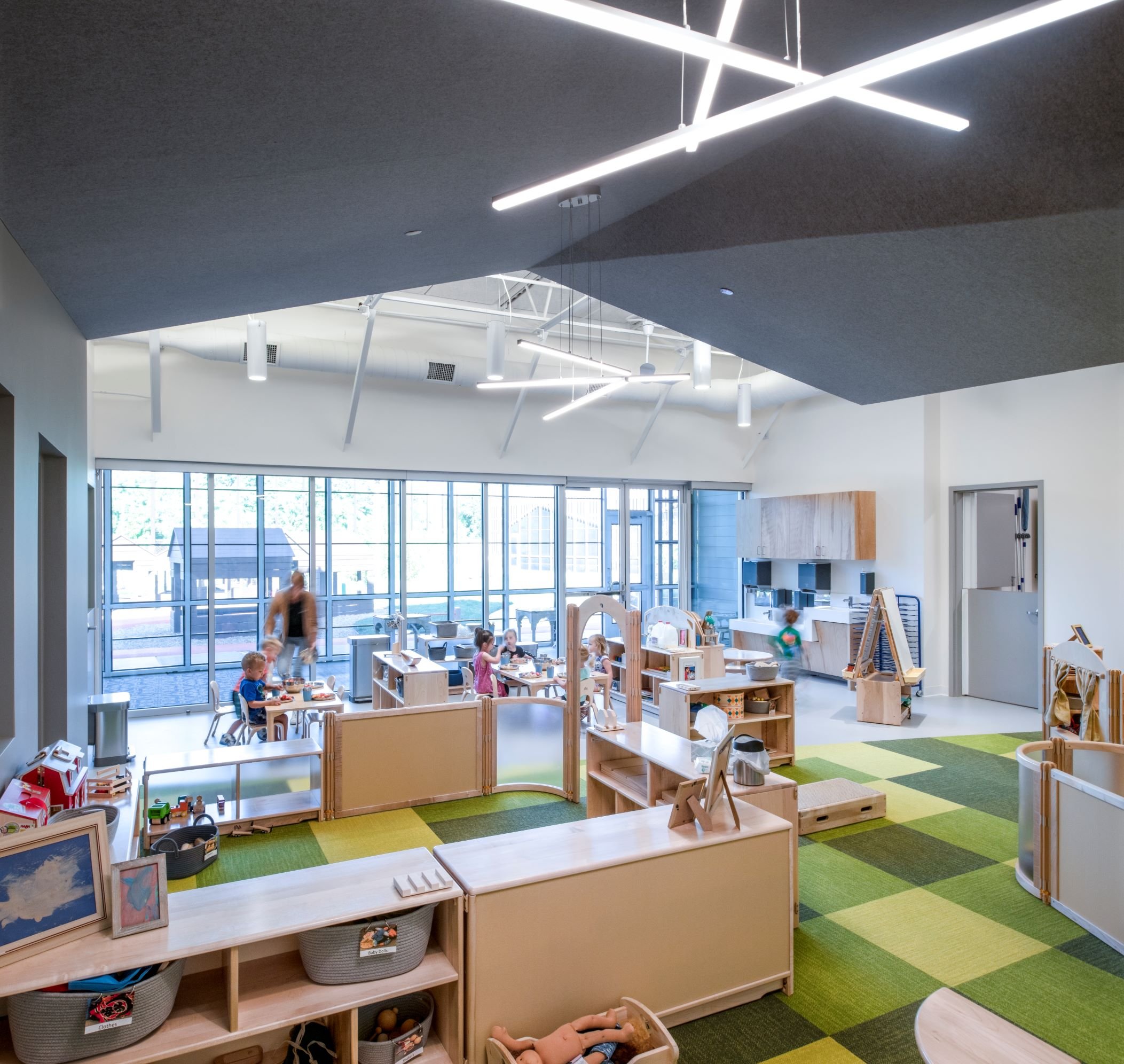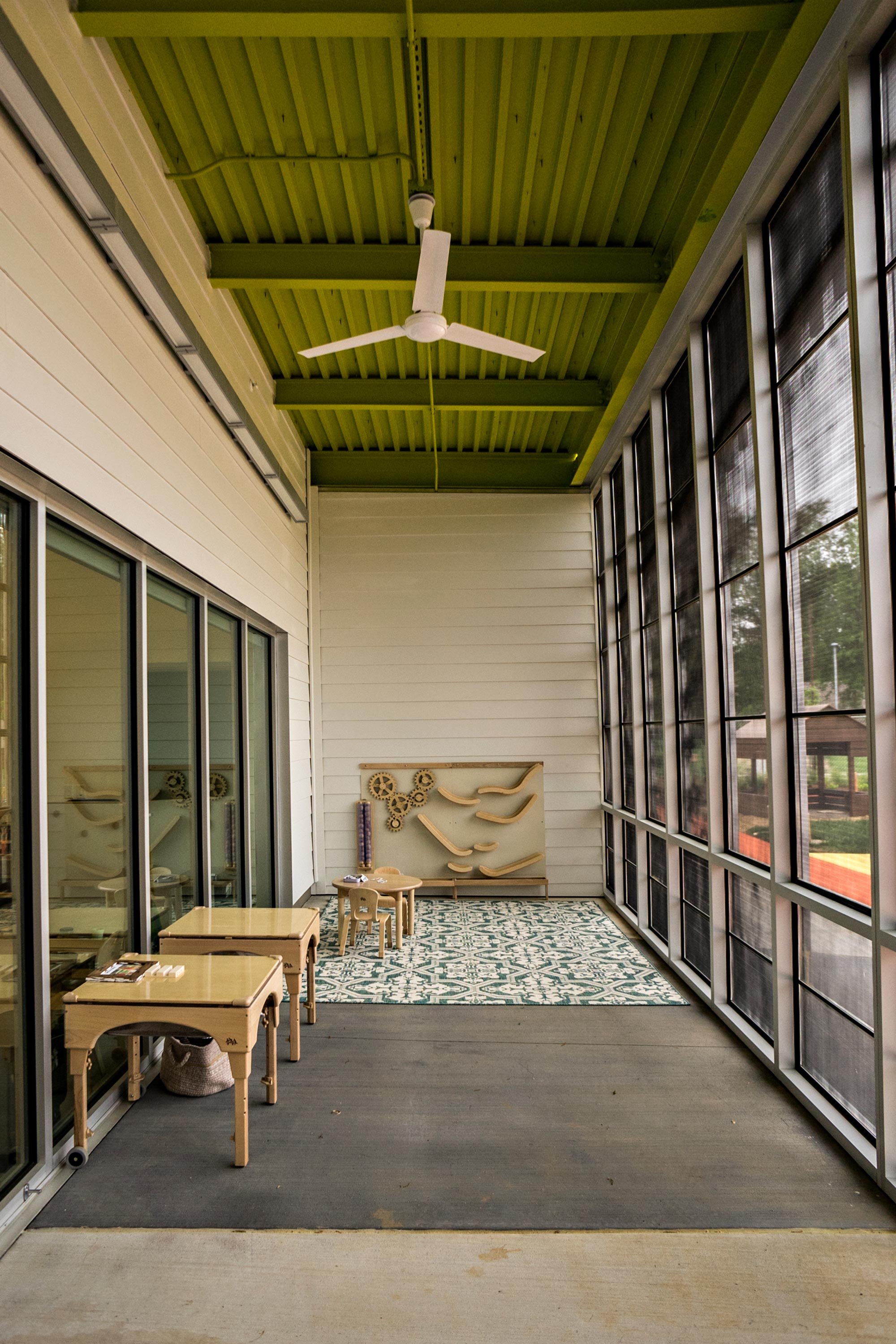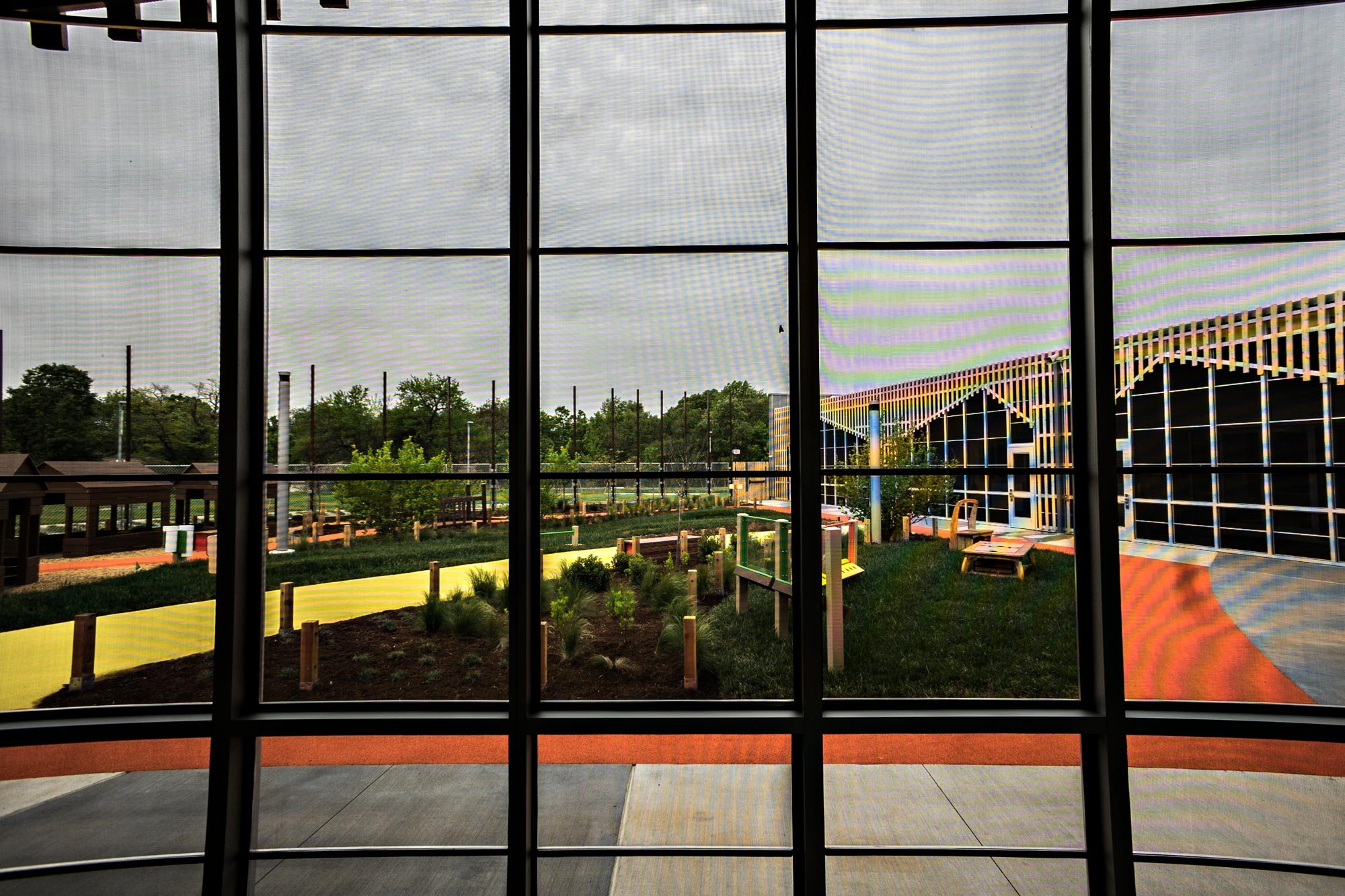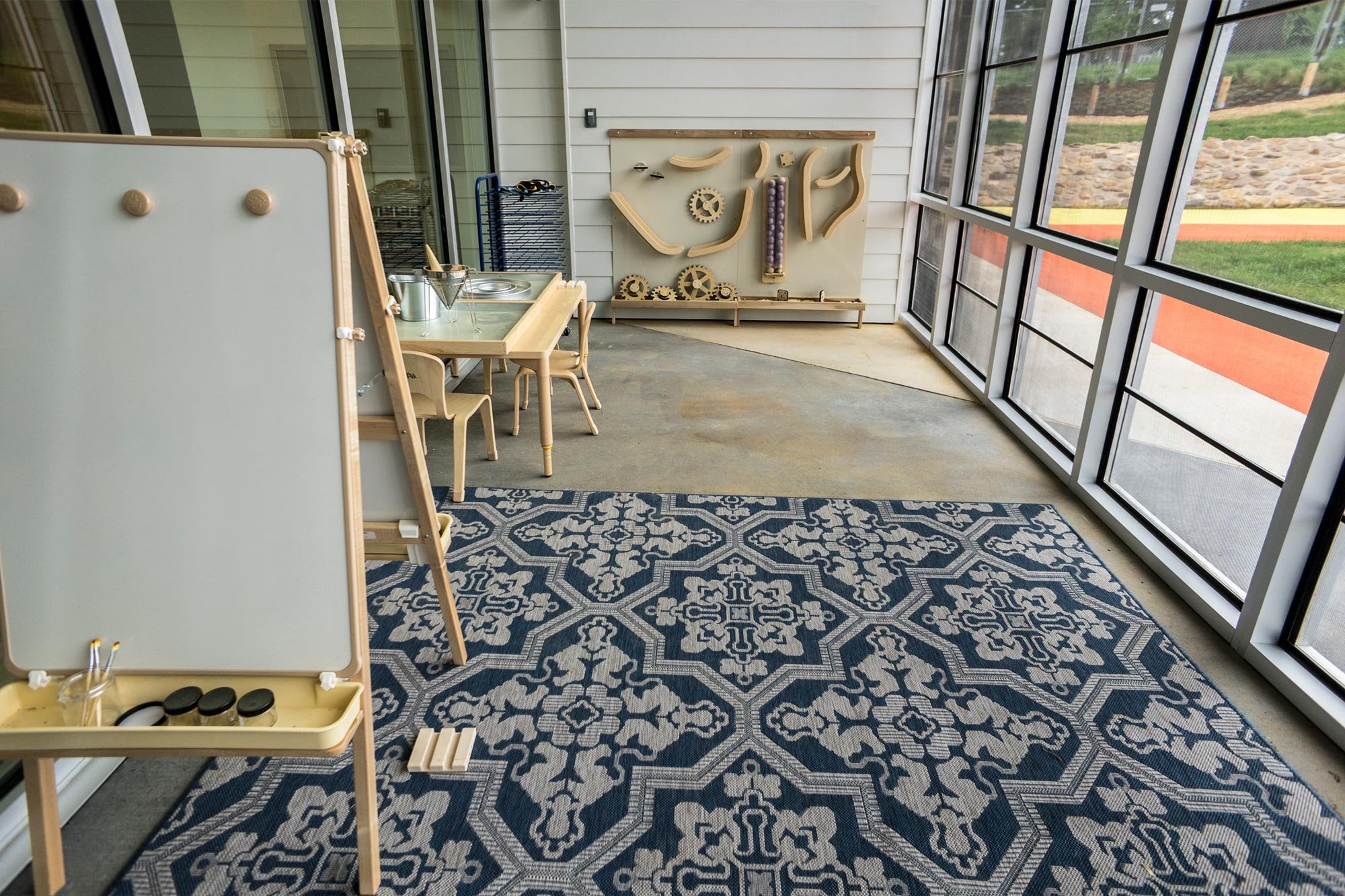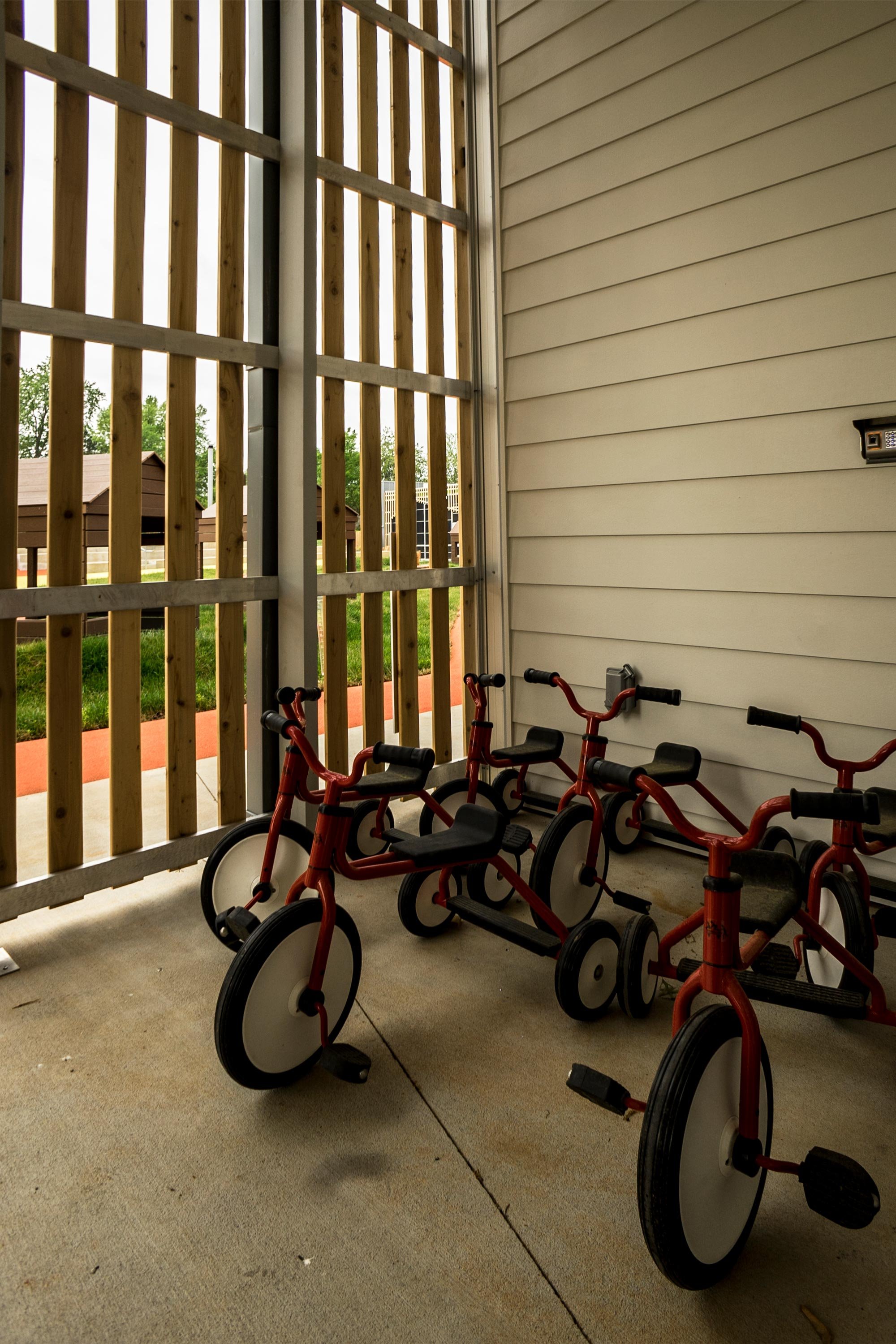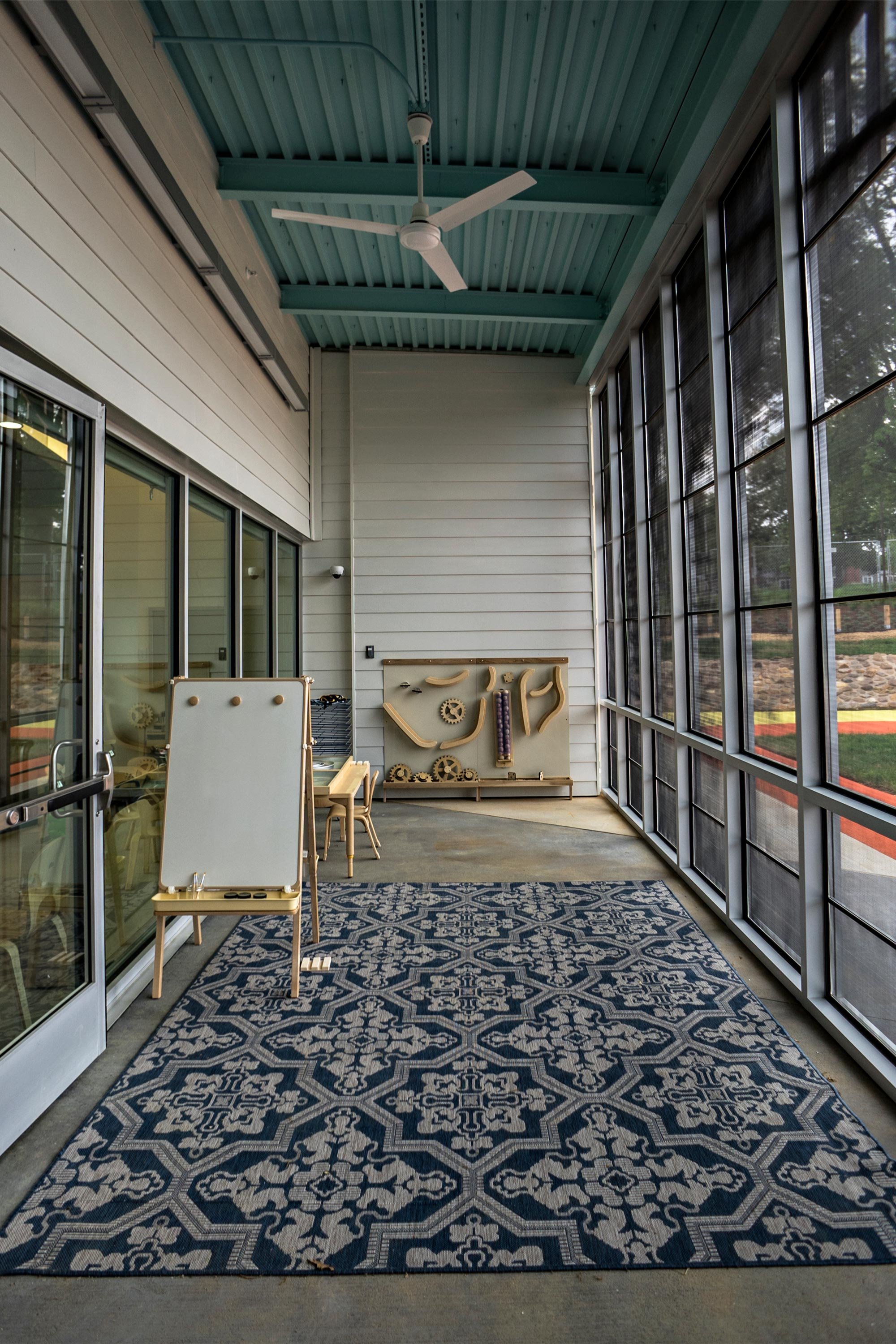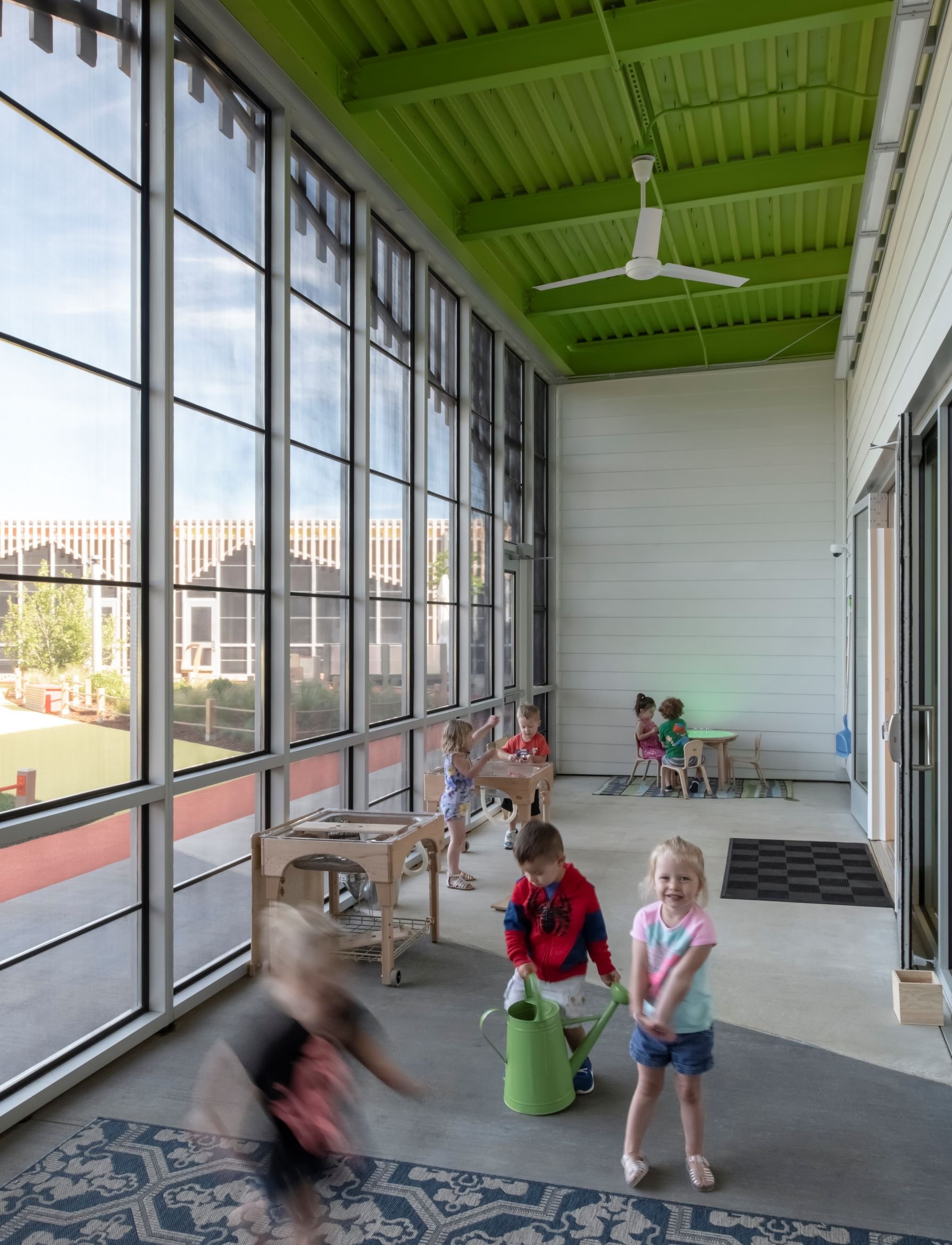Our
Healthy Campus
Use Healthy Materials, Not Plastics
Bisphenol A, more commonly known as BPA, is in the lining of most canned food and 'shatterproof' plastic cups and pitchers. BPA is no longer used in US baby bottles or sippy cups, but some replacement plastics are suspect. It leaches from materials when heated, scratched, or exposed to acidic food. Even low levels of BPA can lead to prostate and breast cancer, reproductive problems, diabetes, and obesity.
Helen R. Walton Children’s Enrichment Center avoids plastic products and toys, focusing on those made from natural materials such as wood, cotton, wool, cork, rubber and metal. We use solid wood furniture, materials with natural/organic fibers, and mineral-based paint. Children eat and drink from child-sized stainless steel plates, bowls, cups and silverware, and sippy cups have silicone lids. We use organic rubber for teethers and ice packs and organic cotton or silicone bibs. All materials and products are selected based on the health of infants and children.
Expand Healthy Practices.
Rethink the conventional basis for play, art, learning, cleaning, and maintenance. Maintaining a healthy environment then becomes an ongoing task throughout the life of the building. From classroom furnishings, to art supplies, to cleaning products, all materials should continue being evaluated for their affect on children’s health.
Helen R. Walton Children’s Enrichment Center uses only fresh or frozen foods, and cold water for drinking and cooking. We use non-toxic art supplies approved by the Art and Creative Materials Institute (ACMI). We use art supplies in well-ventilated spaces with windows and/or fans.
We use a mineral based paint and VOC free building materials. Every room is well ventilated with screened windows, outdoor classroom and ceiling fans. All furnishings are Indoor Advantage GOLD certified. We eliminated air fresheners and scented soaps and detergents. We ask staff not to wear perfumes and other scented care products.
We use cleaning, sanitizing & disinfecting materials that are organic & approved by Green Seal. We use microfiber cloths & mops. We use an integrated pest management system, bait traps, and when necessary, organic sprays. All families, guests, staff and delivery trucks must turn off their vehicles during drop off and pick up times. Our HVAC systems are serviced quarterly to maintain air intakes, cleanliness of the system and exhaust, and replace air filters.
Define Place.
We root each child’s experience in the local ecology of Arkansas, through materials and language. Each classroom is named after a native species of tree. The wood is featured at the entrance to the classroom, with a sign that talks about the native tree. The live tree is also planted on our campus. Our three outdoor playscapes models the flatlands, plateaus and woodlands of the Ozark Mountains.
Healthy Eating Habits.
Sponsored by Tyson Foods, Inc., the hands-on kitchen, built at a child’s level, is used for cooking and science activities. By incorporating nutrition into the curriculum, we nurture lifelong healthy eating habits. Our chef teaches the children lessons about the garden and composting. Once a fruit/vegetable is harvested from the children’s garden, the children bring it into the children's kitchen to prepare the food. The food is then cooked in the main kitchen's oven, where it can be viewed from a window in the children's kitchen. The children get to enjoy the food they prepared, giving them a sense of ownership, which makes them more likely to eat it. Then, the food is added to the center menu. A weekly newsletter is also sent to parents with the recipe and a song for reinforcement at home.
Instill a sense of community.
Our founder Helen Walton often said, “it's not what you gather, but what you scatter that tells the kind of life you have lived.” We acknowledge our beginnings and the contributions of others that has shaped us into who we are today. Our front walkway and tree sculpture in the front lobby honors our supporters and advocates who made our new campus possible. From the lobby, you step into the heart of the Center, which is a flexible, multi-use space for gathering and play. The Hub also serves as an event area for our innovative and collaborative community. This space truly embodies who we are as an organization and community.
A wall right off the Hub celebrates our founder, history, and old
campus. The building is made up of 4 wings that we call neighborhoods, and each neighborhood is home to classrooms, which have a unique address, such as 21 White Pine Way.
At the end of each day, children can check out books from the lending library or a brain bag to play with at home, and then bring it back the next day for other children to enjoy.
Don’t have enough money to make dinner tonight? Stop by our community refrigerator, where we package leftovers from lunch for families in need to take home.
Get Kids Outside.
Our outdoor playscapes are easily accessible from each classroom’s porch, and are the most dynamic learning environment. They are adorned with trails, bike paths, wooden gazebos, native plants, musical instruments, and hillside slides to inspire the senses and spark the imagination.
Create Home.
The entrance to each classroom is in a neighborhood, and the classroom has a unique address, like 9 Aspen Way or 18 Elm Avenue. Each classroom is a home away from home, filled with treasures to explore, magical moments to experience, and dreams to discover. A felt lined room within a room with a lower ceiling fills children with comfort. Learning centers create nooks across the room, where children can find toys like wooden blocks, wool dolls, books, and crayons made from beeswax. Rooms have blurred lines between indoor and outdoor learning, and a large screened in porch leads directly to the playscape.

